The post In The Heart of Mezcal appeared first on The Expeditioner Travel Site.
]]>
“This boom started with the hipsters.”
Eber Villalobos guides me down an artfully graffitied street in Oaxaca City, talking about mezcal’s current boom.
“Chilangos (people from Mexico City) come to Oaxaca for vacation and try the mezcales here. Bar owners started bringing mezcal back to the D.F. and made it trendy. It’s partly a way to touch a piece of our history, partly to proclaim Mexican identity and it’s partly a badge of honor. If you bring something rare to the wider public, you get to say I explored this place and look at what I found.”
A former chilango himself, Eber immigrated to Oaxaca five years ago and founded Ánimas Mezcal, a small brand that markets the mezcales made by area distillers, or mezcaleros.
One could hardly find a better place to make mezcal than Oaxaca, nor a better time to do it than now. Oaxaca provides the ideal soil and climate for the agave, known here as magüey, from which mezcal is distilled. The various species of magüey take years to mature and right now the mezcal business booms from so many magüeys maturing within a relatively short time of each other. Rarely have so many mezcal varieties been available and never before has so much mezcal crossed the border to the wider world.
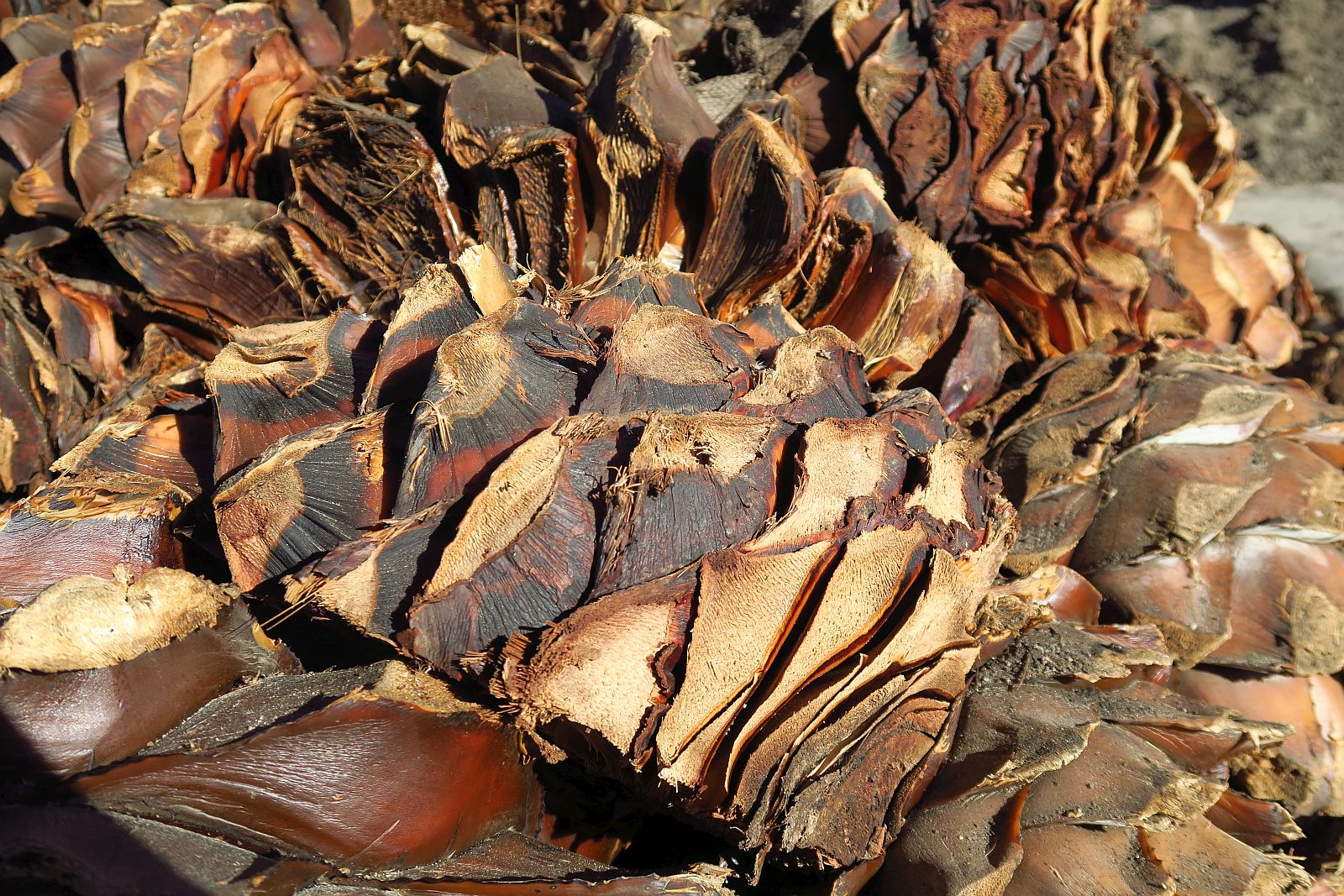
Mezcal wraps its history in myth. The word itself comes from Mexico’s indigenous Nahuatl language and translates rather unceremoniously to “oven-cooked agave.” In its creation myth, a lightning bolt struck a magüey heart, or piña, instantly cooking and releasing the liquor within. Although the magüey had been used by Mexicans to make alcoholic beverages such as pulque for millennia, the first recorded distillation occurred during the Spanish conquest.
During their conquest of Mexico, Spaniards introduced the modern distillation techniques and technologies of the day. Later, mezcal underwent periods of prohibition as Spanish wine producers fought against threats to their profits. During each prohibition, defiant Mexicans continued to make mezcal and the drink acquired both revolutionary and indigenous associations. We are Mexican, proclaimed makers and drinkers alike, not Spanish. Your laws will not break us. We are united and we will rise victorious. History has proven the revolutionaries right, and to raise a glass of mezcal is to raise a fist to imperialism in all its forms.
Mezcal still plays the guest of honor in modern of ceremonies, from weddings to business meetings, to the ofrendas erected outside houses and in cemeteries during the Day of the Dead.
The dull grey ribbon of Highway 190 leads us southeast from Oaxaca City and into magüey-studded hills in which hide dusty towns and villages that look more at home on the pages of a Cormac McCarthy story than on the surface of the world as I have known it.
Eber pulls off at a red-walled single story building situated on the side of the road. Pieces of farm equipment decorate the yard. A pile of corn husks dry in the sun behind a row of decorative magüey plants.
Dainzu, which means “magüey hill” in Zapotec, forms part of the collective that Ánimas represents. Leoncio and Octavia Santiago, Dainzu’s mezcaleros, lean on the open-air showroom’s counter and greet us warmly as we enter.
The first taste that Leoncio pours us is an espadín with a flavor smooth enough to be dangerous.
“This doesn’t taste anything like the mezcal that I’ve tried before,” I remark. “The other mezcal tasted either sweet or smoky, a bit like a scotch.”
“You must have tried it in El Norte,” Leoncio replies. “Americans like scotch whiskey and have grown accustomed to its flavor. When you try something new, you look for something familiar to hold onto. Most mezcales, though, aren’t smoky and Mexicans don’t really look for that flavor.”
Leoncio’s mezcales embody the idea of terroir, a word usually reserved to describe wine. Small glasses of espadín, cuixe, madre cuixe, tepeztate and tobalá take their turns on the counter. They impart flavors of sun-dried earth, dusty and pollen-laden plants and of hands whose palms will never truly free themselves of soil.
Leoncio and Octavia offer us snacks to accompany our drinks. This being Oaxaca, the snacks are chapulines and gusanos de magüey — grasshoppers and tequila worms. Octavia has prepared each dish with her own proprietary techniques and spice mixes. I would have paid handsomely for the recipes, but she says that some things cannot be sold.
“Do you ever put worms in your bottles?” I ask Leoncio.
“Never,” He laughs. “That was an old thing that became a story before it even had a chance to become a tradition.”
Leoncio explains that the worms, in reality, moth larvae, burrow into magüey plants and can ruin the harvest. During some long-gone infestation, magüey farmers took symbolic revenge on the larvae by drowning them in bottles of mezcal. The act never achieved tradition in Mexico, but the story took root north of the border and savvy salesmen play into it where the demand exists.
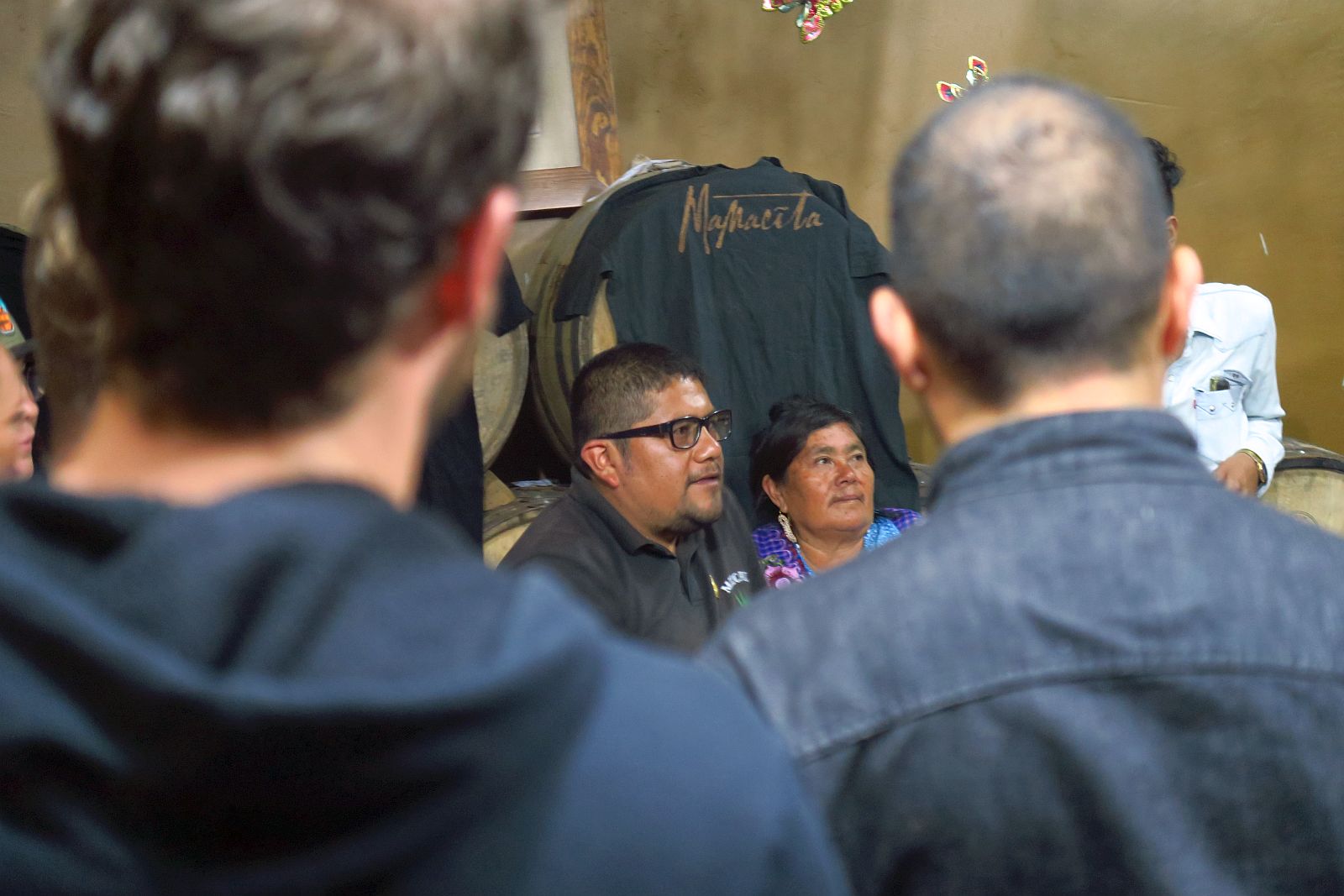
At a goat roast at the Los Javis mezcalería in Matatlan later that night, a restaurateur from Chicago raises a glass to mezcal’s future in the frozen north and to the profits it will bring him. As buttery strips of meat fall from a goat carcass that had spent the day wrapped in banana leaves and slowly roasting beneath the earth, he and his fellow Chicagoans congratulate themselves on mounting the rising tide of mezcal early.
While capitalizing on any trend is best done early, that of mezcal has a particularly narrow window. Mezcal production is limited by the very slow growth of the magüey. The fastest growing magüey, used to make espadín, matures in 8-12 years and those used for the rarer mezcales can take up to thirty years to mature. Add to this the agave’s limited growth area and the reason for rhythmic boom and bust cycles becomes clear.
Javier Hernández, the owner of Los Javis, shrugged when asked if he worried about the eventual demise of the current boom.
“This is the way mezcal has always been. You know, years ago, times were harder and I had to go to the United States to find work. But every Oaxacan dreams of home and as things here improved, I found my way back. Things are good now and during these good times, we have to save our money and invest wisely so that our children don’t have to go so far to make their living.”
“What if your children don’t want to become mezcaleros themselves?” I ask.
“That’s fine. They have to make their own way. And if I save enough from my mezcal business that my children can follow their dreams, then mezcal will still be part of their story.”
“And your mezcalería?”
“There will always be someone to pick up where I leave off. This is Oaxaca. Mezcal is in our blood and in our hearts.”

/
 Forest Ray is a former paratrooper, who now writes about science and travel-related topics. He and his wife currently live in their Subaru Forester, in which they have traveled throughout Latin America for the past two years. His work has appeared in The Ecologist, Verge Magazine, the Earth Island Journal and WanderGoGo.com. He maintains the blog www.42Strong.com.
Forest Ray is a former paratrooper, who now writes about science and travel-related topics. He and his wife currently live in their Subaru Forester, in which they have traveled throughout Latin America for the past two years. His work has appeared in The Ecologist, Verge Magazine, the Earth Island Journal and WanderGoGo.com. He maintains the blog www.42Strong.com.
The post In The Heart of Mezcal appeared first on The Expeditioner Travel Site.
]]>The post Top 5 Feel-Good Restaurants In Siem Reap, Cambodia appeared first on The Expeditioner Travel Site.
]]>
Siem Reap, home to the majestic temples of Angkor, has long been on the map as a must-visit destination for any traveler to Southeast Asia. The grandiosity of ancient Khmer civilization overwhelms visitors as they walk through the unfathomable complexity of Angkor Wat, stare into the faces of Bayon and witness mother nature’s might in the tree-engulfed corridors of Ta Prohm.
In recent years the city has also become a beacon for socially responsible tourism with numerous restaurants, organizations and non-profits opening their doors and hearts to the world. Here are five amazing feel-good restaurants in Siem Reap that will not only fill you up after a long day exploring temples, but will also warm your soul with the impact they are making on the community.
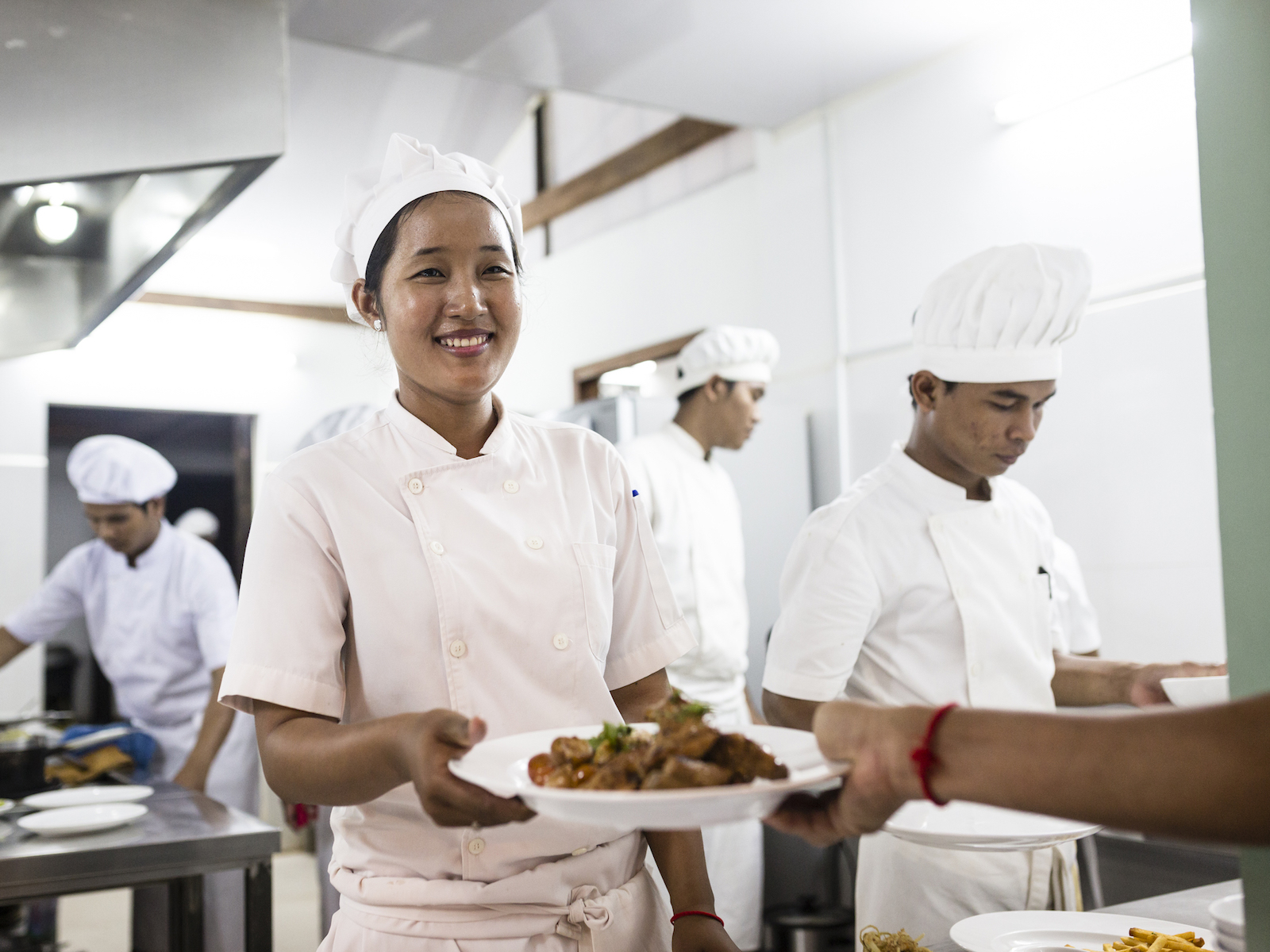
1) Haven
Opened in 2011 and located in the Wat Damnak area, away from the chaos of pub street and the city’s bustling tourist hub, Haven serves up an authentic selection of Khmer specialties including Amok and Lak Lok. Feeling homesick? Not to worry, Haven offers up Western treats not often found in this area including classic schnitzel (Haven’s founders are Swiss) and creamy mushroom stroganoff. The restaurant also offers a large selection of vegetarian and vegan options, including the Haven pumpkin burger and eggplant and beet sandwich.
Haven was established as a training restaurants for vulnerable young adults, including those from orphanages and very poor rural areas. During the last year, the restaurant has taken in 15 trainees who are taught skills needed to build quality careers in hospitality and break the poverty cycle. The organization also takes financial responsibility for all trainees, providing them with shared housing, meals, medical care, English lessons and a monthly training allowance.
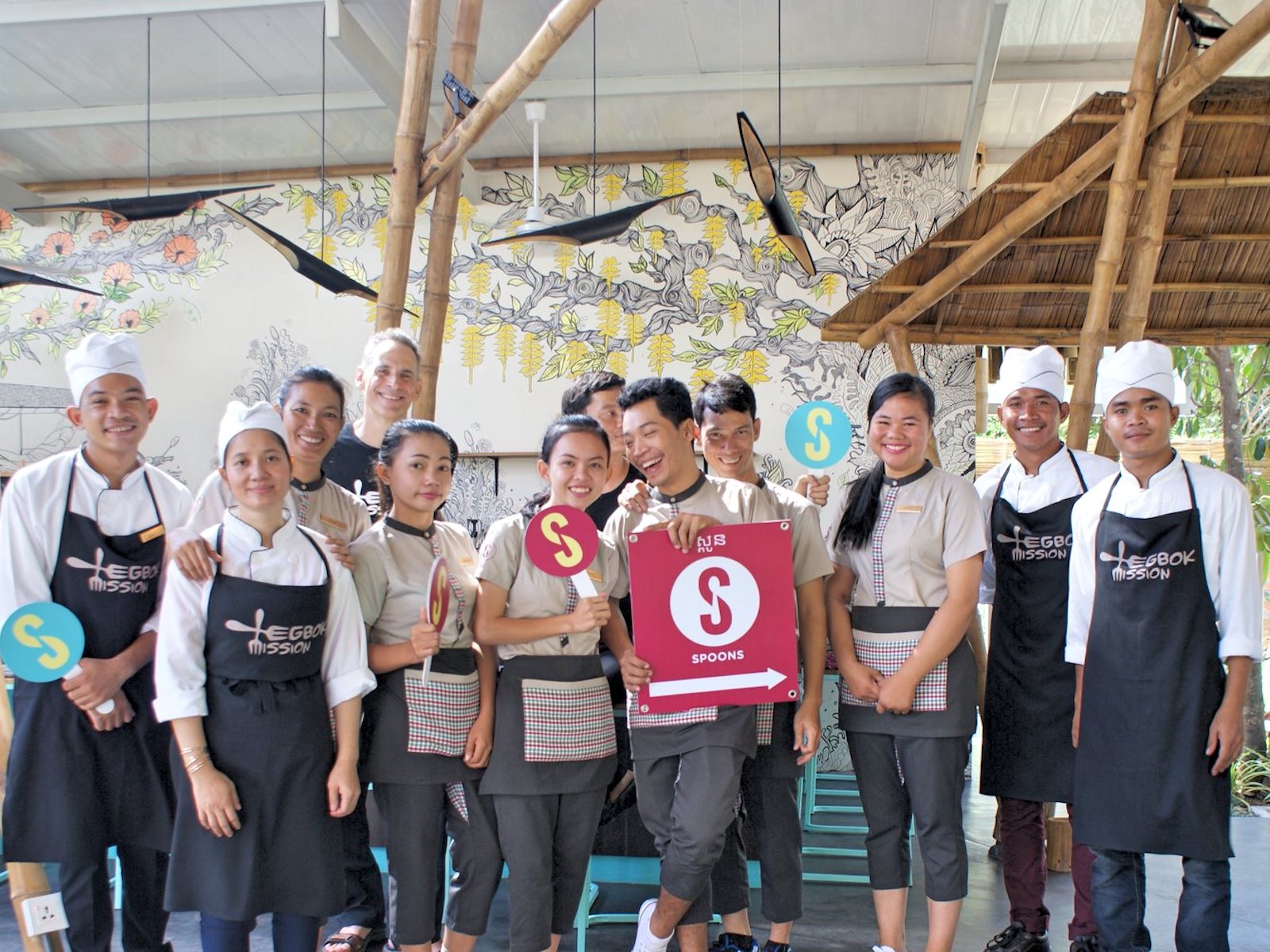
2) Spoons
Fresh spring rolls with Khmer red chili sauce to start, anyone? What about coconut chicken or tiger prawn curry as a main? No matter what you’re dining on at Spoons, be sure to indulge in one of their signature cocktails, especially the Passion Mojito or their signature drink, EGBOK (Campari, basil, lime, palm sugar, sparkling water).
Situated in a beautiful new building decorated with ornate bamboo details, polished stone flooring and turquoise accents, Spoons is a new entrant to the training restaurant scene in Siem Reap. An extension of EGBOK (Everything’s Gonna Be OK, different from the drink above), Spoons supports the culinary curriculum of the program and allows for hands-on training for students.
All proceeds earned by the restaurant are directed back to EGBOK that provides a 3-step approach to trainees: Introduction to Hospitality; Vocational Training, Life Skills and Social Support; and Job Placement and Professional Development. Since inception in 2009, EGBOK has helped 595 students through its Introduction to Hospitality program.
3) Marum
Traveling is all about stepping out of your comfort zone. If this describes you, be sure to check out Marum where you can feast on exotic delicacies such as beef prepared with red tree ants, mini crocodile burgers or BBQ frog legs on sugarcane skewers. Not feeling so adventurous? That’s okay, other staples include the vegetarian-friendly pumpkin, spinach and black bean curry or the penne with roasted chili and cashew nuts.
On the soul nourishment side, Marum doesn’t disappoint either. As part of the TREE (Training Restaurants for Employment and Entrepreneurship) program, Marum is one of 8 training restaurants located in Cambodia, Laos, Ethiopia and Thailand. This training restaurant contributes to the 1,400 disadvantaged youth who are part of the program.
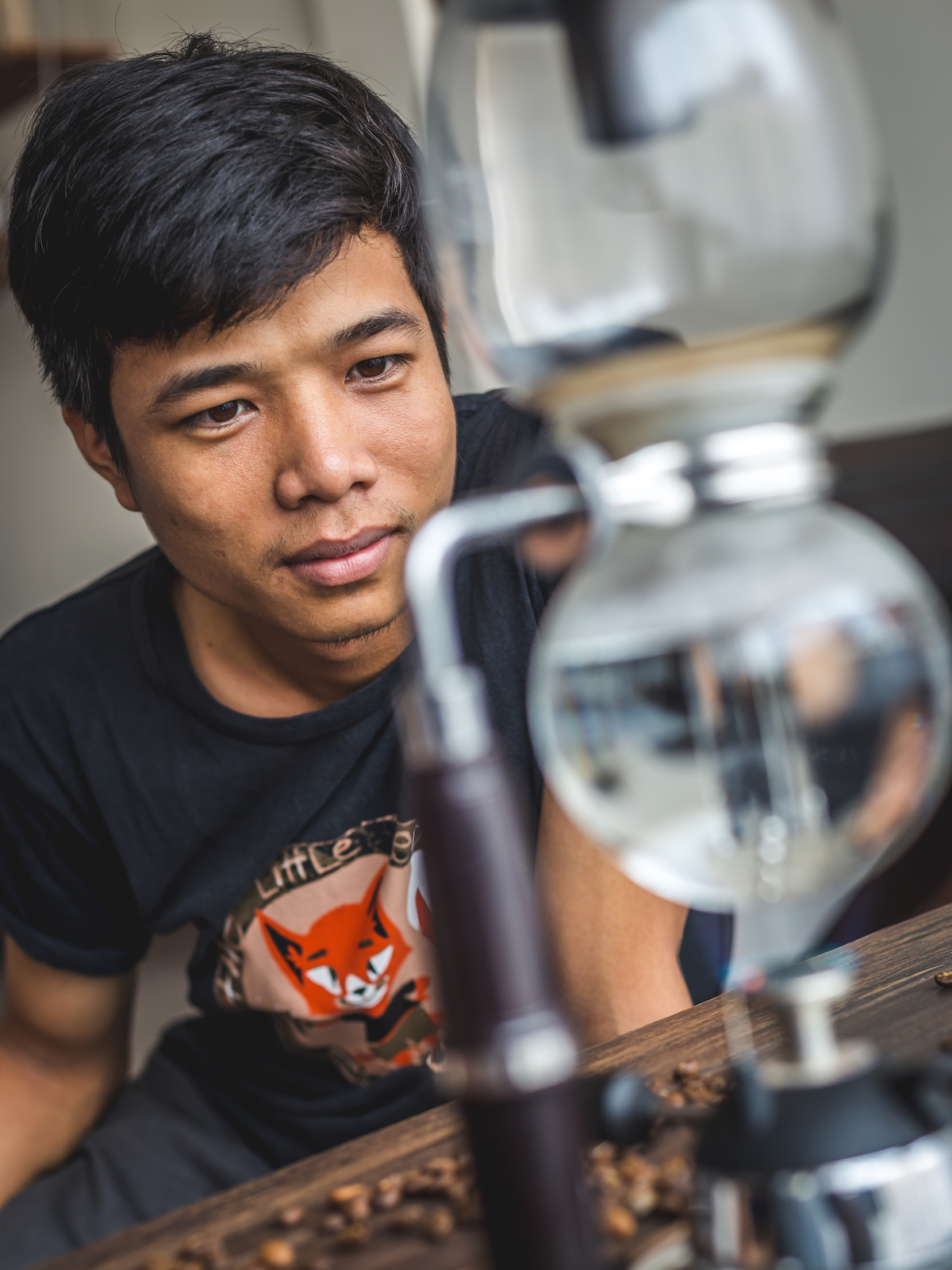
4) The Little Red Fox Espresso (LRF)
There is no better way to fuel a day of temple touring than gulping down some of The Little Red Fox’s delicious espresso. Start your day off feeling good knowing that LRF built the first community recycling point in Siem Reap, provides only filtered water (none of those dreaded plastic bottles here), and while not a training restaurant, the company provides hospitality skills, savings plans, English skills and personal development to all employees.
When you order a drink you’ll notice that LFR takes their anti-plastic stance seriously. You’ll notice as you slurp down your cool drink that’s it’s served with a bamboo straw!
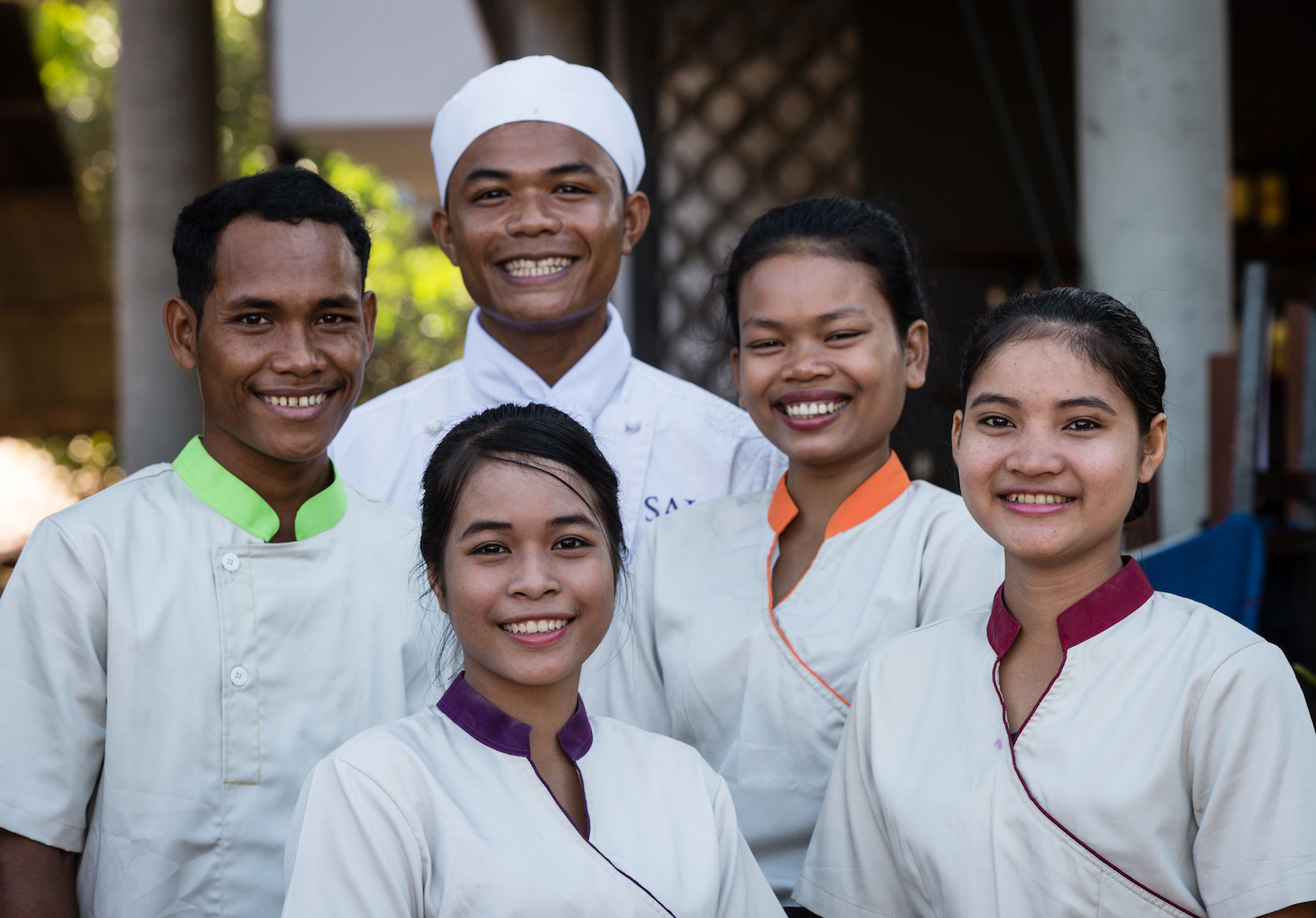
5) Sala Bai Hotel School
Whipping up tasty dishes such as stuffed grilled chicken tikka and pan-fried mackerel, Sala Bai’s options will make you want to try the whole menu. One can’t go wrong in one of Siem Reap’s oldest training restaurants open exclusively for breakfast and lunch.
Sala Bai was created by the NGO Agir pour le Cambodge to fight poverty and human trafficking through social and professional training of underprivileged young adults (primarily young girls). The training complex, which includes a hotel, spa and restaurant, has helped over 1,500 students find sustainable employment over the last 15 years.
***
All of these restaurants are evident of Siem Reap’s position at the forefront of the positive changes occurring in Cambodia — changes that are being spearheaded by the concerted effort of Khmer people, outside volunteers and NGOs working to support the future of the country.

/
 Michael Funk is the co-founder of Banana Backpacks, a travel community and travel gear company dedicated to creating meaningful change in the world. Michael’s love of traveling began as child in Bali, blossomed with a 5-month solo trip around Southeast Asia and has continued ever since with trips across Asia, the Americas and Europe.
Michael Funk is the co-founder of Banana Backpacks, a travel community and travel gear company dedicated to creating meaningful change in the world. Michael’s love of traveling began as child in Bali, blossomed with a 5-month solo trip around Southeast Asia and has continued ever since with trips across Asia, the Americas and Europe.
The post Top 5 Feel-Good Restaurants In Siem Reap, Cambodia appeared first on The Expeditioner Travel Site.
]]>The post Lessons Learned Having Lunch With The World’s Most Famous Butcher appeared first on The Expeditioner Travel Site.
]]>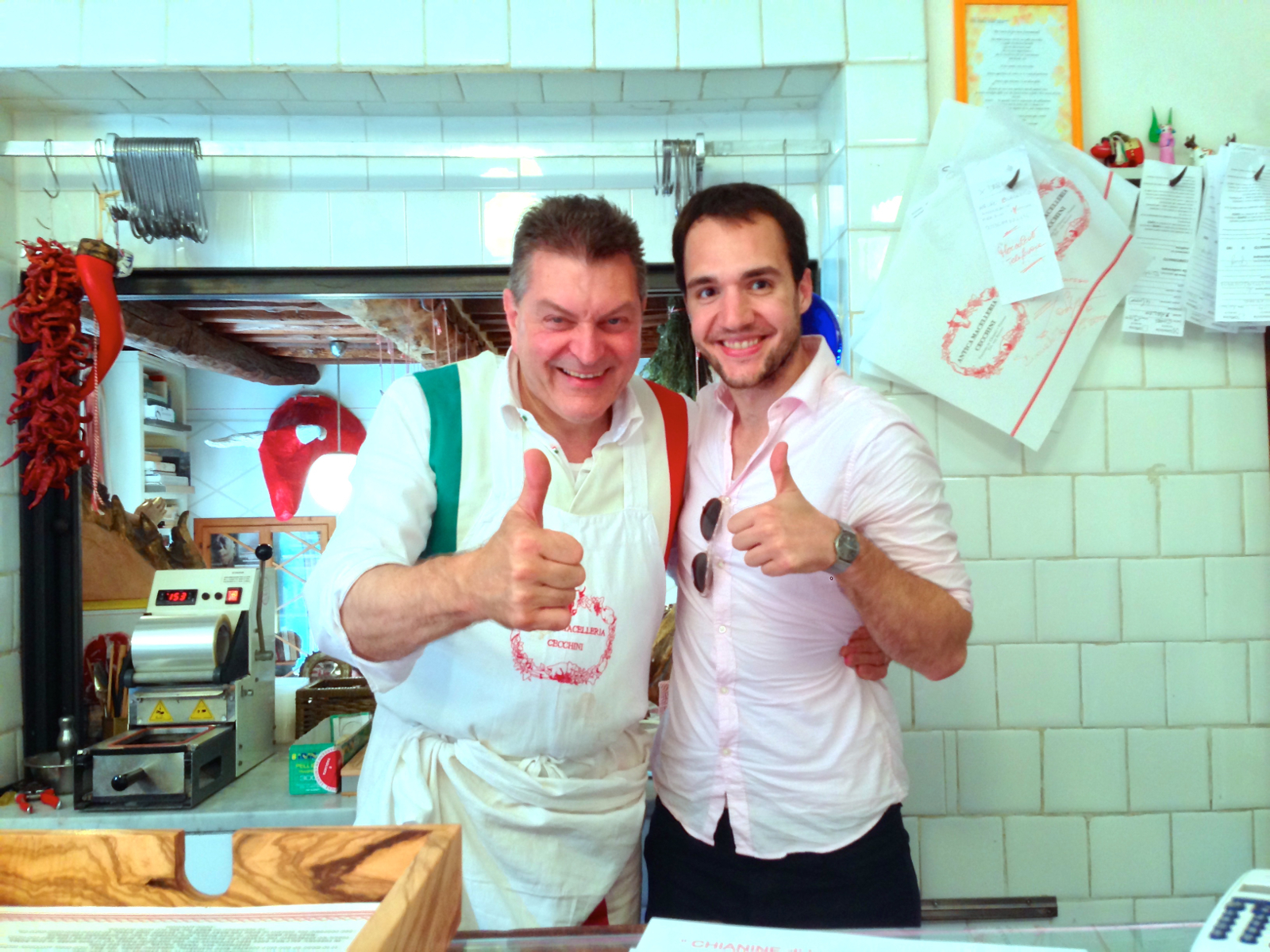
As I parked my car, my belly began to rumble. I hadn’t eaten anything since Friday afternoon, almost 24 hours before. No need to waste stomach space when you’re going to visit the world’s most famous butcher, after all.
I was in the small, hilltop village of Panzano in Chianti, in the scenic countryside between Florence and Siena. The region is best known for the Chianti Classico wine, but there is another reason to visit: the butcher shop and two restaurants of Dario Cecchini — a Mecca for meat lovers.
Although he already had a reputation among Italians for his excellent cuts of meat and larger-than-life personality, Dario first became known internationally in 2001. It was the height of the Mad Cow Disease scare, and not a good time for anyone who enjoyed steak. The Italian government had just temporarily banned the sale of meat on the bone. In response, Dario staged a mock funeral in downtown Florence for his dying friend, the famed Bistecca alla Fiorentina, a three-fingers-thick T-bone steak seasoned with salt, pepper and olive oil, grilled over charcoal, and only served rare. Since that day, many Tuscans had considered him a folk hero for defending their culinary traditions.
I had first learned about Dario a few weeks earlier. A friend and I were sitting in Florence’s Piazza Santo Spirito making dinner plans, when I noted how it had been a while since I last had a good steak. My friend’s expression suddenly turned serious, he looked directly into my eyes, and leaned forward.
“Until you’ve eaten with Dario Cecchini, you’ve never had a good steak,” he stated.
“Who’s Dario?” I asked.
“Only the world’s greatest butcher,” he responded. He then told me about his first pilgrimage to see Dario, of the endless series of dishes, of the communal table filled with laughter, and of meat that melted under the weight of your knife.
We decided to have pizza for dinner.
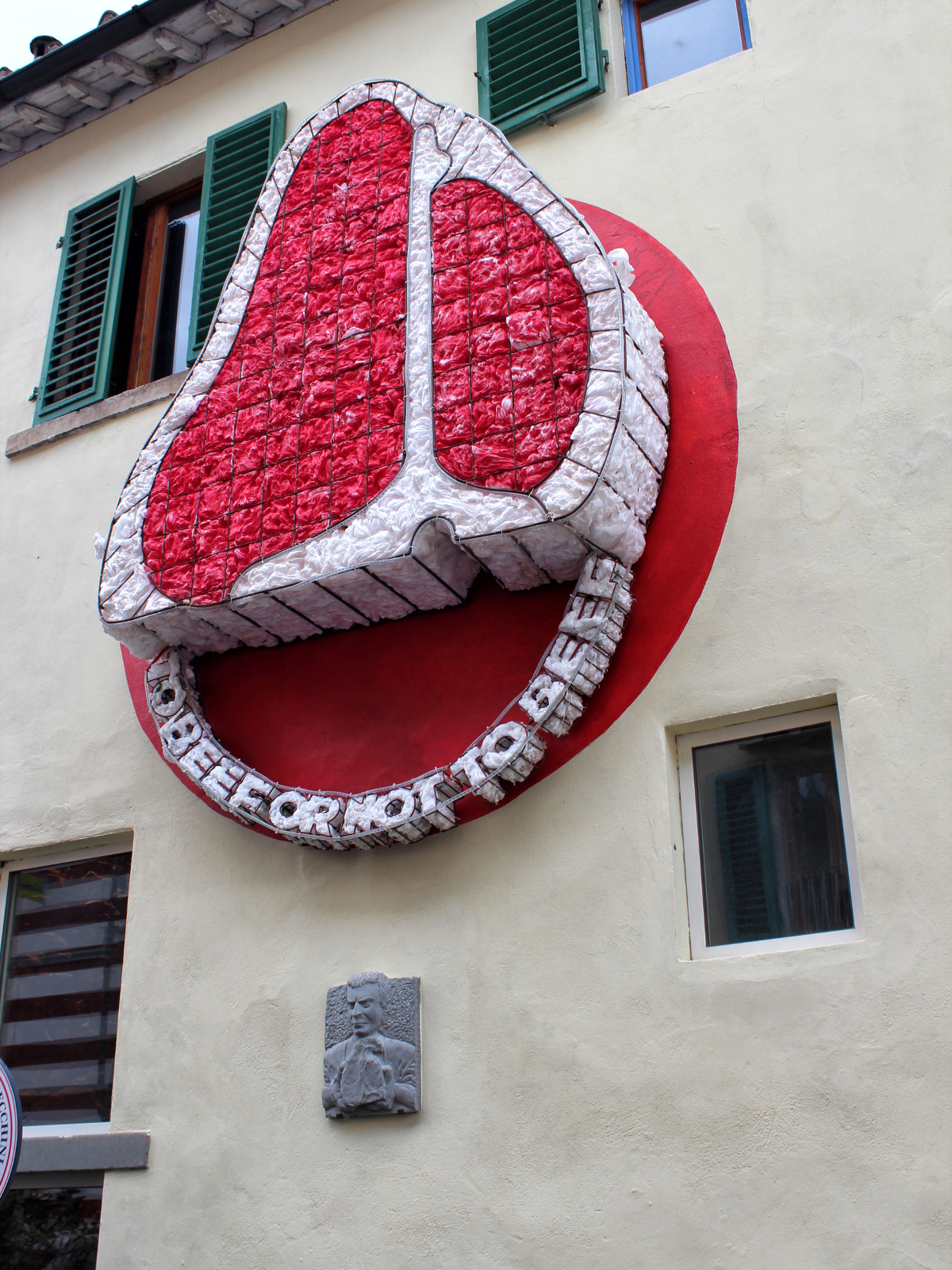
Now, I was in Panzano. Like most small towns in Tuscany, it was rather unassuming. From a distance, you could barely make out a series of simple, earth-toned buildings nestled on rolling hills, with the occasional cyprus tree sprouting up. Below, endless rows of olive trees and grape vines blanketed the land.
But once you arrived in the center, you got the sense that it housed something special. Driving from the north, you couldn’t miss the parking lot overflowing with cars, many of which had foreign license plates. If you came from the south, you’d see the statue of an angel carrying a bull affixed to a corner building near the entrance to town. This was Ristorante Solociccia, the butcher’s kitchen, where I’d be eating.
Having parked my car a few hundred feet down the road, I made my way back toward the corner, then left onto a side street to the restaurant’s entrance. As I approached, I could hear the instantly recognizable vocals of AC/DC lead singer Brian Johnson blasting from somewhere nearby. Above and to the right on the facade was another statue, this time of a giant T-bone, underneath of which was the phrase, “TO BEEF OR NOT TO BEEF.” Below this was a stone relief of a man — I assumed it was Dario despite not knowing what he looked like — holding up a giant cut of meat, as if daring the viewer to take a bite. To the left of the entrance stood a life-size, fiberglass bull decorated with painted alpine flowers.
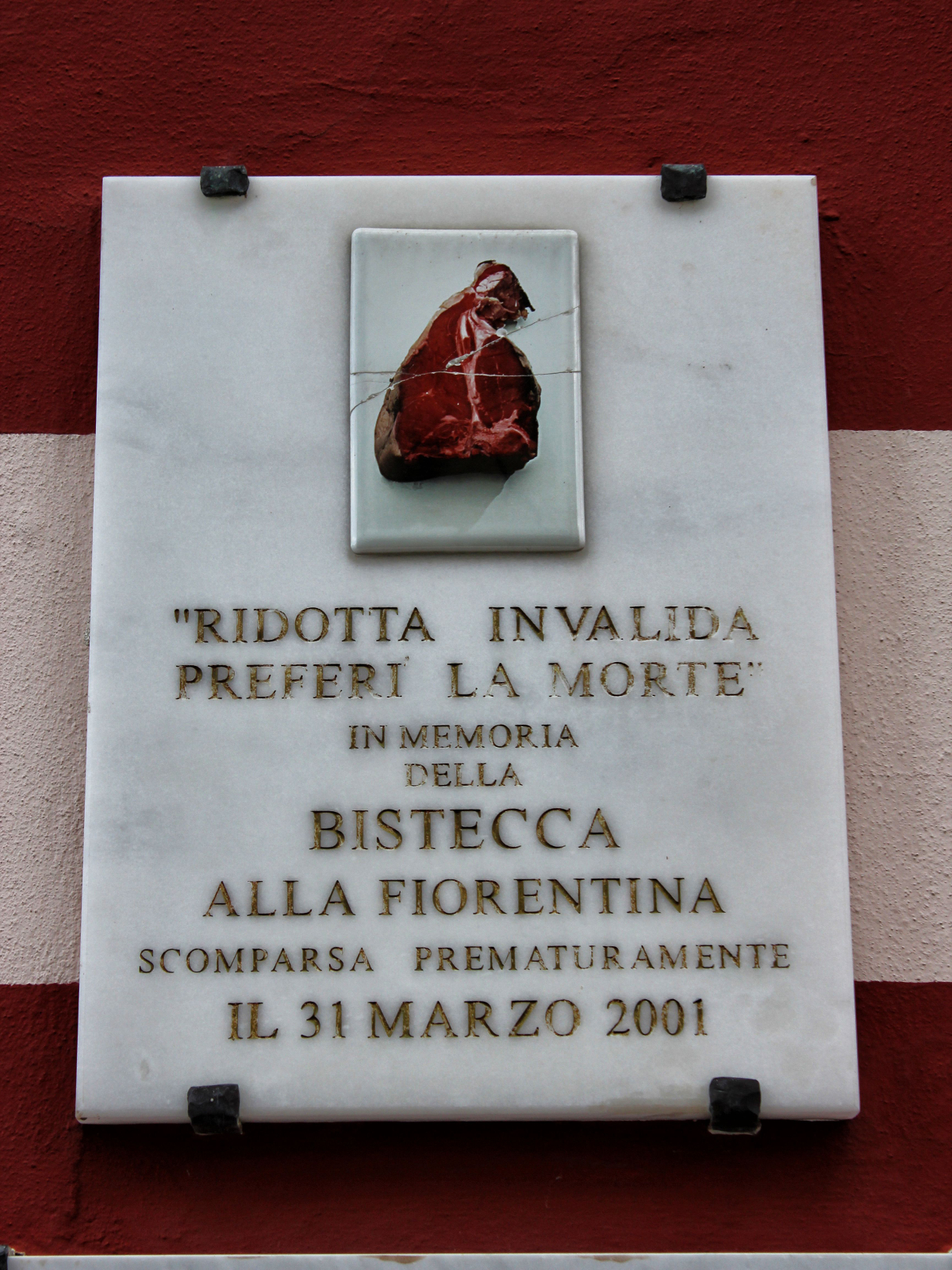
Across the street, in a red and white horizontally striped building, was Dario’s butcher shop and the source of the music. Hanging within the archway above the door was an antique looking marble sign that read, “ANTICA MACELLERIA CECCHINI.” Directly to the left was another marble plaque, affixed to which was an image of a bright red steak. Below this was an engraving: “REDUCED TO INVALIDITY, [IT] PREFERRED DEATH. IN MEMORY OF THE BISTECCA ALLA FLORENTINE – DISAPPEARED PREMATURELY MARCH 31, 2001.” This was the date the Italian government outlawed the sale of T-bone steaks. Subtlety was apparently not Dario’s specialty.
With only a few minutes to spare before my lunch reservation — something I’d been told was an absolute must on Saturdays — I stepped through the white and red beaded strands hanging from the door frame. I didn’t know what he looked like, but I had hoped to catch a glimpse of the famed butcher. Instead, I found a small room lined with white tile and decorated with framed photos. On the left was a glass counter filled with enormous rolls of sausage, bowls of ground beef and various meat cuts. A bunting of lemons and leafs lined the base. To the right was a large wooden table, partially covered by a white cloth and plates of sausage, cheese and bread. A group of men leaned over the table, inspecting the food. Directly in front of me was the entrance to a walk-in freezer, through the window of which I observed sausages and cuts of meat hanging on hooks. Next to that was a side entrance to Dario’s other restaurant, Officina della Bistecca, a slightly more formal restaurant than Solociccia, specializing in steak.
Just then, a young woman, dressed in a white smock, walked up to me, smiled and offered me a glass of red wine. I gladly accepted, downing it quicker than its quality deserved while nearby speakers played “Back in Black.”
Thanking her, I crossed the street and walked into the restaurant. I gave my name and waited to be seated. I noticed a sign on the wall stating, “ABANDON ALL HOPE ALL YE WHO ENTER, FOR YOU ARE NOW IN THE HANDS OF A BUTCHER.”

After a few minutes the host, an older Italian man with thick glasses who introduced himself as Ezio, led me down a set of glass stairs into a small stone room. At the center was a rectangular wooden table surrounded by 10 plastic chairs. Meals at Solociccia are communal, so I was not surprised that two of the chairs were already occupied by a pair of young women. Ezio told me that they would start serving lunch shortly but to enjoy the garden vegetables and olive oil that were on the table.
I introduced myself to the women. They were regular visitors from the nearby town of Greve in Chianti. I asked them what I should expect from the meal. “To eat a lot,” they said.
In front of me was cutlery, a small glass, a coffee cup and a copy of the day’s menu. The front listed the dishes, while the back had a diagram of a cow to illustrate where each plate came from. The entire animal was labeled. A notice below the diagram stated that every part of the animal was used.
Soon Ezio returned, this time with two more guests, both of whom appeared well fed. They sat next to me, and I quickly learned that they were from Bavaria and visiting Tuscany for a week. They decided to drive an hour to Panzano after reading about Ristorante Solociccia in a newspaper article.
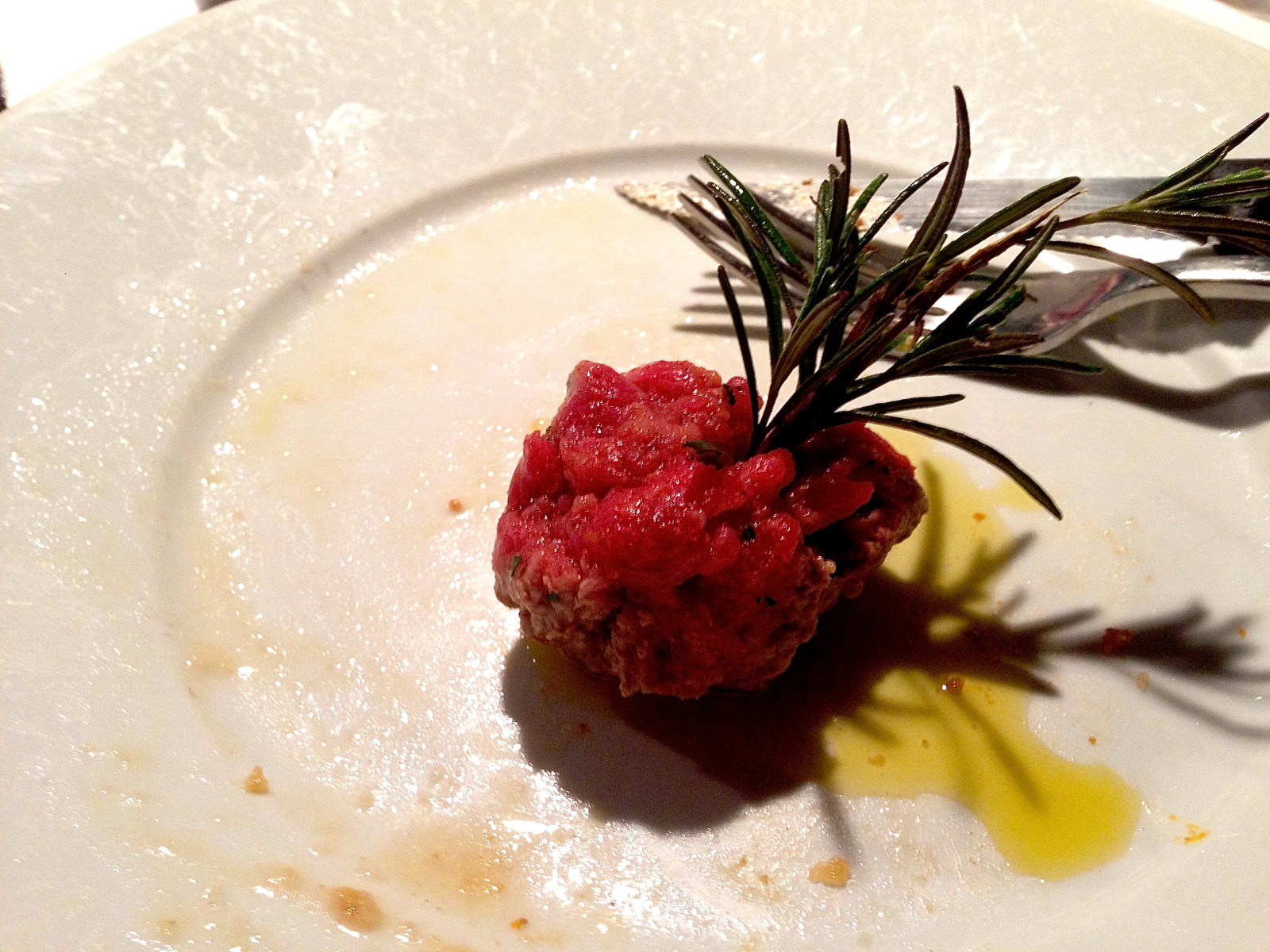
A few minutes later Ezio came back carrying a carafe of red wine and pitcher of sparkling water. A young man followed behind, carrying plates of food in his arms. As he sat them down on the table, Ezio explained the dishes. There was broth with muzzle, crostini with spicy meat ragu, batter fried meats and raw meatballs with rosemary (described as “Rosemary up your bum” on the menu). I looked in wonder at the bounty before us, thinking had this been our entire meal, it would have been more than enough.
Wanting to start lightly, I poured myself a coffee cup full of broth (the glass had to be for water and wine, yes?). Its flavor was rich and smooth, like melted butter. I’m normally hesitant to eat undercooked hamburger due to gastrointestinal health concerns, but I figured I would try one of the meatballs. It had a grassy flavor, without any hint of oiliness.
Between bites I chatted with the two Italian women about their favorite places in the Chianti region, taking mental notes all the while. The Germans occasionally joined in to offer up their opinion on anything food related.
After about 15 minutes, Ezio and the young man returned. This time, they both were carrying plates. The smell of meat — fried, boiled and braised — filled the room and I licked my lips. Once again, he listed the dishes: fresh vegetables; garbanzo and white beans; beef roast; boiled beef and vegetable salad; braised meats; homemade focaccia.
As he turned to leave, a group of five middle-aged men wearing backpacks stumbled into the room. One of them muttered something to Ezio in Italian, and at that they were seated. I guess a few more people would be joining us for lunch.
The same man who had spoken to Ezio told us they had come to Tuscany from La Spezia, in northern Italy, for a weekend of drinking and fun. He then pulled a corkscrew and bottle of wine out of his backpack and opened it. “Made by my family. Who wants to try some?” he said. I said yes, and he poured me a glass. It was surprisingly good.
We then began to pass the food around the table. Trying to pace myself, I took only a little bit of everything. I ate the braised meats first. They were so tender that I could cut it with my fork. I then tried the beef roast. This was also excellent. Once again, the meat had a different flavor — more earthy perhaps — than anything I’d ever had before.
I grabbed a small piece of the focaccia and raised it to my mouth, but just as I was about to take a bite a loud noise came from the stairwell. As I looked up, a man I could only assume was Dario swaggered into the room, grinning from ear to ear. He was strong, with large hands well-equipped for cutting meat. His hair was dark brown with small patches of grey on his temples.
He dressed in all white except a vest bearing the colors of the Italian flag, over which he had tied a white apron embroidered with the name of his butcher shop. I noticed a faint blood stain at his waste.
With a loud and hearty voice he welcomed us, arms raised in the air. “Ciao a tutti! Eat well. You are at my house.” I raised my glass to him and soon the others followed. He nodded his head in appreciation, clapped his hands together, and slowly backed out of the room, undoubtedly on the way to greet more guests.
We continued to eat, sharing stories about our travels for another 30 minutes or so, at which time Ezio came back to clear the table. More than half the food still remained, and he admonished us for our lack of appetite.
Shortly thereafter, torte all’olio and espresso was served. The cake was honey-colored on the inside with a golden crust on the outside. I took a bite, closed my eyes and let it melt in my mouth, the rich oil flavor coating my tongue. Silence slowly fell over the table as my fellow lunchmates succumbed to the effects of too much drink and food.
My head had just begun to lean forward when I heard a familiar voice. “Digestivi,” Ezio bellowed. I sat straight up and my eyes opened wide. He set two bottles on the table, the labels for which had worn partially off, and 10 small glasses. Apparently we were to drink our fill.
“Grappa e Cordiale dell’Esercito Italiano,” he said. I had heard of grappa, but never Italian military cordials. Noting the inquisitive look on my face, Ezio told me that Italian soldiers had once been given a regular ration of this liquor, but recent budget cuts had put this on hold. Dario bought the cordials to support a dying tradition; he was now one of the largest purchasers in Italy.
I thanked Ezio for the information and he left. I grabbed a glass and reached for the bottle. Everyone except the Germans looked at me with bewildered expressions. I thought I had committed some sort of social faux pas, but one of the men looked me in the eyes and said, “Forte. Very strong stuff.”
Knowing that I had to drive home to Florence, I poured myself half a shot and quickly downed the brownish liquid. My lips puckered and my eyes squinted as the vile poison passed over my tongue. The others laughed.
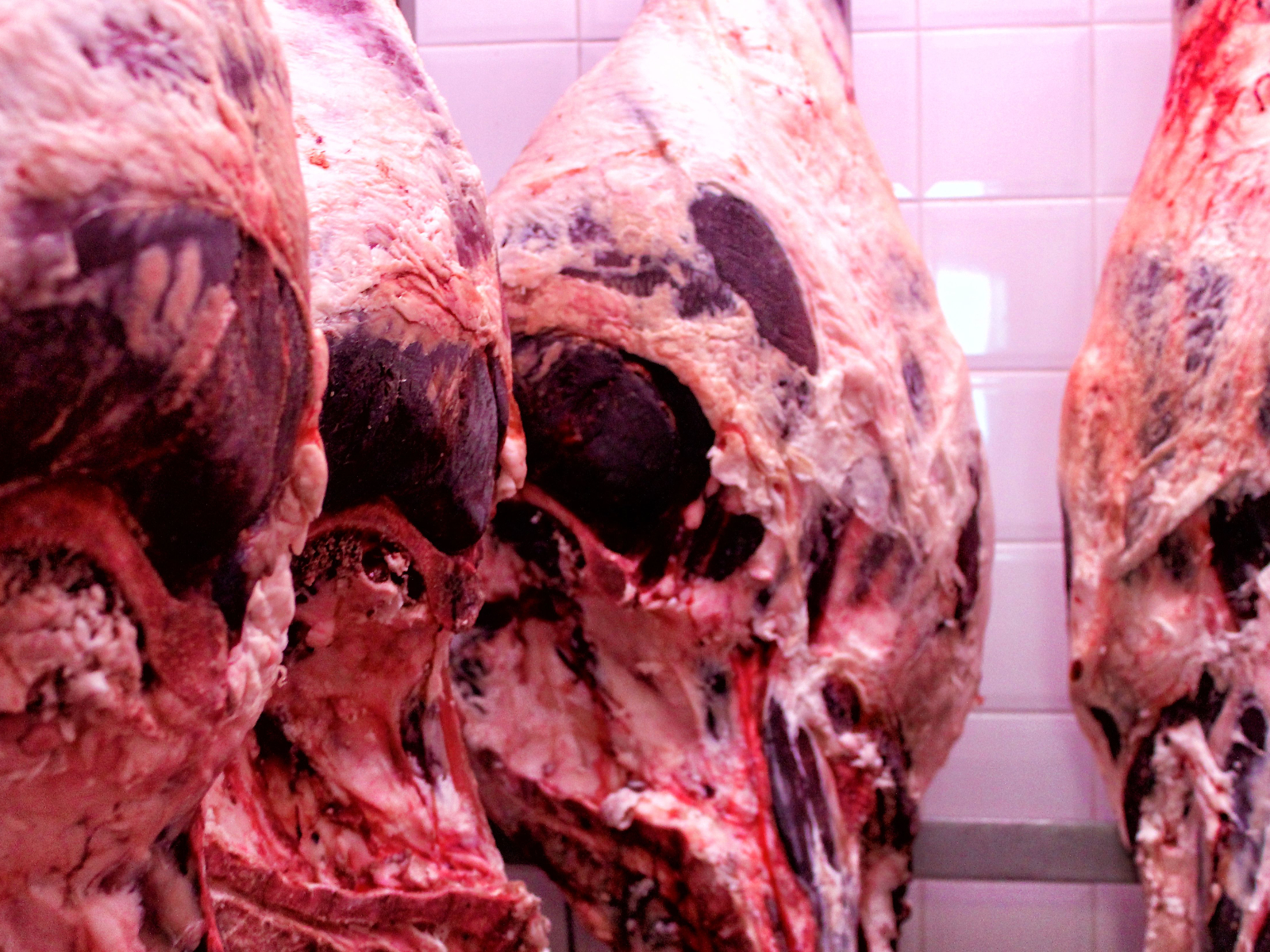
Slowly sipped shots of grappa eventually woke everyone at the table and people began to excuse themselves. Not wanting to overstay my welcome, I also said goodbye and headed upstairs. An older woman greeted me at the front desk with a receipt and matter-of-factly stated, “Trenta.” Having become accustomed to the inflated prices of Florence, I was somewhat shocked by this, so I looked down at the receipt to confirm the price. I had heard her correctly. The whole meal — wine, meat, dessert, liquor — was only €30.
I told her how exceptional this meal had been, and she smiled in a way that told me she heard this often. She then asked me a question I was not expecting. Would I like to see the kitchen? Taken aback, it took me a second to respond, but I said yes. I followed her through a nearby door, which led directly to a large kitchen filled with surprisingly modern stoves and ovens. Since lunch was finished, it was empty, but I could imagine an army of cooks busily preparing dishes here.
I thanked her and headed towards the front exit. The bright afternoon sun stung my eyes after nearly two hours inside. Wishing to see Dario one more time, I crossed the street and went back to the butcher shop. This time he was there, behind the counter. He was helping a man and his small son select a cut of meat.
When he was done, I approached the counter and told Dario how much I had enjoyed my lunch. I then asked what the secret to his amazing meats was. He smiled and put his hand on my shoulder. “The secret is to care,” he said in Italian. “Good butchery is just like anything else; if you care, it will show.”
I knew what he meant. If there was one thing I had realized living in Italy, it had been that passion is the secret to excellence. I had seen it in the grand sculptures of Michelangelo, who cared so much for his craft that he refused to remove his artists smock for months at a time. I had seen it in the scarred hands of San Lorenzo’s leatherworkers, who permanently disfigured themselves to create fine belts and wallets. I had seen it at Siena’s Palio horse race, where only those willing to risk death for neighborhood pride could ever hope to taste victory. And I had seen it here, in Panzano.
Italy is famous for its art, fashion and food, but we often overlook the individuals whose energy and passion create such things. Behind every great meal, shoe design or painting is human emotion. This disconnect between product and person is only exacerbated by modern life’s reliance on technology. As I left Dario’s shop and walked back to my car, I smiled and told myself I would not soon forget what I had learned having lunch with the world’s most famous butcher.

/
 Andrew has spent the majority of the past five years traveling and teaching throughout the world. His goal is to help others become the best they can by connecting them to life-altering travel experiences. Take the first step towards fulfilling your own dreams by exploring his website AuthenticTraveling.com.
Andrew has spent the majority of the past five years traveling and teaching throughout the world. His goal is to help others become the best they can by connecting them to life-altering travel experiences. Take the first step towards fulfilling your own dreams by exploring his website AuthenticTraveling.com.
The post Lessons Learned Having Lunch With The World’s Most Famous Butcher appeared first on The Expeditioner Travel Site.
]]>The post Learning To Lime In Anguilla appeared first on The Expeditioner Travel Site.
]]>
Of the few stores situated on Anguilla, I saw two that were named “Limin’,” and they were wildly different. One was a boutique that sold high-end, brightly covered beach apparel and jewelry. The other was a large, run-down grocery store that sold the likes of Spam, sweetened bread rolls and coconuts.
It took me longer than I care to admit to sound it out — “limin’” I thought, pronouncing it aloud with a short “i” like I was saying “Tim.”
“No, liiiimin’,” corrects my cab driver and native Anguillian, Lowell, while maneuvering his van along one of the few thin streets in the country. “You know. Call up your buddy, ask what they’re up to. They’ll say, ‘Nothing, just limin’.'”
Limin’ means hanging out. Chilling on a porch. Shooting the shit with friends. While the term is used throughout the Caribbean, on a recent visit to this tiny, 16-mile-long island located off the coast of St. Maarten, I realized that “limin’” is an ideal way to describe Anguilla.

“Here we sell a whole lot of nothing,” says Lowell, as we drive past scraggly overgrown yards that contain goats tied up on pegs, rusting cars and the occasional, brilliant bougainvillea vine.
He’s kind of right. While other islands in the Caribbean would have been packed with tourists over spring break, Anguilla seemed empty. Beaches were void of crowds and chatter. Nobody tried to sell me anything — not even a wooden trinket carved into a turtle or marijuana joints the size of cigars, like the onslaught of vendors I have endured on other islands that cater to the cruise crowd while “limin’” at the beach.
While you can definitely sprawl, cocktail-in-hand, on white sand for days, there is an unexpected energy to Anguilla that makes it a uniquely interesting place to visit. There’s a wildness to this island that complements rather than contradicts its cerulean seas, five-star hotels and fancy restaurants.

For example, time your trip right and you’ll experience Festival del Mar, a bustling seafood festival that takes place over Easter weekend. With over 15 vendors, this small but growing gathering of locals and tourists alike jives with folks noshing on fragrant seafood soup, johnny cakes (fried dough accouterments about the size and shape of small bagels) and some of the largest spiny grilled lobsters you’ve ever seen — brushed with spiced butter and plated with lemon halves.
Nobody serving rum punch, the island’s beverage of choice, seemed to know what it was actually made with. Maybe some sort of fruit juice? I never found out, something that would have bothered me in my food-conscious home city of Boulder. But, hey, I’m limin’ man. Sure, I’ll have a rum punch, pineapple from concentrate, be damned.
This is what Anguilla does to you. It prompts you to release. Just be. I whole-heartedly adopted this attitude.

One afternoon, my group and I aimed to have lunch at Scilly Cay, a miniscule island — we’re talking a shack and a couple palm trees, here — located within sight of Festival del Mar. To get there, guidebooks say to walk down to the end of the dock and wave your arms in the air “like an idiot” (that’s literally in the guidebook) in the general direction of the island. We did as told. Eventually, a small blue-and-white motorboat roared up and locals and tourists crowded in. At Scilly Cay, we ordered grilled chicken, more lobster, more snapper, pasta salad, garlic bread and yes, more rum punch.
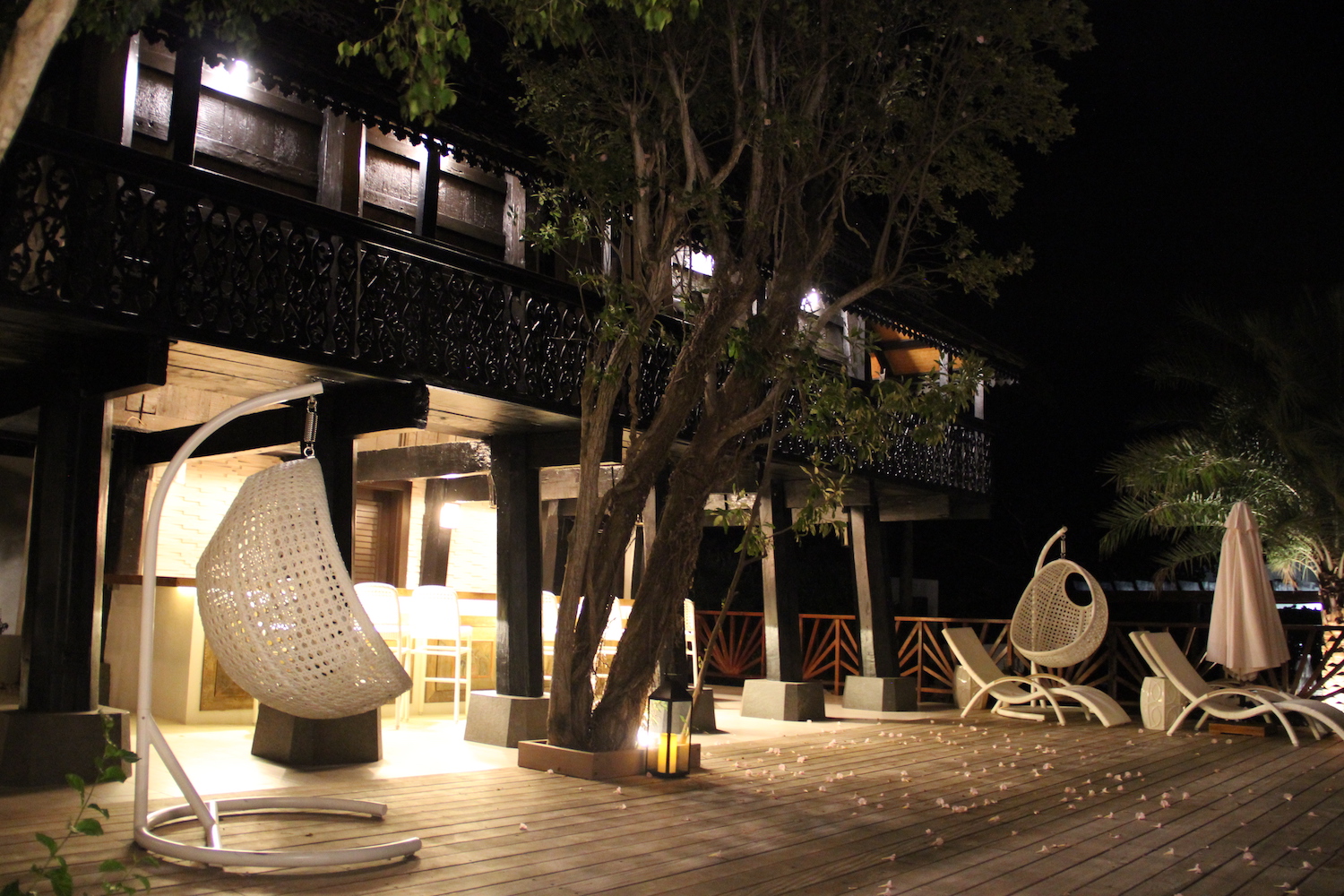
There are fancier ways to “lime” while in Anguilla, too.
I spent the duration of my stay at the Sheriva Villa Accommodations, a collection of luxury houses that featured up to eight bedrooms each. When checking in, I found that my room is not a bedroom but a suite, complete with a king bed that overlooks the ocean, a kitchenette, a Jacuzzi tub and a shower that had several spouts (umm, even one that’s derriere high — what’s that all about?). In the morning, I practiced yoga on both (yes, there were two) private balconies.
If you really want to splurge, stay at the newly built Zemi Beach House, a gorgeous resort with 63 rooms and one of the most impressive open-air spas I’ve ever seen. Have lunch or dinner at Zemi’s 20 Knots restaurant, which dishes out freshly caught seafood served in a style I’ll describe as “sophisticated casual.” Think yellowfin tuna ceviche served with potato salad, and grilled corn mixed with feta and fresh herbs. The restaurant overlooks the award-winning Shoal Bay East, a beach praised by top travel magazines for its powdered-sugar sand, diminutive waves and textbook turquoise water. It’s impressive, to say the least.
Fancy accommodations and delicious meals are great, but most Caribbean islands have beautiful beaches and hotels and good food.
Anguilla is different because it makes space. The country gives you time to think.
It motivates you to sit at dusk and notice how you can see increasingly more stars at every passing moment. It gives you time to stand for an hour, as I did one day, looking at the ocean crash upon jagged rocks and unpack thoughts usually masked by work or errands or relationships. In Anguilla, I dove into the chasms of my own mind and thought about the person I wanted to be, not the person I’ve been told I should be.
Don’t visit Anguilla if you want to hike or run or mountain bike or rock climb. And don’t visit this island to read, either. Put down the book. Turn off your cell phone.
Instead, go down to the shore and stare into the brilliant blue-green sea. You’ll find your answers there.

Stay
If traveling in a group . . .
Sheriva Villa Accomodations
Villasatsheriva.com
If you’re a foodie fanatic . . .
CuisineArt Gold Resort & Spa
Cuisinartresort.com
If you’re looking for some serious R&R . . .
Zemi Beach House Resort & Spa
Zemibeach.com
Eat
For masterfully prepared Japanese food…
Toyko Bay
Cuisinartresort.com/Tokyo-Bay
For upscale fare with a beach-chic vibe…
Blanchards Restaurant
Blanchardsrestaurant.com
For authentic Anguillian brunch…
Tasty’s Restaurant
Tastysrestaurant.com
For French-Thai-Japanese fusion with a mind-blowing view…
Hibernia Restaurant & Art Gallery
Hiberniarestaurant.com

About the Author
/
 Jenna Blumenfeld is a Boulder, Colorado-based writer and editor with a knack for creative and captivating storytelling. A deadline-driven wordsmith, she mostly covers food, travel, and outdoor sports. When not writing, Jenna can be found skiing, rock climbing or road cycling. Check out her work at JennaBlumenfeld.com.
Jenna Blumenfeld is a Boulder, Colorado-based writer and editor with a knack for creative and captivating storytelling. A deadline-driven wordsmith, she mostly covers food, travel, and outdoor sports. When not writing, Jenna can be found skiing, rock climbing or road cycling. Check out her work at JennaBlumenfeld.com.
The post Learning To Lime In Anguilla appeared first on The Expeditioner Travel Site.
]]>The post Anthony Bourdain On The Future Of Food Travel Journalism appeared first on The Expeditioner Travel Site.
]]>Tom Hatton, friend of the site, got to recently meet the Anthony Bourdain on the red carpet at the Paley Center here in New York for the Parts Unknown Season 5 premiere.
Tom was kind enough to solicit a question from me, which he posed to Chef Bourdain. The question: What is the future of food travel journalism?
To hear Anthony’s response to this and his thoughts on sustainable and organic food, watch Tom’s interview above.

/
 Matt Stabile is the Founder and Editor-in-Chief of The Expeditioner. The Expeditioner began in 2008 and is headquartered in New York City. You can read his writings, watch his travel videos or contact him at any time at TheExpeditioner.com.
Matt Stabile is the Founder and Editor-in-Chief of The Expeditioner. The Expeditioner began in 2008 and is headquartered in New York City. You can read his writings, watch his travel videos or contact him at any time at TheExpeditioner.com.
The post Anthony Bourdain On The Future Of Food Travel Journalism appeared first on The Expeditioner Travel Site.
]]>The post 10 Must-Try Budget Desserts In Turkey appeared first on The Expeditioner Travel Site.
]]>
After traveling the world as a nomad for a few years now, I’ve learned that it isn’t always pretty, especially when it comes to tasting a country’s most popular dishes. When you’re on a tight budget, you are typically limited to freeganism, bulk foods that can easily be carried and prepared (like pasta) or cheap things from a corner shop or grocery store.
Desserts and other non-essentials are rarely included in the allowance, unless you are lucky enough to find a particularly cheap cafe or bakery. Most people travel in order to gain a new experience in a new place, and food should not be left out of this equation. Luckily, Turkey is a country that offers very cheap authentic meals and even cheaper sweets. From specialty shops to confections served from vendors on the street, this country is perfect for a frugal foodie.
Throughout my travels and time spent living in Turkey, I was continually amazed to see the variety of sweets, from creamy chocolates and airy pastries to thick honey and brightly colored fruity concoctions. The best Turkish desserts, though, are the ones loaded with the array of nuts that the country produces.
Many of these desserts are so sweet that you only need a bite to savor the flavor for hours. The Turks are very proud of their confections, and will almost always offer you a sample if you’re walking by their shop or stand. It seems a shame to miss out, even if it’s just a little bite.
Here are the top ten easiest, cheapest, and most delicious desserts to try while visiting Turkey.
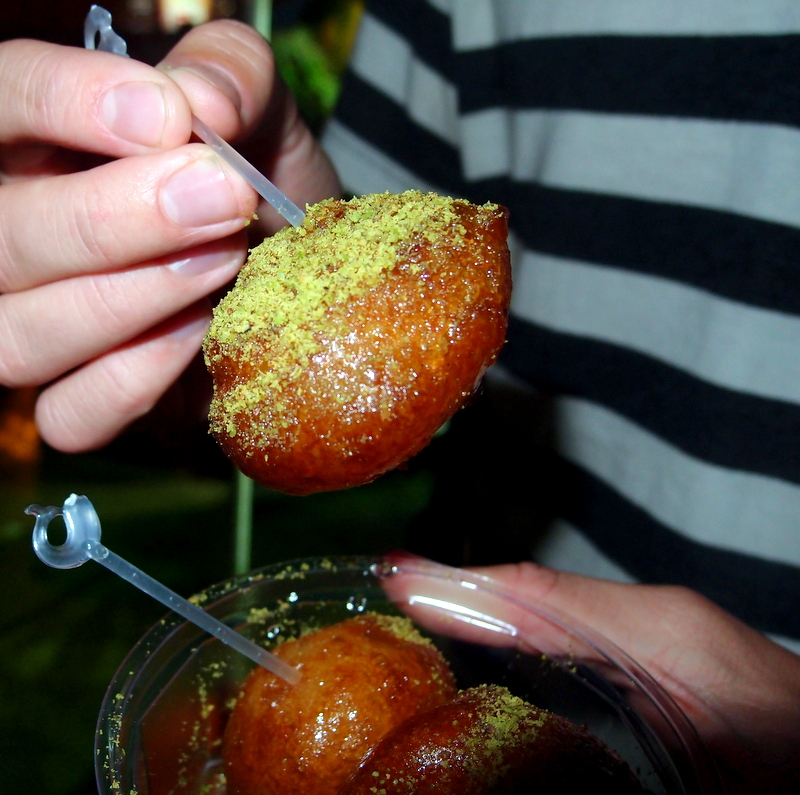
1) Lokma
Lokma is one of the versions of a Turkish donut. It’s made from a light dough that is soaked in a simple syrup and covered in pistachio shavings. The syrup makes the donut much denser, so I recommend only going for one on your first try. You also will want to use the picks provided to prevent your hands from sticking like glue for the next few hours.
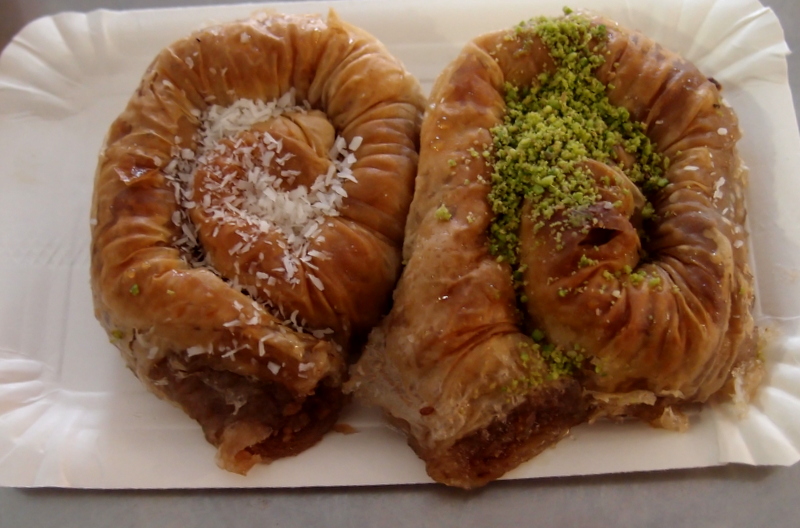
2) Baklava
Forget anything else you’ve heard about the birthplace of baklava- this dessert is 100% Ottoman in origin, and any Turk will have no problem telling you so. A rich, sweet pastry made with layers of fine filo dough, baklava is by far the most popular dessert in Turkey and the surrounding Middle Eastern countries. Chopped nuts with honey and/or syrup are held together by many layers of filo and left to set. The dessert becomes quite dense, so one small piece should leave even the most serious sweet tooth feeling beyond satisfied.
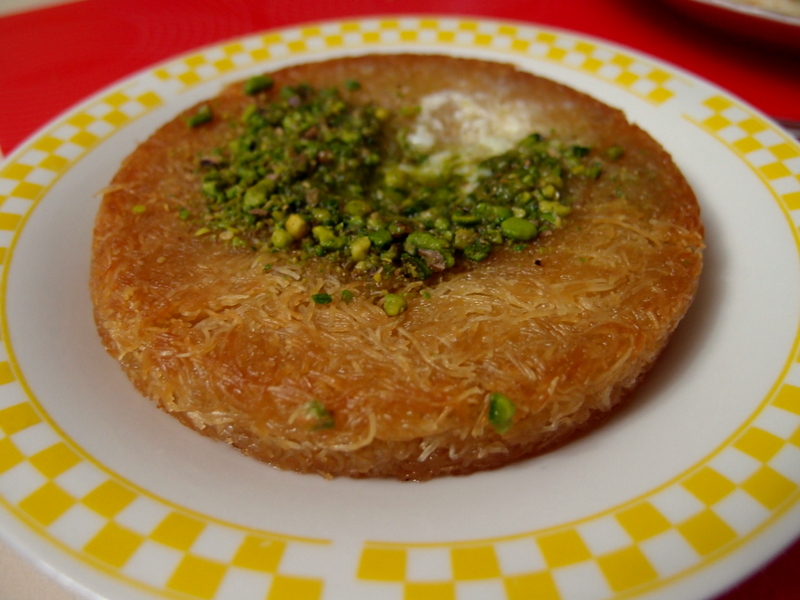
3) Künefe
The Turkish spin on cheesecake, künefe is one of my favorite desserts, not just in Turkey, but in the world. A shredded wheat-like mixture made from either semolina or thin noodle shreds is formed into a pasty with, you guessed it, syrup. The pastry is also sometimes flavored with rose or citrus fruit water. It encapsulates a thick slice of mild white cheese, and is typically topped with chopped pistachios.
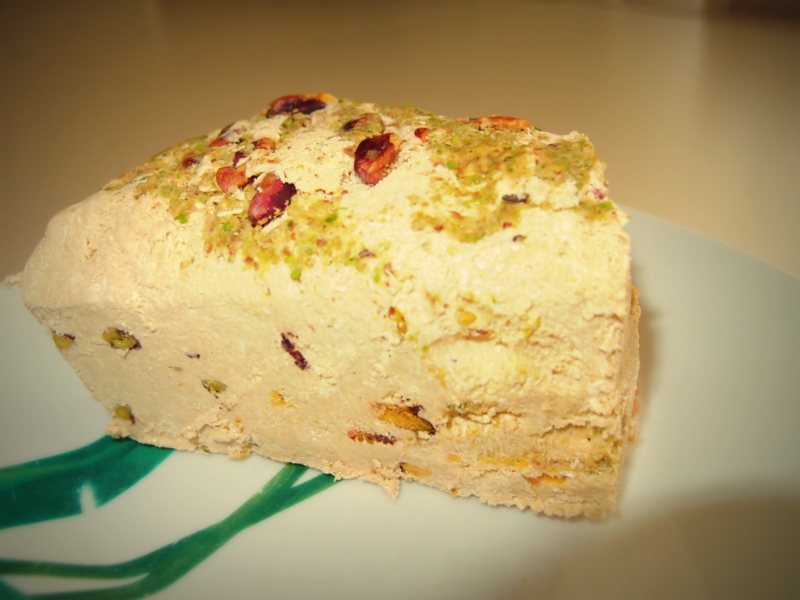
4) Halva
This dense confection is popular across the Middle East and the Balkans as both a breakfast spread item and a treat. It can be made from either semolina grains or tahini (sesame paste) and various types of nut butter, though the tahini flavor adds a savory aftertaste and is much more delicious.
Like most other sweets from the region, the best halva is covered and stuffed with pistachios. The sweet comes in a bulky block which can be sliced thinly or in large chunks. Halva can be found in all dessert bakeries, as well as in packages in corner shops. It doesn’t always taste overly sweet going down, but beware: it is addictive, and more than a few small pieces will leave you feeling a bit ill. There is no bravery in eating too much halva.
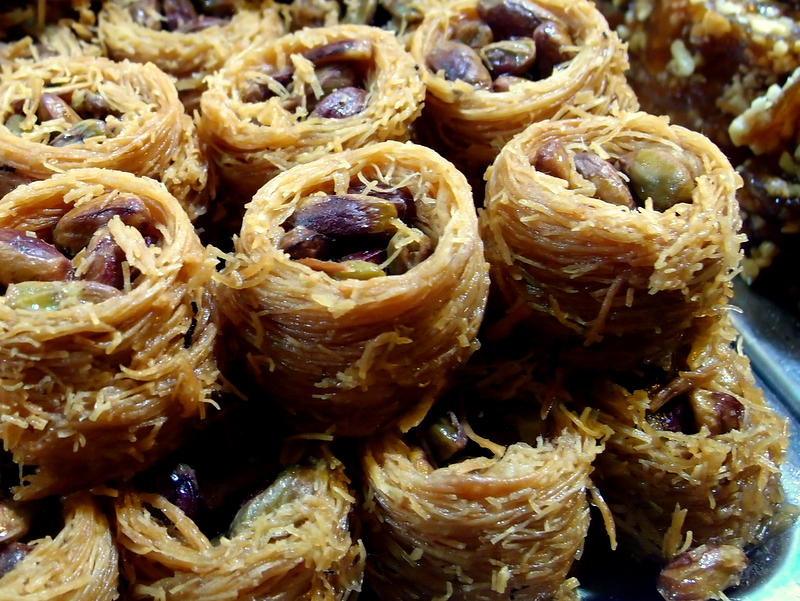
5) Honey and Nut Bowls
I’m not quite sure of the official name for this dish, as it was always communicated to me as “honey and nut pastry”– confusing, as most Turkish desserts contain honey, nuts and pastry.
In this treat, the same shredded noodles that are used in künefe are formed into a bowl-like structure and held in place by honey. The bowls are then filled with nuts. This is a go-to sweet for those who want to keep it fairly simple. Although still sweet from the syrup, the base taste of the nuts balances the dish perfectly. You can sometimes test drive a single bowl, but usually you will be required to buy several.
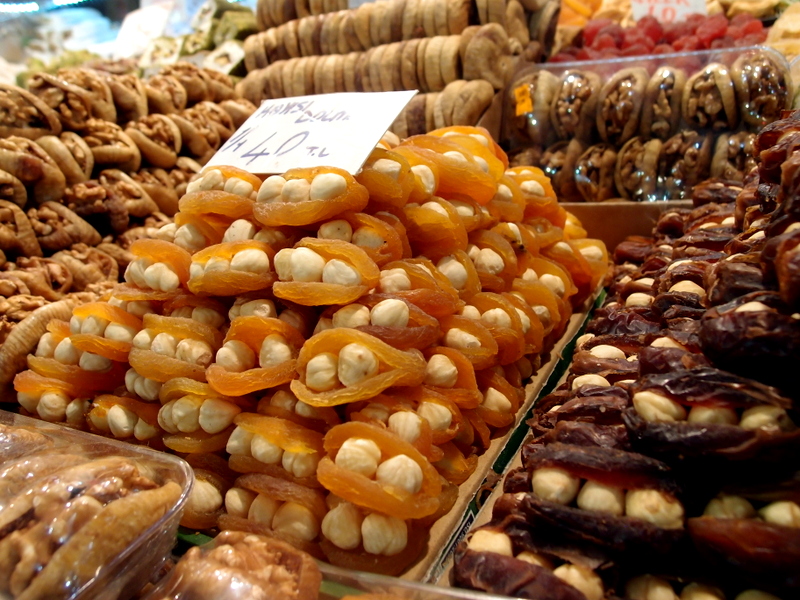
6) Dried Fruit Stuffed With Nuts
Are you sick of the overly sweet, bite-size only Turkish desserts I’ve listed thus far? You’re in luck! Apart from syrups and nuts, the Turks specialize in dried fruit. One of my favorite snacks while meandering the streets of Turkey was dried fruit stuffed with nuts. Finally, a dessert without syrup and that doesn’t leave you feeling guilty. Dried figs, apricots, and dates stuffed with hazelnuts were a few of my favorites.
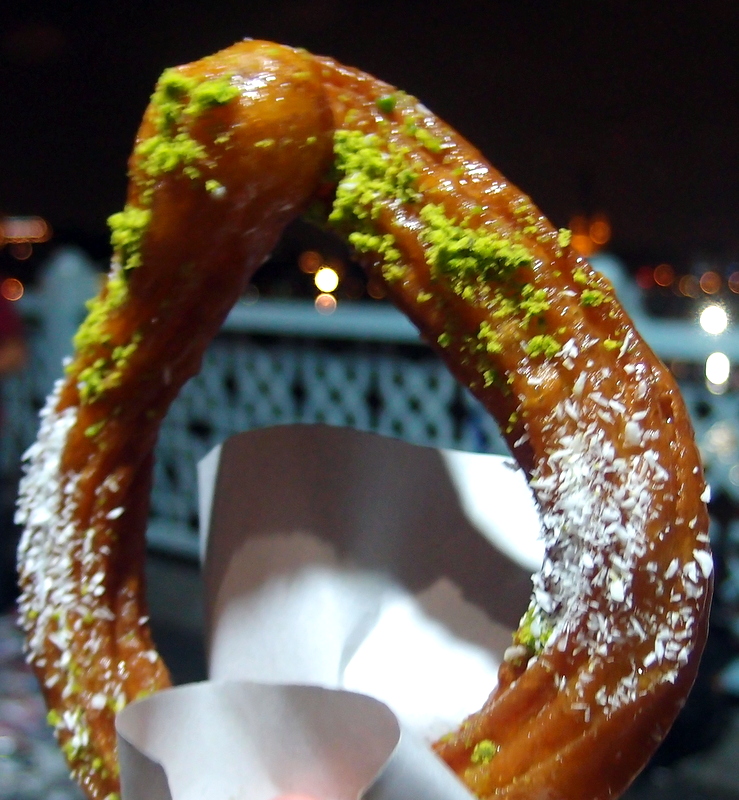
7) Halka Tatlisi
Yet another syrup-soaked pastry with crushed pistachios, but this time there’s a slight twist: a deep-fryer. Halka tatlisi is the Turkish equivalent of a churro with a glaze. These treats come in bent circles or small rectangles, but the former is the one that you’ll usually find at a street vendor. For 1 Turkish Lira ($0.50), you and your friend can get a filling treat on the street.
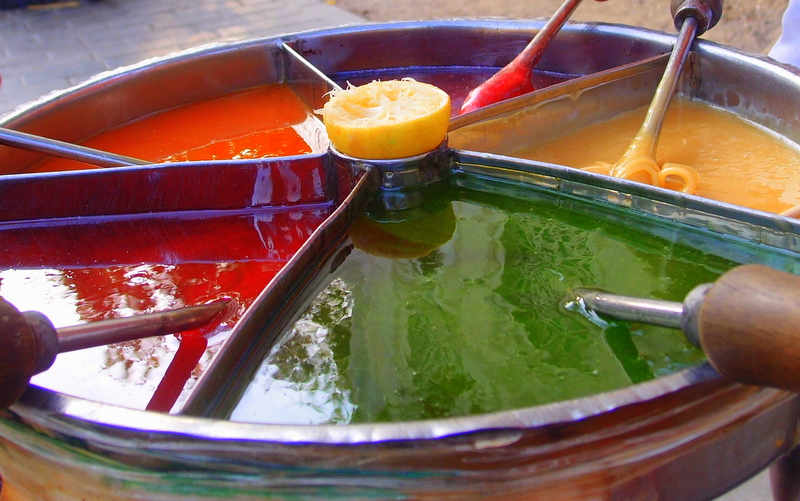
8) Hand-Turned Lollipops
I’ve seen a lot of things in my travels, but Istanbul was the first place where I found a hand-turned lollipop. The stretch of roads and bazaars between Suleymaniye Mosque and Hagia Sophia is filled with lollipop vendors, and for next to nothing, you can custom pick your flavors (I went with lime and strawberry). Sticky molten sugar is churned in a large vat until the vendor pulls a small dollop out using a wooden stick. The stick is then twisted in circles while other colors/flavors are added to create a multi-color candy. So much better than a lolli from a wrapper!
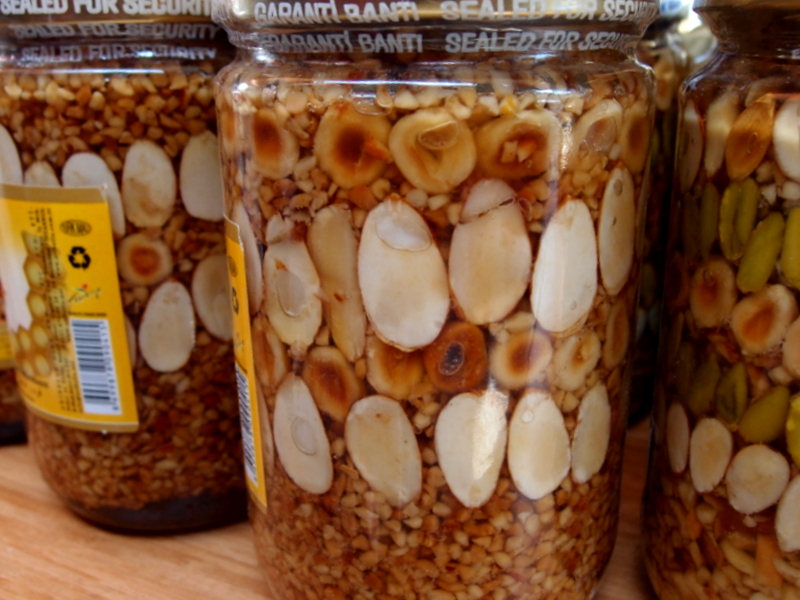
9) Ballı Çerez
As you’ve obviously noticed, the Turks love to include honey in their sweets, and ballı çerez is no different. This is a condiment made from honey, peanuts, hazelnuts, pistachios, walnuts, raisins, apricots and other spices. It’s delicious when spread on bread or plain cookies, but is also served as an appetizer.
Ballı çerez is quite sweet but has a very rich nutty after taste that doesn’t leave you with a stomachache . . . if you proceed with caution. You can purchase it in bulk jars or as just a small single-meal serving. In Turkey, it’s known to be an aphrodisiac and is marketed as such in all tourist markets.
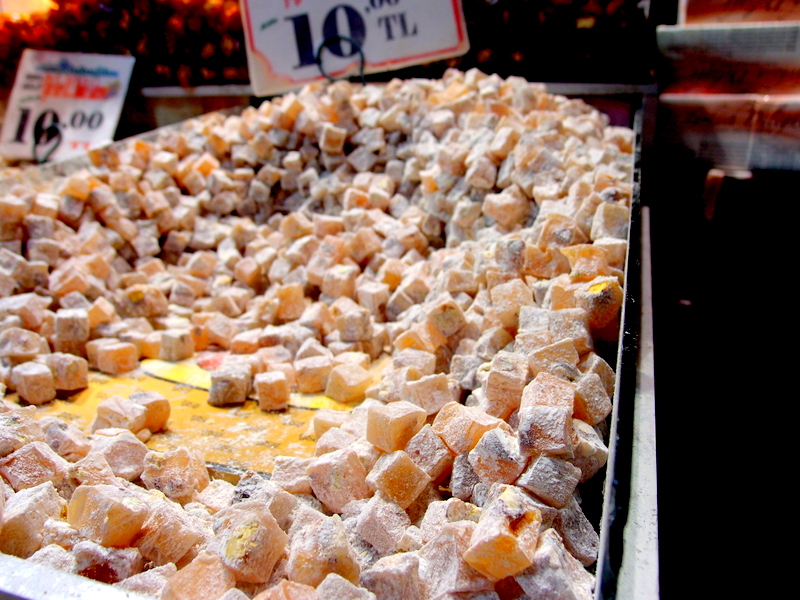
10) Lokum(Known In the West as Turkish Delight)
This is by far the most well-known sweet from Turkey, and it can be found in almost every shop. It is a very simple confection, made from a flavored jelly; nuts such as pistachios and hazelnuts are also frequently added.
The Turks typically make Lokum with rosewater, cinnamon, lemon or other fruit essences. It can either be cut into small cubes and rolled in powdered sugar or coconut or left in long chunky strips. My personal favorite is pomegranate stuffed with pistachios, another specialty of the country. When in Turkey, if you only choose to try one sweet, it absolutely must be Turkish Delight.

/
 A 24-year-old American hailing from Detroit, Michigan, Leah’s passion for travel and trying new cuisines developed after visiting Poland for a two-week holiday and quitting her job to hitchhike around Europe. The next few years were filled with adventure, cycling and rafting around Europe, living in Turkey, and finally moving to Asia. She now shares those adventures and culinary experiences on her website, Thevegetariantraveller.com. Leah has just shared her first book, The Beer Can Cookbook, on Amazon, and is currently teaching English on Jeju Island in South Korea.
A 24-year-old American hailing from Detroit, Michigan, Leah’s passion for travel and trying new cuisines developed after visiting Poland for a two-week holiday and quitting her job to hitchhike around Europe. The next few years were filled with adventure, cycling and rafting around Europe, living in Turkey, and finally moving to Asia. She now shares those adventures and culinary experiences on her website, Thevegetariantraveller.com. Leah has just shared her first book, The Beer Can Cookbook, on Amazon, and is currently teaching English on Jeju Island in South Korea.
The post 10 Must-Try Budget Desserts In Turkey appeared first on The Expeditioner Travel Site.
]]>The post Top 10 Things To Eat In Nicaragua appeared first on The Expeditioner Travel Site.
]]>You hold your beckoning belly and look out into a busy market of street food vendors. You gaze down another cobblestone street in Granada full of restaurants, ready to jump into the local cuisine. Since peanut butter is no longer going to be on the menu for your trip, what can you expect to be filling your plate and gut with this trip?
To get a sense of the unique food here, with its Spanish, Creole and indigenous influences, here are the top ten Nicaraguan dishes for you to eat while in the country.
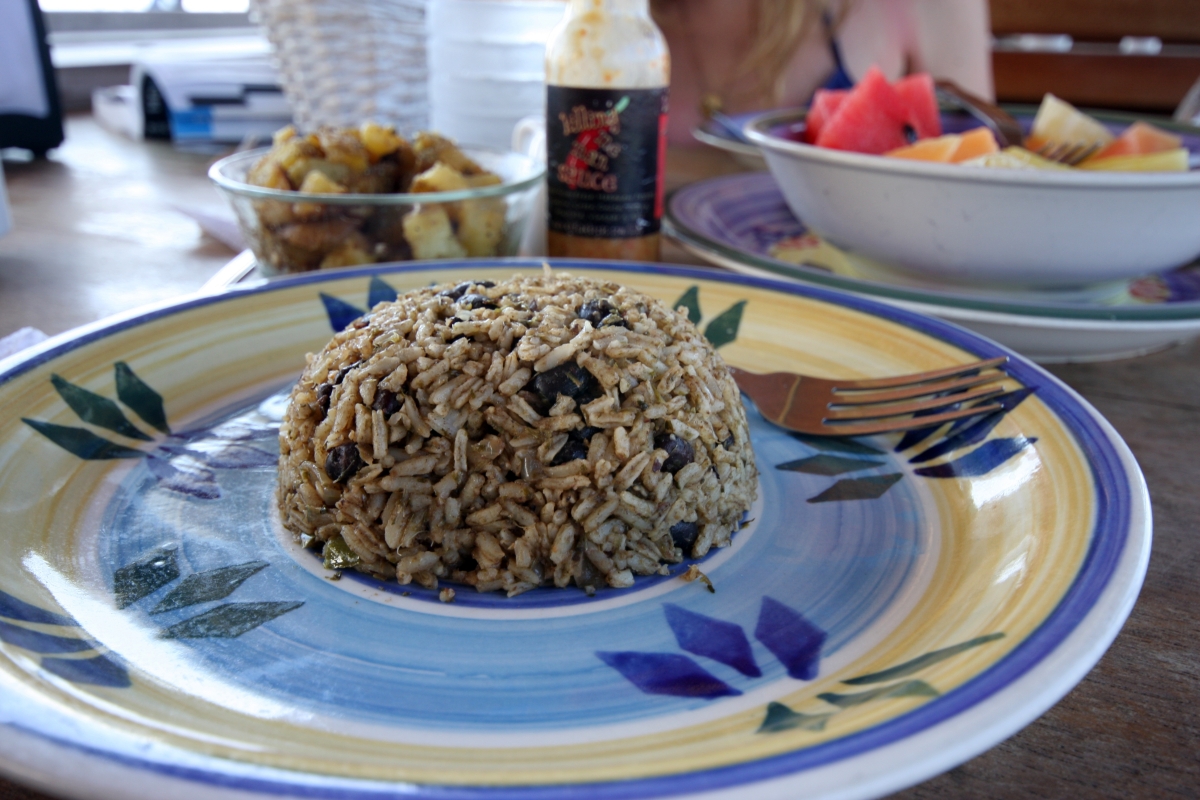
Gallo Pinto
Literally, painted chicken, gallo pinto is the staple food in most Nicaraguan’s diet. Never have grains of rice danced with so much flavor with frijoles.”How could this be,” you ask yourself, thinking, it’s just rice and beans? But Maria, the cook who made them, has a coy, culinary smile on her face, and now you know, Maria is magic, and so are the rice and beans in Nicaragua, tasting in a way no one ever imagined they could. On the Caribbean coast, they mix the rice and beans with coconut. Is it any wonder then why people there walk with a satisfied swagger and often burst out into random song?

Indio Viejo
The tongue is for tasting and storytelling, and indio viejo (old indian) is a dish peppered with legend. As the story goes, a huddle of indigenous Nicaraguans had just prepared a feast of indio viejo when a group of Spanish conquistadors came by and asked them, “Damn, what smells so good?” The Nicaraguans, suspecting that the Spanish had come to mooch off them, told them that an old Indian had just died and that they were serving him up with tortillas, sending the Spanish along their hungry way.
Indio viejo is actually a delicious, heavy meal that takes several hours to prepare. Using a fatty piece of beef as a base, it is made with onion, sweet chili, garlic, salt, tortillas, pig fat, hierbabuena and sour orange — the perfect plate of gluttony, served just before a nap in one of the ubiquitous rocking chairs creaking across the country.
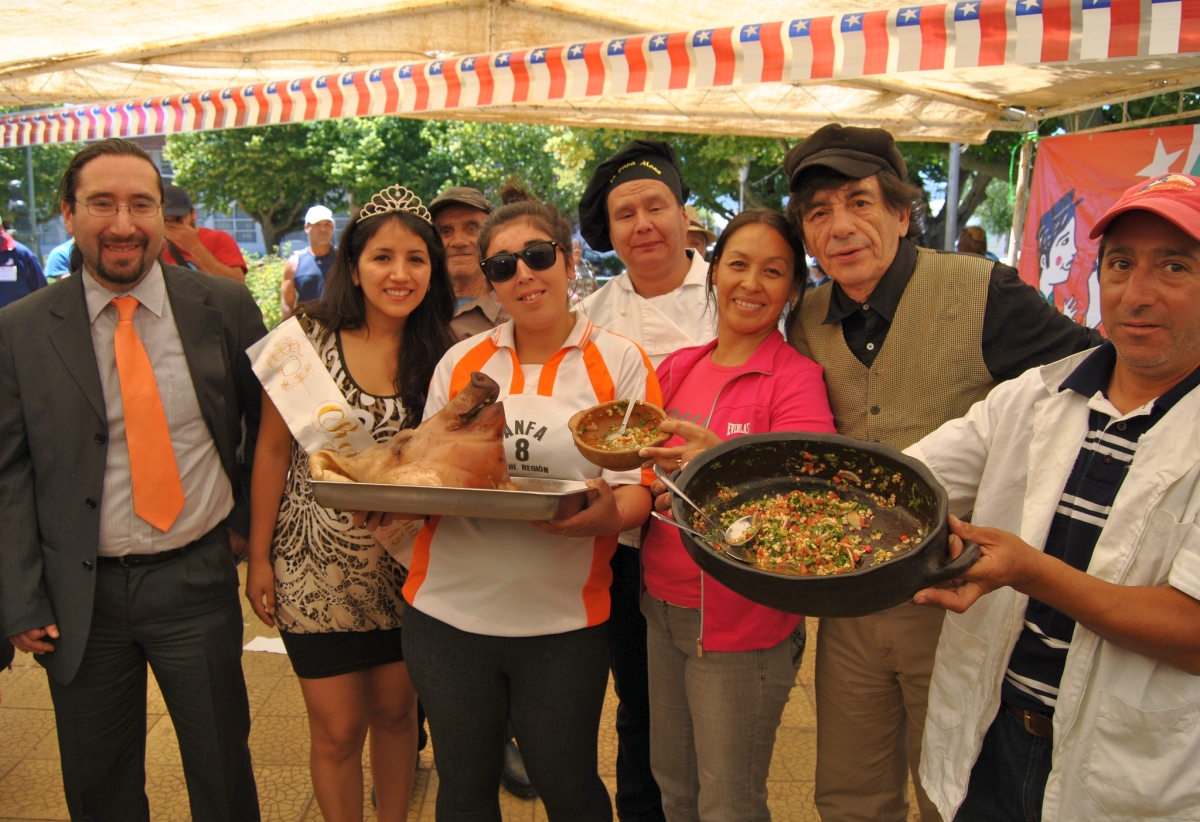
Pebre
For brave travelers not currently reading The Lord of the Flies, pebre is a dish consisting of pig head and other pig parts that the cook happens to have laying around such as liver, ears, tongue, face meat, skin and feet. Throw in some onion, garlic and achiote, mix in some rice into the soup, and you not only have a meal that would satisfy a rogue black bear, but something to tweet home about.
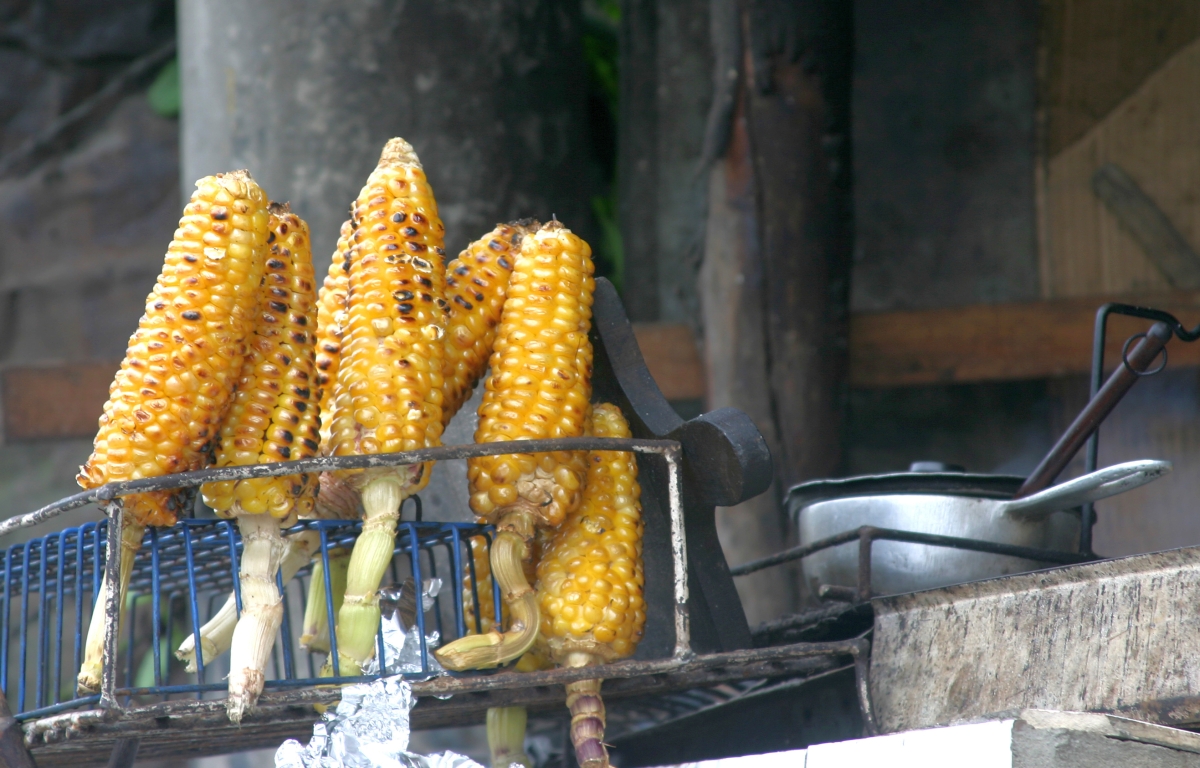
Elotes (Corn on the Cob)
There’s a simple secret to the corn in Nicaragua, which adds a second level of flavorful fantastic. It’s all in the second cooking. The corn is cooked in its husk and then reheated on a grill when it’s ready to serve, which allows it to retain much of its flavor. Expect lime and salt to be added for flavor.
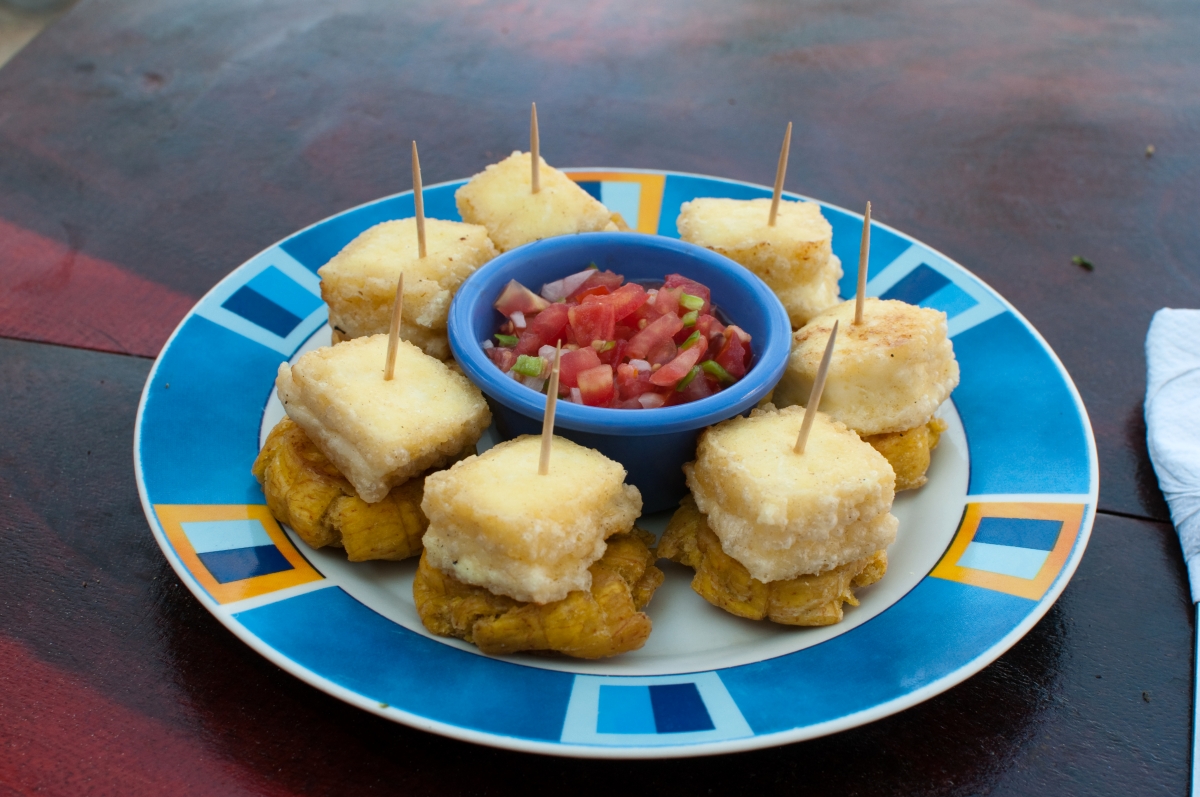
Fried Plantains
Locally called tostones, it is this writer’s opinion that Nicaragua makes them better than anywhere else in the Latin American world. Not mushy like the Guatemalan variety, is it any wonder that the letters from crunchy, jungle-grown tostones can be rearranged to read as “Tootness!”— which is the nonsensical word you exclaim when you try them.
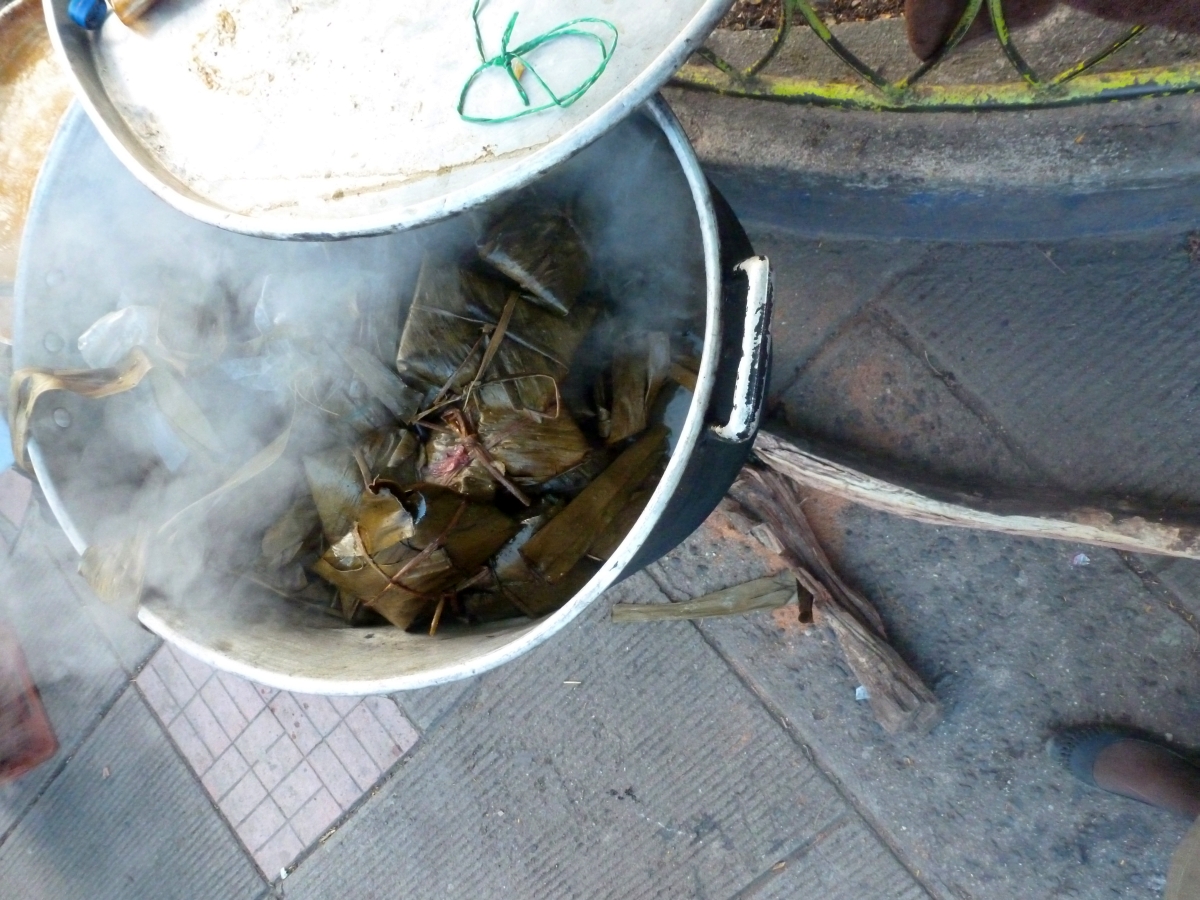
Nacatamal
Along the market roads of Nicaragua, you will inevitably come across a vendor selling little packages wrapped in leaves. Inside these leaves, which are not edible, are meat, rice, potatoes, tomatoes, onions and sweet pepper, all cooked in a dough made of ground corn and butter. Nacatamal is boiled for five hours in the leaves, and can easily be consumed in less than five seconds if you put your mind to it.
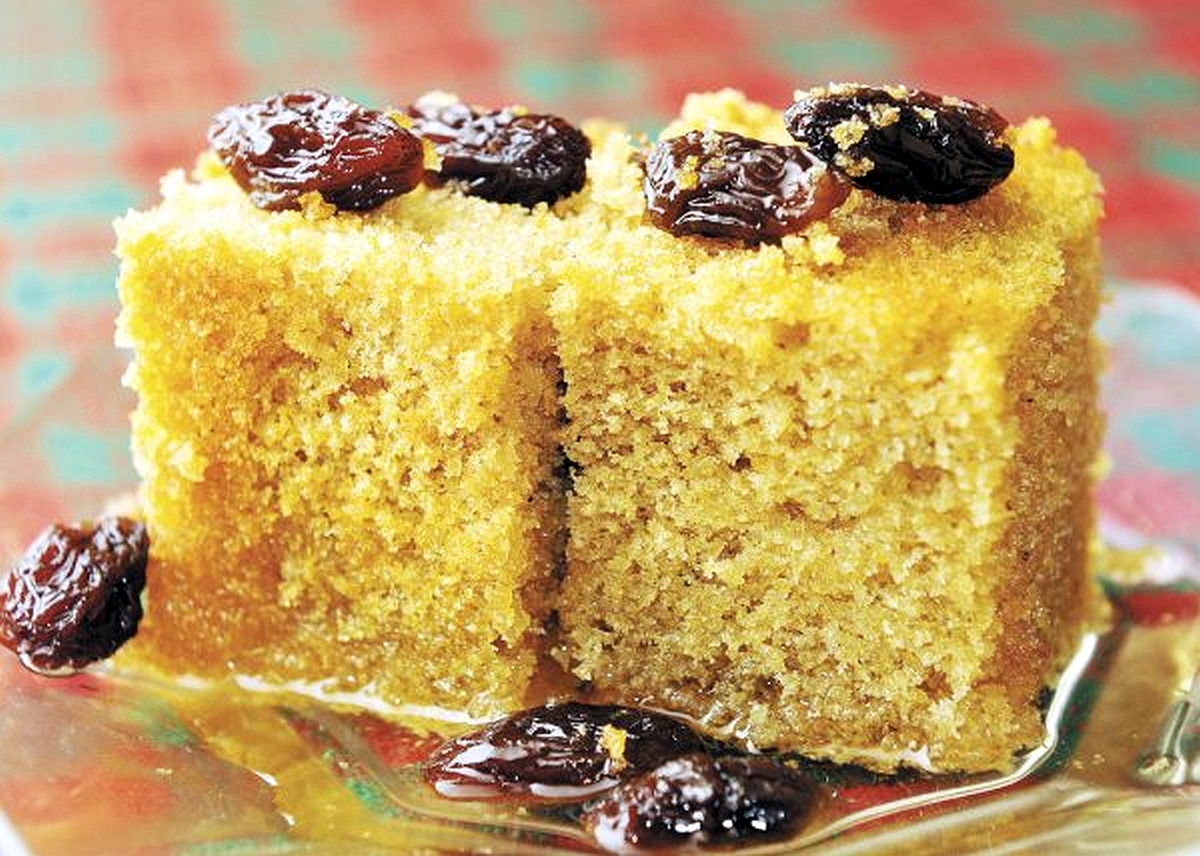
Sopa Borracha (Drunken Soup)/Sopa de Rosquillas
Served around the Christmas holidays, the conversation goes like this:
Tomato Soup: Sopa Borracha, me and the chicken noodle think that you have a problem.
Sopa Borracha: Cinnamon! Sugar!
Tomato Soup: You can’t go on like this. Are you soup or alcohol?
Sopa Borracha: I came for Christmas! I am not even soup, silly tomato purée, I’m actually an alcohol-soaked bread. I laugh in the face of soup. I am a special blend of liquor, soaked in porous bread, mixed with coffee for power! My bread includes cinnamon, liquor, sugar and water and I taste like Christmas, and I pity the sober fool consuming anything other than me.
Sopa de Rosquillas (Donut Soup) – Because it is time to think outside of the bowl. Drunken Soup’s best friend since forever, donut soup, is made with corn donuts mushed into a sweet base. It’s great because — do I really need to explain? It’s soup made out of donuts and haven’t we been subconsciously craving this for years?
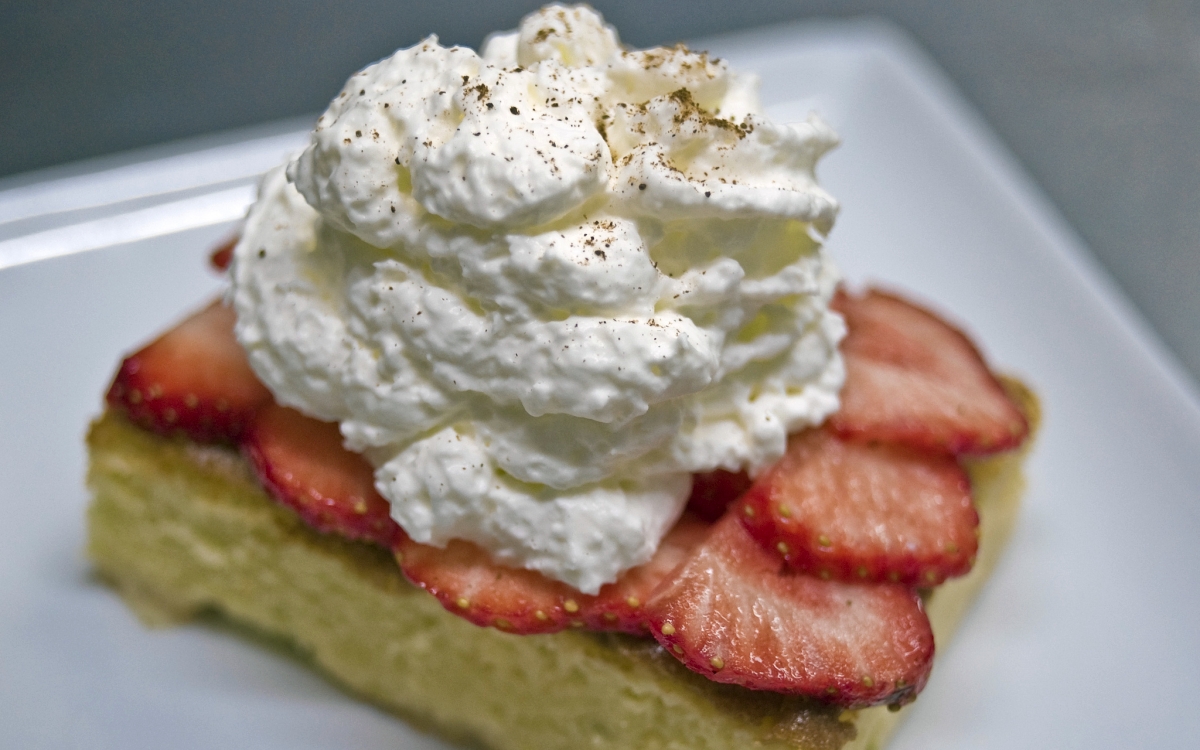
Tres Leches
Now, it’s time for desert, and travelers to Nicaragua talk about Tres Leches like European backpackers speak about Nutella: in hushed, reverent tones that always end with the entreating question, “Do you have any?” Tres Leches is made with three kinds of milk — straight-up normal milk, condensed milk and cream. After that, throw some sugar, flour eggs and meringue in the mix and you are eating a dish that many a Nicaraguan child has stayed up all night dreaming about.
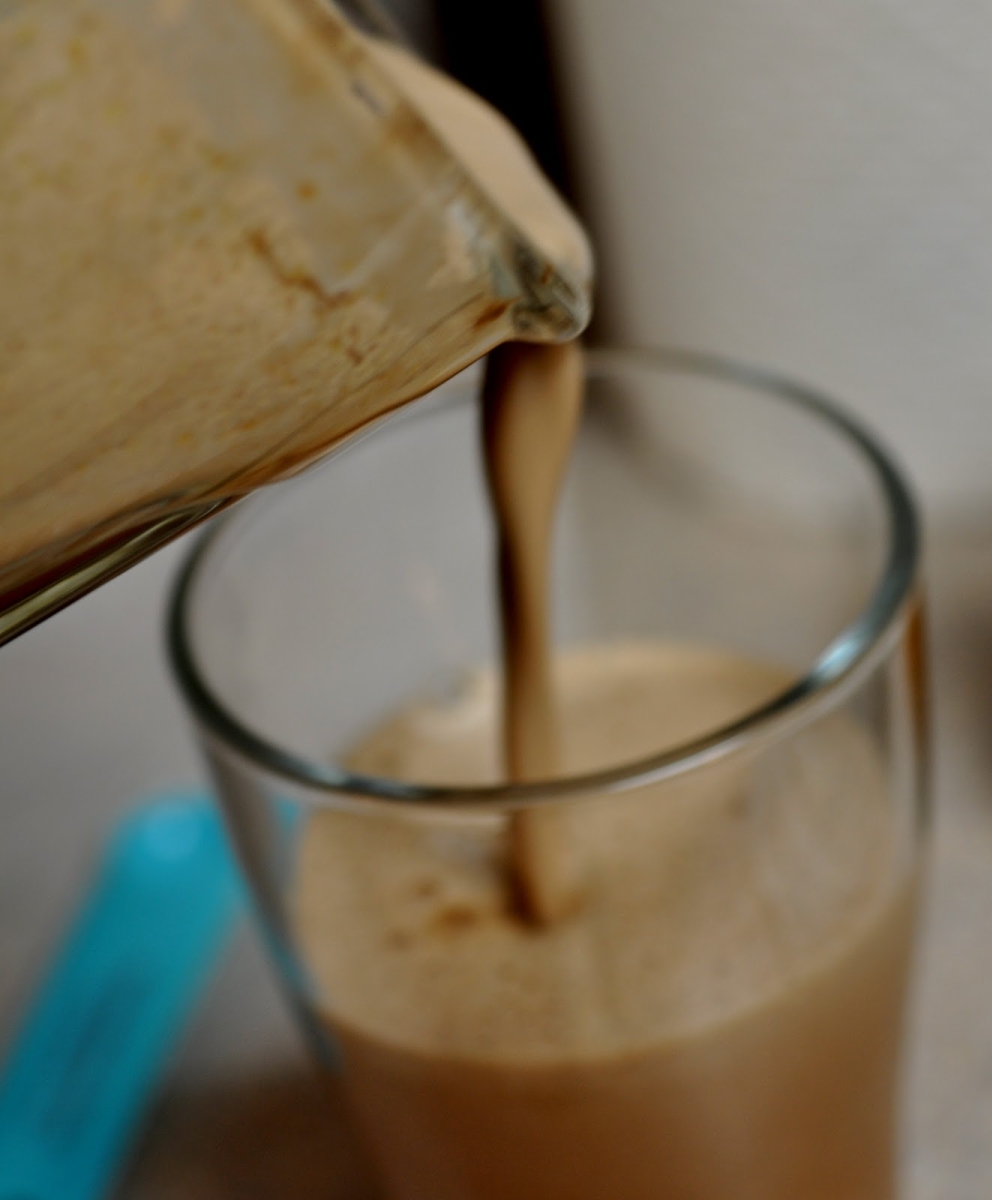
Pinolillo
Ask a Nicaragua to choose between Pinolillo, a corn flour/cacoa-based beverage, and the person they love the most, and they won’t understand the question because they are the same thing. Nicaraguans love their thick, chocolaty Pinolillo like gringos love Nicaragua. And like gringos, it can easily be found in most market stalls.

[Gallo Pinto by Arvind Grover/Flickr; Pebre by Fermentación Guachaca/Flickr; Elotes via Shutterstock; Fried Plantains by Brian Johnson/Flickr; Tres Leches by Omid Tavallai/Flickr]
 Luke Maguire Armstrong lived in Guatemala directing the humanitarian aid organization, Nuestros Ahijados. His book of poetry, iPoems for the Dolphins to Click Home About, is especially enjoyed by people who “don’t read poetry.”
Luke Maguire Armstrong lived in Guatemala directing the humanitarian aid organization, Nuestros Ahijados. His book of poetry, iPoems for the Dolphins to Click Home About, is especially enjoyed by people who “don’t read poetry.”
The post Top 10 Things To Eat In Nicaragua appeared first on The Expeditioner Travel Site.
]]>The post A Wine Lover’s Guide To Casablanca Valley, Chile appeared first on The Expeditioner Travel Site.
]]>
When wine lovers talk about their dream destinations, they always hail the famous Chiantis of Tuscany, the warm Cabernet blends of Napa or the crisp Sauvignon Blancs of the Loire Valley.
Too often, Chile is merely a whisper. The lush, vine-covered hills of the Casablanca Valley have remained mostly under the radar. However, Chile’s superb wine climate, rich soil and booming economy have turned the region into an untapped wine lover’s paradise.
As an avid wine lover and viticulture destination hopper, I had heard about Chile’s young, but vibrant, wine culture and had tasted their oaky Chardonnays and dry Pinot Noirs here at home, but I decided I had to visit the source myself.
Could Casablanca Valley be the next Napa? I decided I was going to find out.
Getting There
Chile, a sliver of a country on the western edge of South America, is like an upside down California. It is bordered by Argentina, Peru and Bolivia, and extends into Antarctica and the Drake Passage in the south.
I was lucky enough to fly during the day into Santiago and got a a slight glimpse of Chile’s unique topography. From volcanoes to fertile valleys to inlets of icy fjords and tropical islands, Chile has many different areas to explore.
However, I was headed straight for the large expanse known as the Casablanca Valley. Casablanca Valley is actually part of the Aconcagua Valley, Chile’s third designated viticulture region, and is located about an hour west of Santiago towards the coastline.
The Central Valley Characteristics
Chile’s unique geography and location is the reason it is one of the only places left in the world that can grow the elusive Carmenère varietal. The Carmenère grape grew abundantly in Bordeaux, France, producing dark red wines until 1867 when it was hit by the phylloxera plague. These tiny, sap-sucking pests wiped out Carmenère crops all over the world. Chile’s grapes were protected in the east by the cold Pacific Ocean air, in the north by the barren Atacama Desert, in the south by the frigid Antarctic glaciers and in the west by the Andes.
Driving out of the airport into the Casablanca Valley, I was struck by how similar parts of it look to California’s wine-producing regions. Even though the vineyards of Chile have the South American equivalent latitudes of North Africa, the climate is classified as Mediterranean. I had read that the climate of Casablanca is comparable to the Californian wine region of Carneros. This was welcome news to me, as I was a fan of both Chardonnay and Pinot noir — popular varietals from both regions.
Local wine expert and tour guide Ines Wiegand told me the climate and soil are why Chile produces such delicious wines. “Our soil is formed by clay and a little bit of sand, which helps with the humidity to form the exact combination to get our delicious varieties of wine.”
I planned my journey during the early April harvest — Chile’s early Fall, which meant that I experienced the airy sunlight and comfortable 70-degree weather as I curved through the sloping hills along Ruta 68, the Autopista Del Pacifico. The Casablanca Valley is one of the few wine regions that does not depend on irrigation from melting snow in the Andes due to its proximity to the coast.
However, when I stopped to buy some local olives, a farmer warned me that the Pacific’s Humboldt current can sometimes blanket vineyards in a cold marine layer. “Always have your jacket with you,” he advised me in his thick Chilean Spanish, a slightly different variant of the Castilian Spanish I had learned back in school.
I continued driving through the amazingly expansive valley. In total there are over 3,531 acres planted in the region and grow. In order of quantity, they are as follows: Chardonnay (5,607 acres), Sauvignon Blanc (4,819 acres), Pinot Noir (1,787), Merlot (966 acres), Syrah (277 acres), Gewurztraminer (161 acres), Viognier (121 acres), Pinot Gris (84 acres), Riesling (82 acres), Cabernet Franc (32 acres) and Malbec (15 acres).
The Vineyards
Wine lovers have a large variety of choices in the area. Here are some of the most popular wineries that pair superb tastings with picturesque views that you can check out.

1) Matetic
Matetic winery specializes in making organic biodynamic wines. Located on the border of Casablanca Valley and the Rosario Valley, Matetic boasts a new state-of-the-art winemaking facility designed by architect Laurence Odfjell.
During the tour of the stunning facility, you will learn how their 300,000-liter capacity tank relies on a gravitational flow design to optimize storage of the fermenting grapes. During a tasting, be sure to try their famous “EQ” Sauvignon Blanc, which has a spicy bouquet of fresh pear and tangerine, perfect for a warm afternoon. In addition to their Sauvignon Blanc, they also produce Chardonnays, Pinot Noirs and Syrahs.
2) Veramonte
Veramonte is one of the largest vineyards in Chile, with over 1,000 acres in the Casablanca Valley. Its California-style facility by Chilean architect Jorge Swinburn is nestled in forest-filled hills, home to more than 24 species of birds.
This is a great vineyard to visit for families, as the Veramonte property not only has an antique winemaking exhibit hall filled with old barrels and wine contraptions, but also boasts picnic and game areas among the vines and olive trees. Their most popular varietals are Sauvignon Blanc, Chardonnay, Pinot Noir and Merlot. Their Veramonte 2012 Syrah Rose is a deep pink, raspberry-scented summer wine, which is wonderfully crisp on the palate.
3) Indómita
The Indómita castle-like winery floats on top of a vine-covered hill right at the start of Casablanca Valley. Their Casablanca Valley location focuses on white wine. Their Duette Chardonnay 2009 is particularly delightful with a hint of pineapple and boasting a buttery texture. Wine is not the only treat at Indómita: in-house Chef Oscar Tapia serves gourmet Spanish Chilean lunches daily at Restaurante Viña Indòmita on the property.
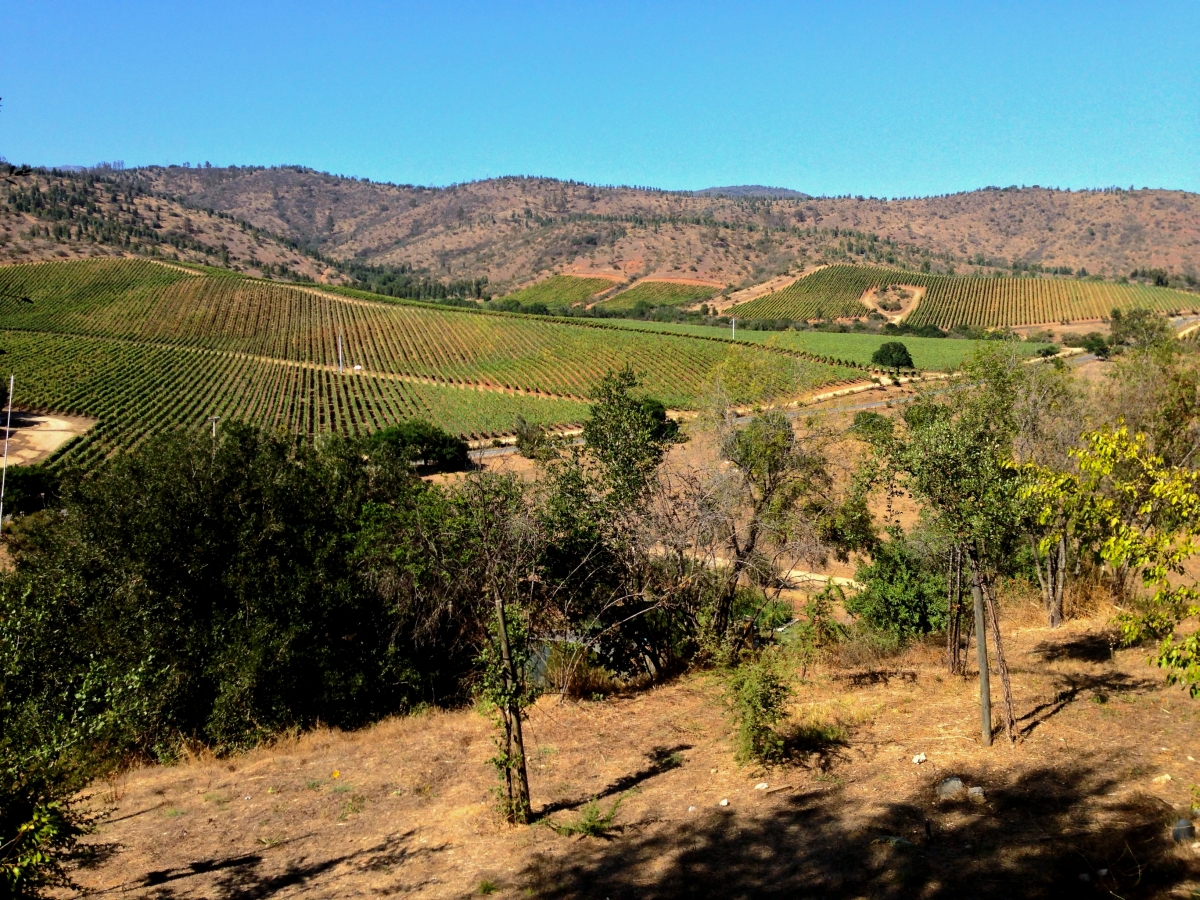
4) Casas del Bosque
Indómita isn’t the only place to get a decadent lunch in the valley. Casas del Bosque is a family boutique winery that offers premium wine and terrace dining at their Tanino Wine Bar & Lunch. Here you can get Chilean delicacies and sip their unique Syrah created in this cool coastal region. Their Gran Estate Selection Private Reserve 2007 is particularly noteworthy with its intense violet color and bouquet of blackcurrant, blueberry and anise.
5) Vina Morandé
Pablo Morandé planted Casablanca Valley’s first vineyard in 1982. Over 320 acres of vines make up the Belén Estate in the Casablanca sector known as Lo Ovalle. The sleek, glass-and-wood building is surrounded by vines, most of which produce Chardonnay and Pinot Noir. Another superb restaurant on the vineyard, House of Morandé, serves up an international menu by Chef Christopher Carpentier. Be sure to try their sparkling wine, Morandé Brut Nature, which is 60% Chardonnay and 40% Pinot Noir, and has a delicate sweetness.
Conclusion
Could the Casablanca Valley be the next Napa or Sonoma? While both the wine and views are more than comparable, it’s nearly impossible to squeeze all of the sites and tastings into one weekend. Perhaps that makes it better than either of those American wine regions. In reality, the most difficult part of my trip, if anything, was simply the act of having to leave.
*
Matetic
www.matetic.cl
Veramonte
www.veramonte.com
Indómita
www.indomita.cl
Casas del Bosque
www.casasdelbosque.cl
Vina Morandé
www.morande.cl

/
 Vanessa Van Edwards of ScieneOfPeople.com is a published author and behavioral investigator. She is a professional people watcher—speaking, researching and cracking the code of interesting human behavior for audiences around the world. Vanessa’s groundbreaking workshops and courses teach individuals how to succeed in business and life by understanding the hidden dynamics of people. Vanessa is a Huffington Post columnist and Penguin author. She has been featured on NPR, the Wall Street Journal, the Today Show and USA Today. She has written for CNN, Fast Company and Forbes.
Vanessa Van Edwards of ScieneOfPeople.com is a published author and behavioral investigator. She is a professional people watcher—speaking, researching and cracking the code of interesting human behavior for audiences around the world. Vanessa’s groundbreaking workshops and courses teach individuals how to succeed in business and life by understanding the hidden dynamics of people. Vanessa is a Huffington Post columnist and Penguin author. She has been featured on NPR, the Wall Street Journal, the Today Show and USA Today. She has written for CNN, Fast Company and Forbes.
The post A Wine Lover’s Guide To Casablanca Valley, Chile appeared first on The Expeditioner Travel Site.
]]>The post Brewvana And The Rise Of Portland’s Female-Run Brewery Tour Empire appeared first on The Expeditioner Travel Site.
]]>When I was recently in Portland, Oregon, I had the opportunity to take a craft beer tour with Brewvana, the predominantly women-led beer tour company that features decked-out green-and-white converted school buses (Angel and Rosie), edible stomach-hardening pretzel necklaces and insight from some of the more knowledgeable female beer connoisseurs in the city (though they have recently been adding some Y chromosomes to the team), which is saying something in Portland, a town that boasts 74 craft breweries in its metro area. And, yes, given the above, when Brewvana’s buses pull up and its customers roll out the front doors, everyone around takes notice.
Though they offer a number of different tours throughout the week, my particular “Friday Behind The Scenes Tour” was led by the knowledgable and personable Margot Ripley — a Portland native whom I randomly ran into while hiking in the Columbia River Gorge two days later — and featured stops at some of the more well-known breweries in the city, including Buckman Brewery, Laurelwood Public House and Brewery, Widmer Brother Brewery and Upright Brewery. Needless to say, the tour was a welcome introduction to a city that I had been in for less than 90 minutes before tasting my first brew.
Other than the obvious beer tastings at each stop, we were also lectured on the ins and outs of the brewing process, as well as given the opportunity to meet and ask questions from representatives of some of the brewers at each stop. At Laurelwood, owner and brewmaster Mike DeKalb welcomed us into the back of the house to observe the brewing process close-up, which involved them getting their seasonal Green Elephant IPA ready for imbibing (mellow malt character, big hoppy overtones).
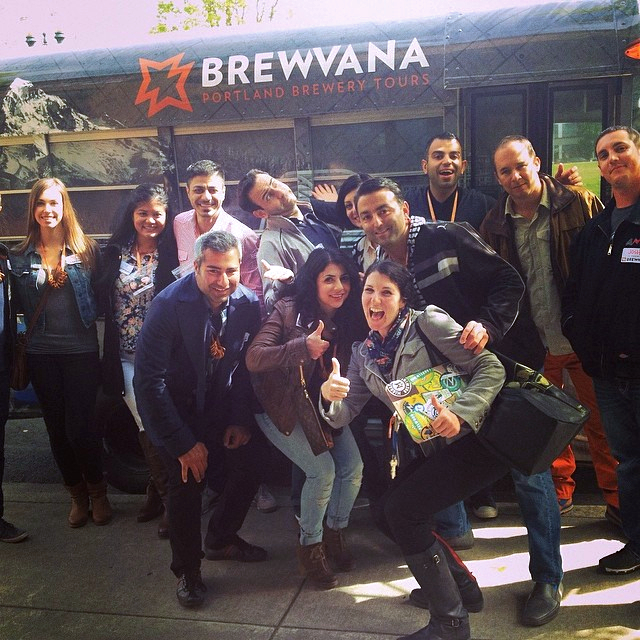
Not only was the experience uniquely “Portland,” but I also got to learn a lot about the massively successful local beer scene, meet some great people who all share a love of good beer, and also catch up with one of my favorite young entrepreneurs in the world, Brewvana’s owner and founder, Ashley Rose Salvitti, whom I had the pleasure of meeting initially here in New York.
The above video from Portland-based videographer Mike Vraneza features Ashley, the brains behind the entire operation, as she goes about her normal work day. Salvitti, who is from Upstate New York by way of North Carolina where she went to school and obtained degrees in Art and Psychology, also recounts the story of how she started a business of touring breweries, something she knew little about at the time she started the tour company.
As anyone that’s spent a few minutes with Ashley knows, her enthusiasm and dedication is contagious, and if you don’t want to drop everything and start helping to spread the gospel about Brewvana or pitching in to help fix the bus when it breaks down (which it has been known to do, but not so much anymore — don’t worry), then something’s seriously wrong with you.
Of course, as she hilariously explains in the video, lack of experience or lots of capital didn’t stop her, and when life handed her a faulty transmission one heavily scheduled weekend, she made a kegger and borrowed a van to keep the tours going.
Salvitti’s story, like many people’s in Portland, is one that is unique to a city that has an incredible ability to inspire people to pursue their dreams, to think differently and to keep going when other people say something can’t be done — common themes you hear time after time from entrepreneurs all over Stumptown who have decided to strike out and start businesses as varied as manufacturing artisanal chocolate to selling vegan dog shampoo.
Next time you’re in Portland, which is hopefully soon, be sure to block off some time for a Brewvana tour for what will likely be one of the highlights of your trip. You’ll probably walk away from it with a newfound appreciation for the city’s craft beer scene and the people behind it. And at the very least, you’ll walk away with a few great beers in your stomach, a great way to experience any city, but especially Portland.

[Well Then… Don’t Give Up via Vimeo]
[To learn more and to book your own Brewvaana tour, please visit their site here. Though Brewvana provided this particular tour to me on the house, tours range in price from $59 – $85, and private tours are available upon request.]
/
 Matt Stabile is the founder and Editor-in-Chief of TheExpeditioner.com. You can read his writings, watch his travel videos, purchase the book he co-edited or contact him via email at any time at TheExpeditioner.com.
Matt Stabile is the founder and Editor-in-Chief of TheExpeditioner.com. You can read his writings, watch his travel videos, purchase the book he co-edited or contact him via email at any time at TheExpeditioner.com.
The post Brewvana And The Rise Of Portland’s Female-Run Brewery Tour Empire appeared first on The Expeditioner Travel Site.
]]>The post Facing The Feces Factor: Tasting My First Cup Of Kopi Luwak Coffee appeared first on The Expeditioner Travel Site.
]]>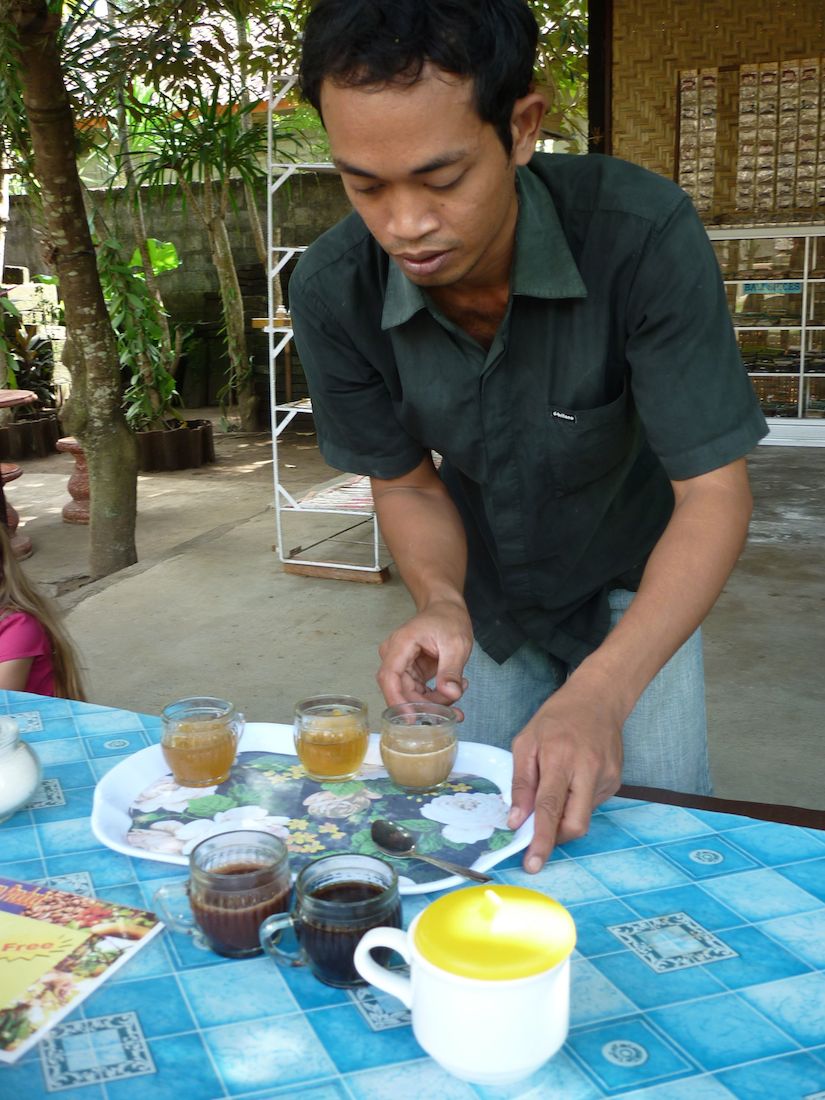
My first cup of Kopi Luwak coffee, sometimes better known as “cat poo coffee” or the rarest beverage in the world, was a memorable introduction into the highly envious world of extreme luxury, though this tasting occurred far outside the confines of the dining room of a fine-dining restaurant in Hong Kong or New York where cups of Kopi Luwak can run upwards of $50 (or $600 if you wanted to purchase a pound of these coveted beans).
In my case I was sitting at a picnic table covered with a blue-checkered tablecloth near the outskirts of the Indonesian jungle with my husband, Kurt, who had also noticed a hyperactive mongoose pacing in a cage nearby. It seemed rather random, but we were in Southeast Asia where we didn’t understand the local pet protocol.
We were far more focused on sipping the many varieties of teas and coffees offered by one of the hosts of a family-owned coffee compound outside of Ubud, Bali. After having toured the grounds along with our kids, we had been invited to the tasting.
However, we soon learned that the mongoose was actually a closely related animal called a civet, and it was not just an anxious pet ready for a romp in the rainforest. At this particular compound, the family produced a highly prized coffee, Kopi Luwak, which is processed in the stomach of the civet. The coffee farmers feed the beans or “coffee cherries” to the civet, and then the enzymes and acids in the animal’s stomach essentially marinate and break down the bean, thereby eliminating bitterness and creating the most expensive coffee beans in the world.
The catch: the only way to get the processed beans is by waiting for the civet to release them into the wild. Yes, until they defecate. Once this has happened, someone gets to pick the beans from the dung and remove the outer layer of the bean, so it is finally ready to be roasted. Our host explained this to us and gave us a flyer to read.
Frankly, it sounded like something that Eddie made up. Like any five-year-old, most of his revelations and stories involved poop, farts, boogers or any other product that shot or drained out of an orifice. Kurt and I looked at each other, considering the reality of this coffee. Our host offered each of us a cup.
“How about some Fecal Folgers?,” “A tall cup of nonfat, no foam turds, please,” “Well, I prefer a grande carmel macchiato from Starbutts.” It was too easy to make jokes, but should we drink it? Our dilemma was whether to be culturally sensitive and embrace the offering or to come off as lame, mistrustful tourists.
Kurt shrugged his shoulders and then both of us picked up the cups. If ever there was a one-of-a-kind cultural experience, this was it. I swished the coffee around in the cup. It looked like regular coffee — no suspicious residue readily visible.
Time to down the dung. It was really quite smooth, almost creamy. Actually, it was delicious. The host smiled and nodded as if he knew what we were thinking. He then gave cups to the kids. I almost put my hand out to halt him, but then I stopped. Normally, I wouldn’t let the kids, who were five and three years old, drink anything with caffeine, but what the hell? Why not?
Kurt and I drank the stuff. Plus, we hadn’t brought the kids to Bali to drink rainbow sparkle smoothies with Mickey and Minnie. At worst, we’d have a night of family bonding and barfing.
Both Eddie and Kasey grinned at each other after they drank the beverage. Part of the thrill, I’m sure, was that they were consuming something they knew was for adults. We also avoided telling them about the feces factor. However, we did inform them that they were drinking a “special” coffee.
Special indeed. In fact, coffee connoisseurs from around the world want these expensive coffee beans, which can cost hundreds of dollars per pound.
They also note that Kopi Luwak has seen a growth in popularity in recent years decades after almost disappearing as a beverage in Indonesia. Although historically Kopi Luwak has experienced various trendy times, especially with foreigners living in Indonesia. Dutch colonists consumed the Kopi from the 1600’s to the end of their rule at the beginning of World War II. Then, during the war, while Japanese soldiers occupied Indonesia, they developed a taste for the turdy beans.
And who can blame them? At the moment, I really couldn’t think of anything I’d rather do than hang out at Balinese family-owned coffee compound in the jungle and drink poop coffee with my own family and a hyper civet.
By Steph Glaser

ABOUT THE AUTHOR
 A freelance writer, teacher and traveler, Steph Glaser studied in the Netherlands during college and then updated a chapter on the country for the now defunct budget travel guide series, The Berkeley Guides. Additionally, as an American exchange teacher in Australia, she became fluent in Aussie teenage slang courtesy of her high school students. Currently, Glaser lives with her family in Colorado where she teaches public speaking and writes about her travel blunders for her blog, TravelOops.com.
A freelance writer, teacher and traveler, Steph Glaser studied in the Netherlands during college and then updated a chapter on the country for the now defunct budget travel guide series, The Berkeley Guides. Additionally, as an American exchange teacher in Australia, she became fluent in Aussie teenage slang courtesy of her high school students. Currently, Glaser lives with her family in Colorado where she teaches public speaking and writes about her travel blunders for her blog, TravelOops.com.
The post Facing The Feces Factor: Tasting My First Cup Of Kopi Luwak Coffee appeared first on The Expeditioner Travel Site.
]]>The post A Foodie’s Guide Where To Eat And Drink In Melbourne appeared first on The Expeditioner Travel Site.
]]>It’s no secret Melburnians (yes, I had to Google that), take a certain pride in Melbourne’s cultural offerings. Though I haven’t been yet, I’ve heard many an Australian dismissively refer to Sydney as the Miami of the country, and Melbourne as their New York (or, maybe their Brooklyn).
Add on top of this the fact that the city is home to people from 140 different countries, and you can assume there is a thriving foodie scene within its borders.
In this video, Michaela Guzy of OhThePeopleYouMeet.com takes a tour of some of the great places to eat and drink around the city with local food writer and guide Monique Bayer, author of Devouring Melbourne, including stops at The Little Mule Co. coffee shop, Vic Market, Huxtable (a The Cosby Show-inspired restaurant — yes you read that right), St. Crispin and others.
By Matt Stabile

ABOUT THE AUTHOR  Matt Stabile is the founder and Editor-in-Chief of TheExpeditioner.com. You can read his writings, watch his travel videos, purchase the book he co-edited or contact him via email at any time at TheExpeditioner.com. (@TheExpeditioner)
Matt Stabile is the founder and Editor-in-Chief of TheExpeditioner.com. You can read his writings, watch his travel videos, purchase the book he co-edited or contact him via email at any time at TheExpeditioner.com. (@TheExpeditioner)
The post A Foodie’s Guide Where To Eat And Drink In Melbourne appeared first on The Expeditioner Travel Site.
]]>The post The Australian Coffee Invasion Has Begun In New York appeared first on The Expeditioner Travel Site.
]]>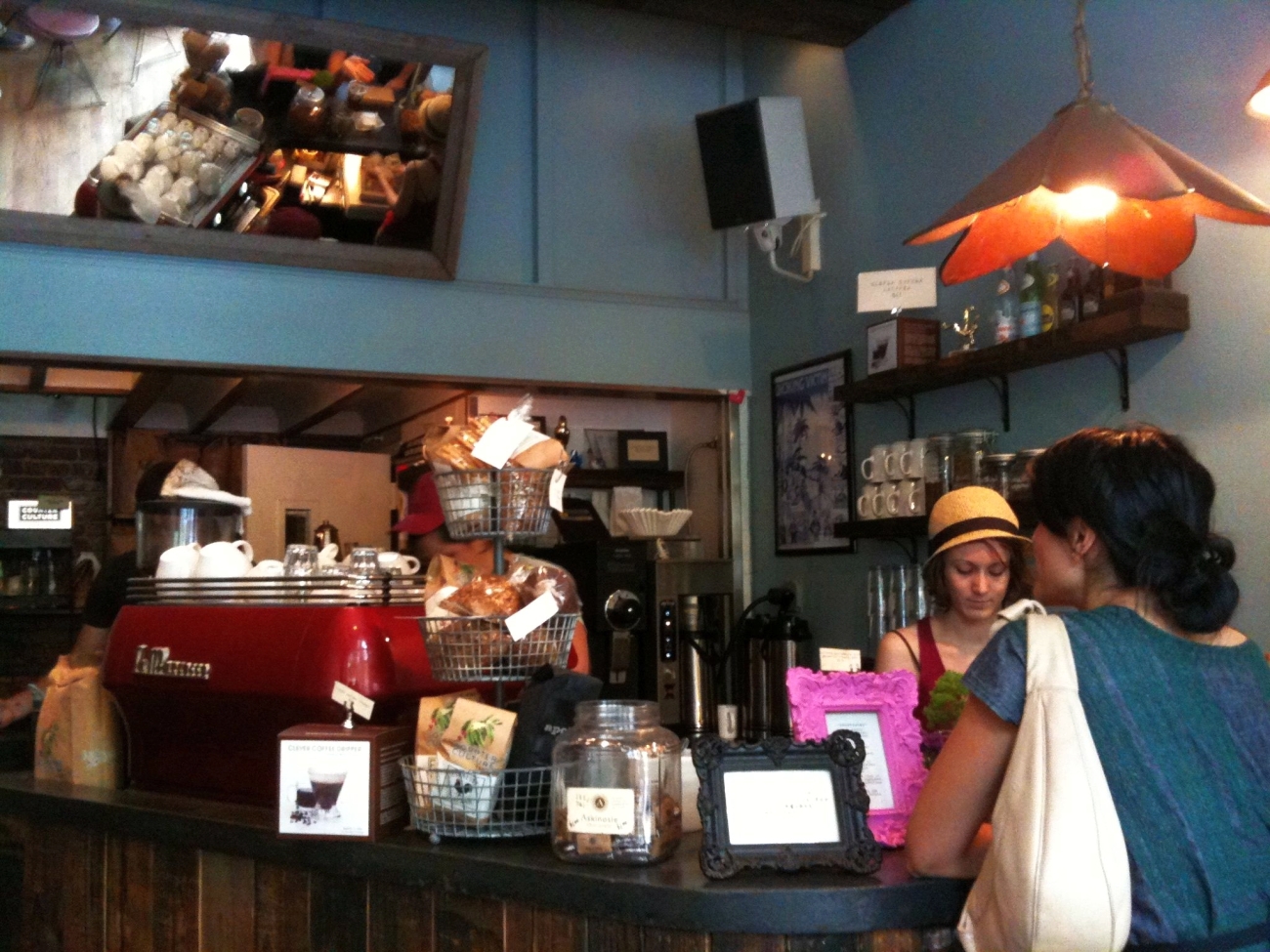
Apparently, if an Australian gives your city the thumbs up for being up on the coffee culture, you have succeeded. You see, you may not have known it, but the Australians are actually java connoisseurs, something I learned while reading this recent article in the Sydney Morning Herald, which shows caffeine fanatics where to look in New York for a decent sip of brew.
They not only highlight the cool cafes in Manhattan (such as Bluebird Coffee Shop in the East Village — run by Melbourne expat Alex Hall), but they also knowingly delve into coffee-centric Brooklyn where Toby’s Estate, the well-known Australian coffee company, opened its first American branch.
Still, when reading the article, I had one question burrowing in the back of my brain: Who would have thought that coffee would be loved so much down under (far from the coffee-growing regions of the world)?
Upon further investigation, I learned there is a general consensus that Australians have a strong (or bold?) coffee obsession. They savor Italian-inspired stove-top espressos as well as the divine shot pulled from a La Marzocco machine. So ardent are they in their love of a quality cup, some even claim to detox before venturing to North America to avoid having to succumb to getting their fix in a Starbucks. In fact, it wasn’t too long ago (2008 to be precise), that Starbucks was struggling so much in the Australian market that it had to close 61 of its 84 outlets as a result of the country’s sophisticated coffee palate.
Perhaps it comes down to geography. Perhaps as a result of being simultaneously surrounded by breathtaking scenery and dramatic landscapes, they have become accustomed to the bold and the beautiful. Whatever it is, I am happy that they push the bar and pull the shots.
By Brit Weaver
[Bluebird Coffee Shop by Jill M/Flickr]

About the Author
 Toronto born and based, Brit is an avid leisurely cyclist, coffee drinker and under-a-tree park-ist. She often finds herself meandering foreign cities looking for street eats to nibble, trees to climb, a patch of grass to sit on, or a small bookstore to sift through. You can find her musing life on her personal blog, TheBubblesAreDead.wordpress.com.
Toronto born and based, Brit is an avid leisurely cyclist, coffee drinker and under-a-tree park-ist. She often finds herself meandering foreign cities looking for street eats to nibble, trees to climb, a patch of grass to sit on, or a small bookstore to sift through. You can find her musing life on her personal blog, TheBubblesAreDead.wordpress.com.
The post The Australian Coffee Invasion Has Begun In New York appeared first on The Expeditioner Travel Site.
]]>The post Here’s What You Can Expect During A Food Tour Of Veracruz appeared first on The Expeditioner Travel Site.
]]>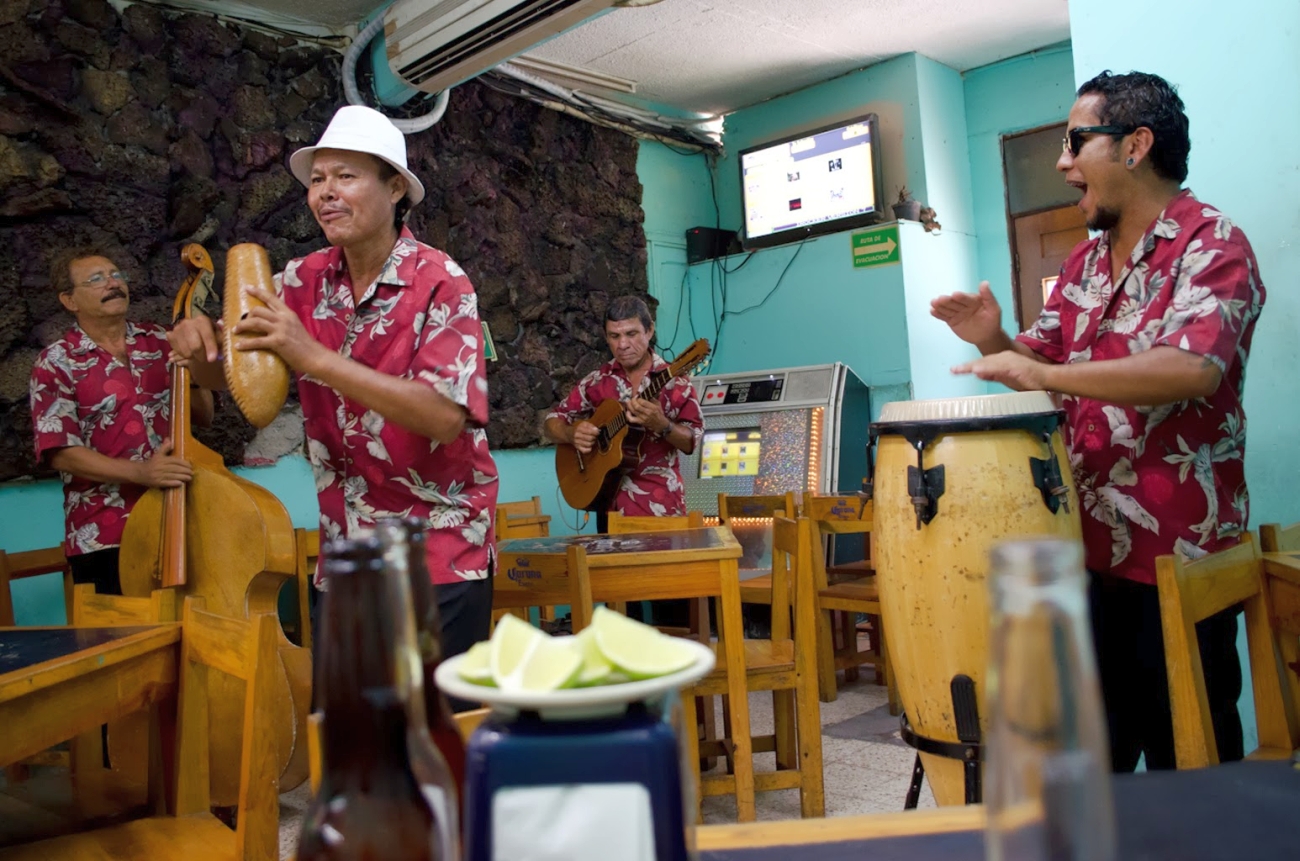
The air outside is thick, but the smoke in Santana’s bar is thicker. Even if I were a non-smoker it would be worth it just to sit in the bar’s tiny, air-conditioned seating area and watch the old men slowly drink themselves into an affectionate stupor at three in the afternoon.
This is the first stop on my locals-only, rambling tour of Veracruz, Mexico, and we’re starting with beer. This crescent-shaped state straddles the eastern portion of Mexico along the Gulf of Mexico and is famous for its history of pirates, Carnaval and the uniquely Son Jarocho style of music with its indigenous, Spanish and African musical influences — all indicative of its unique location.
Santana’s has an upside down emergency exit route sign placed gingerly between cracks in the wall. I imagine if there were a real emergency that no one would hurry to the door — no one here seems to be in a hurry to do anything. An old jukebox in the corner sits silent and a list on the wall advertises a bottle of tequila for 500 pesos (about $40). Thank God the beers are only 16 pesos.
My photographer friend, Joyce García, is a Santana’s regular. She was born in the port and when she returns to visit family she makes the bar her own personal office because of its free internet and cheap beers. “This place gets crazy,” she says as an entire salsa band walks through the door and starts to play. “Just wait a few hours.”
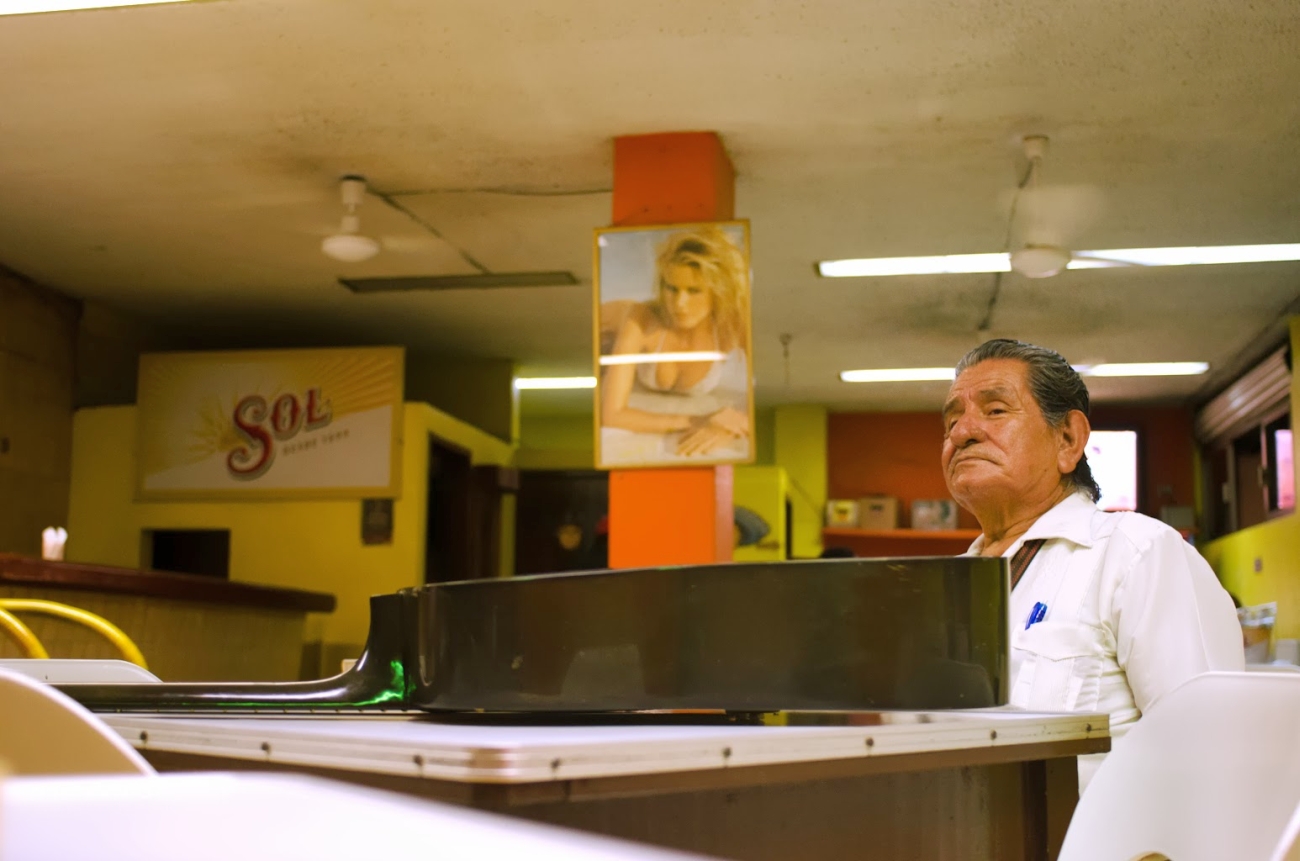
After a couple of songs and a couple more beers we leave Santana’s aquamarine walls and head down Zaragoza street to Bar Titos. Posters of half-naked women on the walls give the bar its racy element but the atmosphere is otherwise tame, with a few couples swinging to norteña music and kids wandering in and out, looking to sell candy or watch the soccer game for a few minutes. No air-conditioning here, just slow, lazy fans pushing around the salty Veracruz air.
When we get to Noche Buena bar on Arista street, I immediately fall in love with its swinging wooden doors. Every old cantina should have a wild west feel to it. Tonight, a Wednesday without a live band, the mood is relaxed and customers sit in clusters, sipping tequilas and sucking on limes sprinkled with salt. On the T.V. behind the bar, 1950’s Mexican movies play and a cat named Alfonsa rubs up against me begging for attention.
We take a break from drinking to sample the fare at Joyce’s favorite tacos de guisado stand, Los Gueros, in front of Sanborns restaurant off the main plaza. She orders a sweet tamale de elote and I eat a pork taco in spicy green tomatillo sauce and one of egg mixed with mild chile pasilla. We share an horchata — the classic rice milk drink with hints of cinnamon.
We set out from the stand on a night ramble through the historic center’s plazas. I am remembering one that I stumbled upon on my last visit here when I was a mere tourist without my local tour guide. There was a Cuban son band playing that night, and old and young couples were swaying to the music on the street. Men double my age and half my height even asked me to dance.
I find out it’s called la Plaza de la Campana for the large bell that looms over the plaza’s cement stage. You can find music there regularly. This night a band plays boleros — Mexican love songs — to a crowd seated around tables. The plaza is ringed by seafood restaurants and tiny torta shops and spectators appear to be settling in to watch until dawn.
La plaza de la Lagunilla is also lovely, with a square of park benches filled with kissing, whispering lovers and a statue of Benny Moré, the famous Cuban composer who was adopted by the Veracruz people as a native son.
La Pachanga is the last stop on the night’s pub crawl. It sits across from Veracruz’s famous portales and is the city’s late-night locals hangout. On the weekend, cumbia and salsa bands entertain the slightly lit crowds of dancers, revelers, lovers and those looking for love. After a few tequilas everyone is up and dancing, even though tonight it’s only music over the speakers and the morning is slowly washing in like the Veracruz tide.
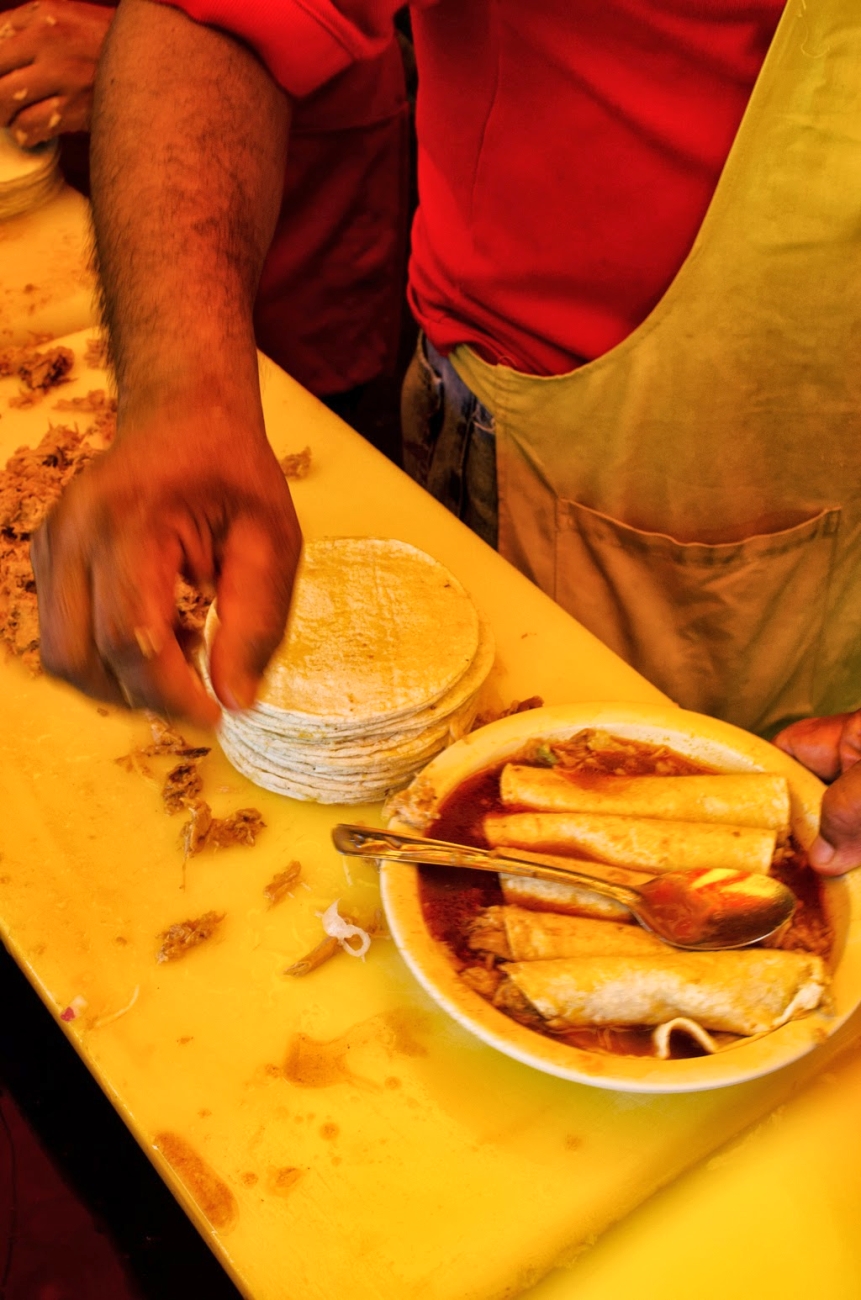
Breakfast for Veracruzanos means picadas (flat thick tortillas with a smear of beans, salsa and cheese), gordas (puffed dough that resembles tiny elephant ears made either savory or sweet) and tacos de cochinita pibil from David’s taco stand on Gómez Farías street. David’s cochinita is not like cochinita in Mexico City, where the pork is swimming in a spicy garlic and achiote sauce. This version is a mild and fragrant cochinita broth ladled on top of tightly rolled pulled-pork tacos. The stand is only open from 10 to 4 everyday. Thank God or I would probably have eaten every meal there during my visit.
Seafood is ubiquitous in Veracruz. The city’s coastal location has not only made it an important shipping port, but also a vital source of the mariscos that jarochos — Veracruz locals — are crazy about. We’re too late for the fish market that is 10 minutes outside of town. Its stalls start to shutter their doors by 3 p.m. most days and the real action there is in the morning. But we do find El Torbellino, a local seafood restaurant without all the cheesy nautical decorations and annoying waiters hassling you at the door.
We eat a plate of snail ceviche — thick, tender snail meat “cooked” by lime juice and mixed with a sprinkling of fresh tomatoes and cilantro — and sample a shrimp cocktail that is less sweet than most I have had in Mexico. Both taste amazing, especially with a cold beer, although we agree that the texture of the snail takes some getting used to.
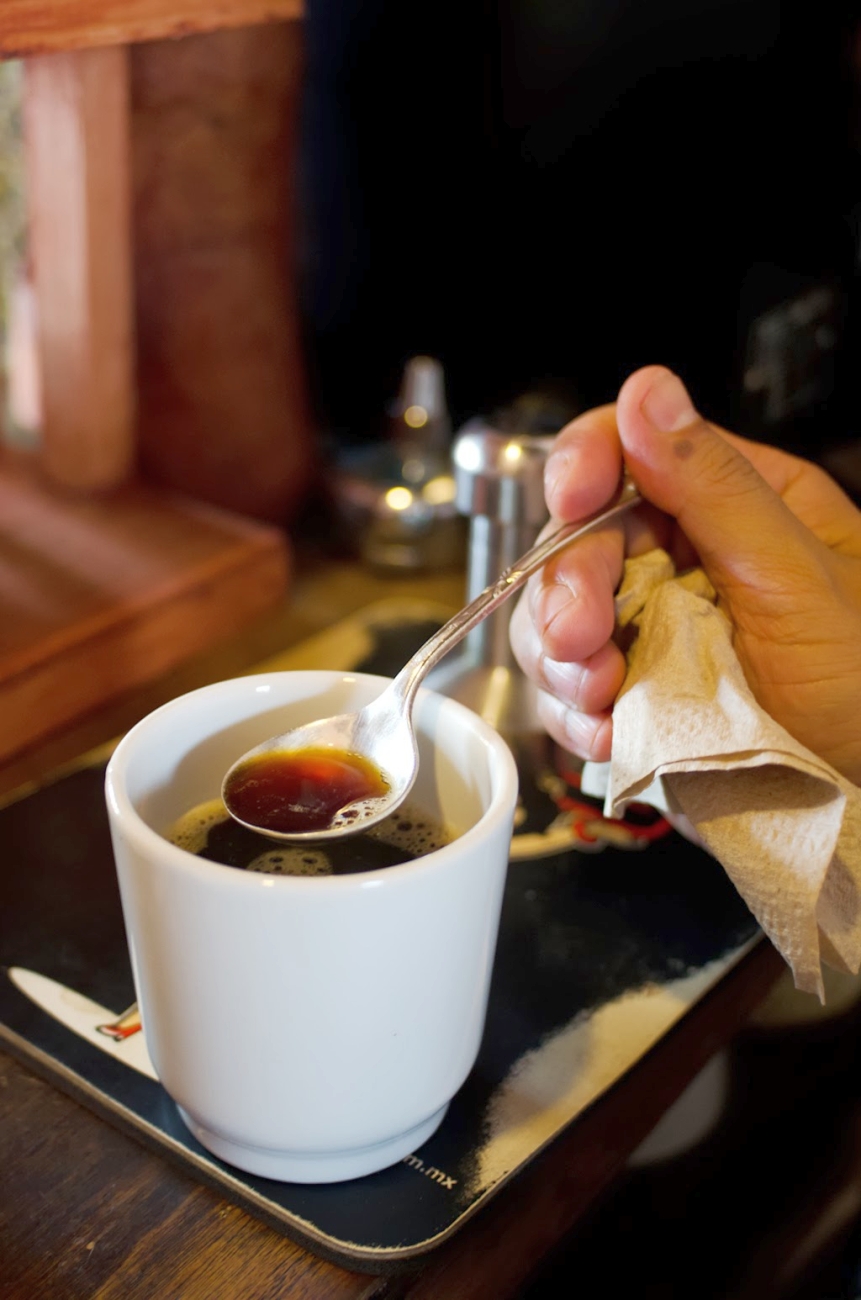
The following day we wander away from the city’s heat and take the bus to Coatepec for a final culinary escapade. Joyce assures me that this mountain town has the best coffee in Mexico and after visiting I tend to agree. Avelino’s cafe, downtown Coatepec in front of the San Jerónimo church, is a shrine to the roasted bean, and owner Avelino Hernández sits with us for over an hour talking about his upcoming book, Las Frutas Encendidas, and coffee’s spiritual qualities.
We also visit the Resobado bakery, which looks like an old woodworking shop and smells like heaven. Along its spartan walls are wood-fired pastries and breads, and the place permeates with the smell of yeast and campfire. We buy cookies with piñocillo (a type of Mexican brown sugar), wheat yeast rolls and conchas (sweet bread).
I want to be able to say that Coatepec is truly the best place for visiting coffee-lovers and so as a security measure we stop at Cafetal Apan for a final cup of coffee. I’m not let down. In fact more than down, the caffeine gives me a buzz I won’t lose for a couple of hours until we’re finally sitting in Las Tradiciones restaurant in the Costa Verde neighborhood downtown Veracruz chowing down on steaming hot ground beef and potato empanadas and drinking cold beers in the pouring rain.
I’m in a bit of a panic at this point that I haven’t yet tried the Naval hotdogs or been to Emily’s Antojitos on Zapata street that I heard is incredible. I also want to make my own seafood feast in Joyce’s kitchen from what I can find at the fish market. But time is running out. I decide incredible empanadas are not a bad final feast.
By Lydia Carey
[Photos by Joyce García]

Locations
Santana’s Bar
Zaragoza
(In front of Los Portales)
Veracruz
Bar Titos
Zaragoza 208
Veracruz
Rest-Bar Noche Buena
Mariano Arista 803
Veracruz
(229) 932-5122
La Pachanga
Mario Molina 100
Veracruz
Tacos de David
Corner of Gómez Farías and Esteban Morales
(In front of Notiver)
Veracruz
Mercado la plaza del mar (Veracruz Fish Market)
Corner of J.M. García and Fidel Velásque
Veracruz
El Torbellino
Corner of Esteban Morales and Zaragoza
Veracruz
Avelino’s Cafe
Mansión de Los Azulejos
Aldama 4
Coatepec
(228) 816-3401
Resobado Bakery
Constitución 3
(228) 817-8888
Coatepec
Cafetal Apan
Constitución 48
Coatepec
Las Tradiciones Restaurante
Mar Mediterráneo 338
Veracruz
ABOUT THE AUTHOR
 Lydia Carey is a full-time writer and translator living in Mexico City who loves to eat. Her work has been published in Mexico’s English-language newspaper The News and The New World Review. She can be contacted at carey.lydia8[at]gmail.com.
Lydia Carey is a full-time writer and translator living in Mexico City who loves to eat. Her work has been published in Mexico’s English-language newspaper The News and The New World Review. She can be contacted at carey.lydia8[at]gmail.com.
The post Here’s What You Can Expect During A Food Tour Of Veracruz appeared first on The Expeditioner Travel Site.
]]>The post My Culinary Saga in Iceland appeared first on The Expeditioner Travel Site.
]]>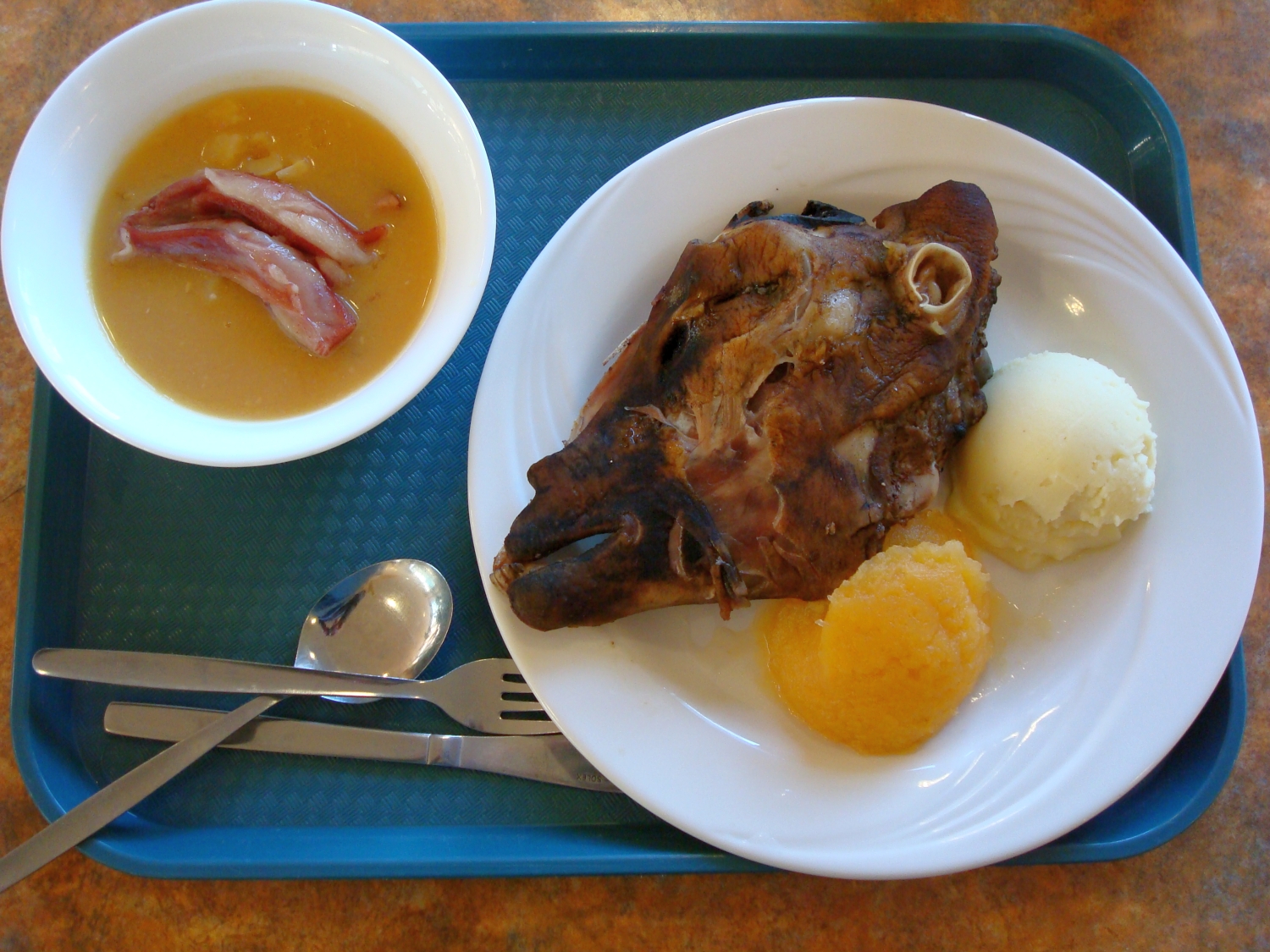
“You can eat as much as you want, because it’s already half digested,” said the man sitting to my right, smiling through his thick brown mustache and watching expectantly as I took another swig of Viking beer. I forced myself to smile back at him as I speared a gelatinous piece of yellowish whale fat with my fork. It quivered as I lifted it into the air.
Before I could take a bite, our hostess, Sigurveig, appeared, brandishing a large green bottle. “More schnapps?” I nodded in agreement, happy for the distraction. Setting the flesh back on my plate, I tore off a piece of flatbread and placed it in my mouth. It was chewy — not unlike pita, but somewhat denser. And it tasted like charcoal. Well, this is what you signed up for, I told myself, washing the flatbread down with another drag of lager.

Sipping my morning cup of coffee six hours earlier, I had watched the sky fade from an inky midnight blue to chilly cyan. It was February in Reykjavik, Iceland, the northernmost capital in the world. I had traveled 2,600 miles to a frozen slab of volcanic rock in the middle of winter to experience Thorrablót, a celebration of rotten-tasting food.
And I’d come at the right time. It was Thorri, the fourth winter month of the Old Icelandic calendar, when offerings like sheep-head jam and fermented shark appear alongside typical Scandinavian fare such as dried cod and marinated herring. As a gastronome with an urge to journey back in dietary time, I hoped that an iron stomach and a little luck would teach me something about Iceland’s culture.
My introduction to traditional Icelandic cuisine was through Bjarni Alfredsson, a gregarious 59-year-old who offered to buy me lunch at Fljótt og Gott, a cafeteria-style restaurant he owns in Reykjavik’s main bus station. Eagerly accepting his invitation, I hurried to Vatnsmyrarvegur — an almost unpronounceable address — where he met me with a firm handshake and a stained white chef’s coat.
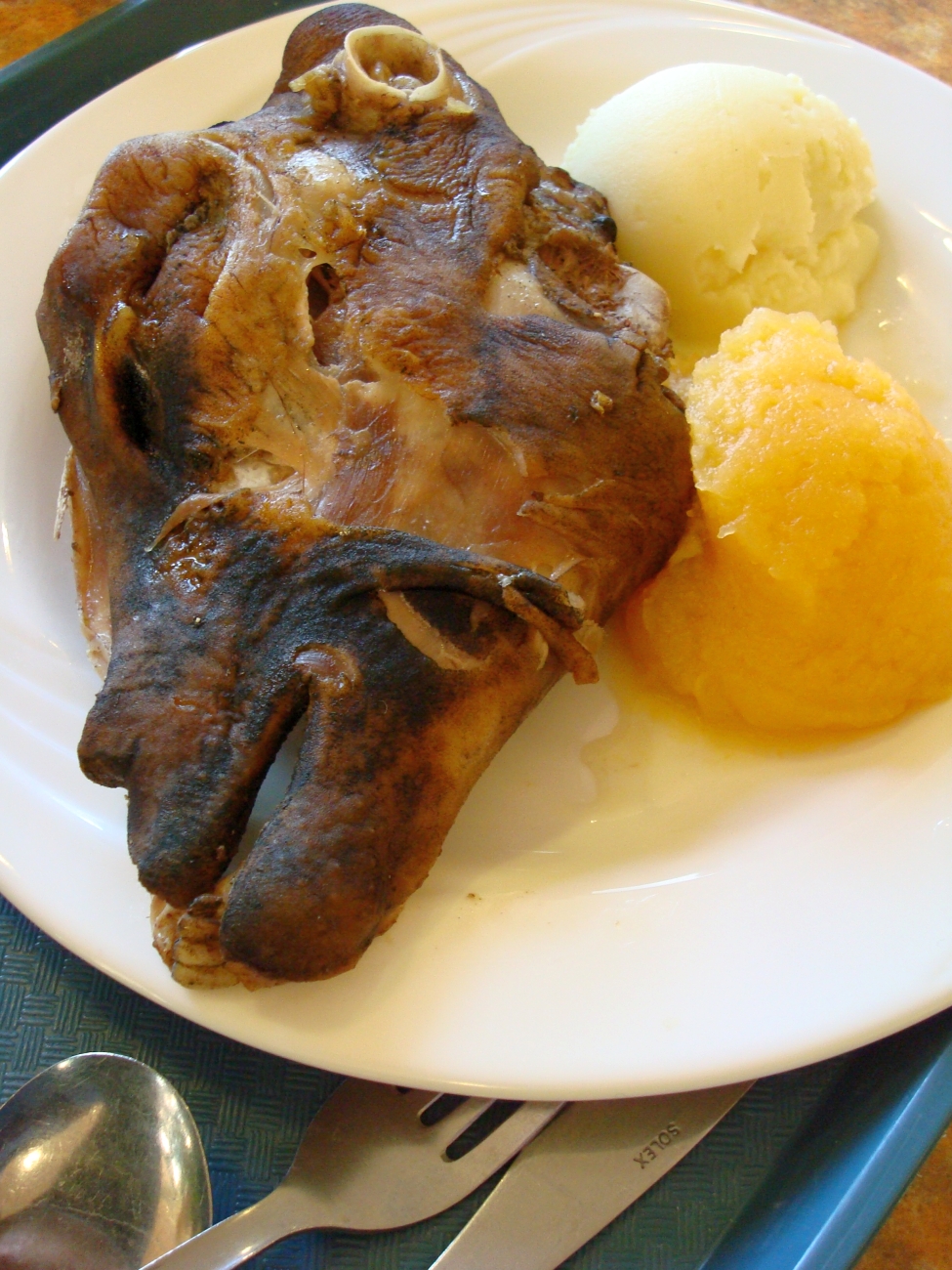
Shortly after showing me to a table, Alfredsson returned with a plastic tray laden with meat and starch. On the left, two bright pink pieces of fatty lamb floated in a large bowl of thick, mustard-colored soup. To the right, a scoop each of pureed turnips and mashed potatoes flanked a boiled ovine head (svid), its desiccated lips parted to reveal several narrow, rectangular incisors. Fumbling for the silverware, I glanced at the meal in front of me, and then back up at Alfredsson’s round, unshaven face.
“Very tasty. Sheep’s head,” he explained, reassuringly.
Using the dull knife provided, I sawed into the sheep’s face to cut off a tough and somewhat rubbery piece of gray meat. The scoop of unseasoned vegetables did little to enhance the flavor. I sliced another chunk from the neck and slowly chewed, wondering how often Icelanders actually order this stuff.
“Have some tongue,” Alfredsson suggested.
I mumbled something about getting full.
“Yes, very filling,” he replied. “That’s how we live all these years in the cold and bad houses. We had the fat.”
Alfredsson was referring to his country’s relatively unfortunate culinary history: several centuries characterized by poverty, famine and limited resources. To survive harsh winters on isolated homesteads, Icelanders had to rely on food stores that were anything but rich in variety. Towns didn’t exist until the 19th century, and even then, merchant ships from Denmark or elsewhere in Europe only brought commercial goods during the summer months.
Cereal grains, which were less profitable than other commodities, didn’t often find their way to Iceland’s remote fjords, and without access to much salt or naturally occurring spices, Viking settlers preserved what little they had by smoking it (often with sheep dung, as wood was scarce, too) or keeping it in sour whey. The dishes served at Thorrablót hearken back to those austere years. For modern inhabitants of this island nation, consuming smoked and fermented foods is a form of cultural nostalgia, a celebration of the way things were.
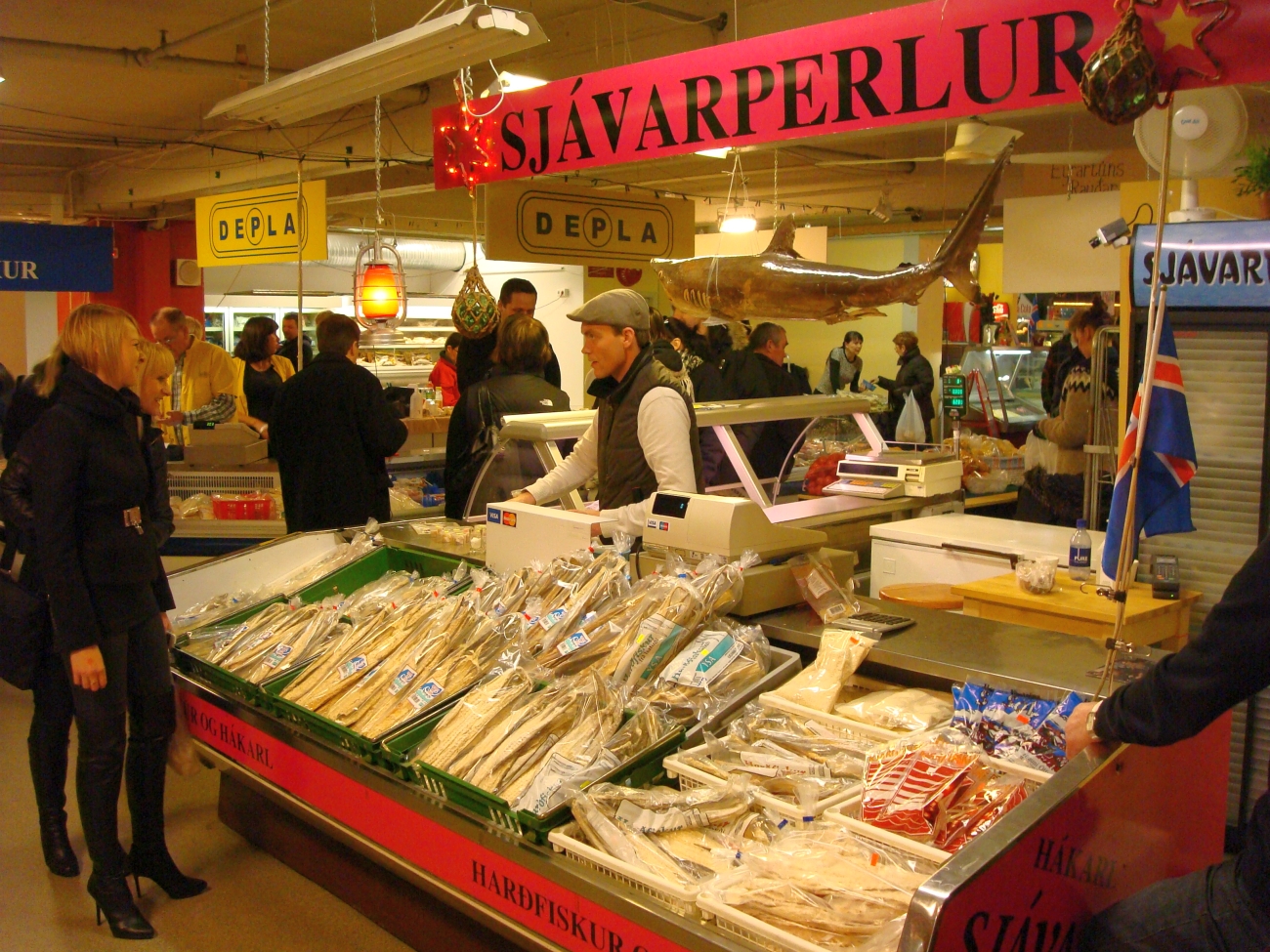
Today, Iceland ranks high on the Human Development Index, and its citizens enjoy a comfortable standard of living. Few, if any, Icelanders eat traditional dishes like rams’ testicles (hrútspungar) out of necessity anymore, opting instead for popular ocean-fare delicacies such as creamy lobster soup and seared sea scallops.
Processed fish, particularly cod, haddock, saithe and herring, represents roughly 40 percent of Iceland’s export economy. And though the success of this economy largely depends on the quality and palatability of this seafood, neither of the aforementioned nouns can be used to describe what passes for fish dishes during Thorrablót, which I discovered for myself while at a Thorri feast with Árni Björnsson, the former curator for ethnology at the National Museum of Iceland.
Other than calories, I have no idea what nutritional benefits putrefied shark could have provided to early Icelanders, but this singularly pungent dish shows up at every Thorri feast, usually in the form of dusky white or grayish cubes. Known as kaestur hákarl, putrefied Greenland shark is an acquired taste infamous for provoking strong reactions. The poet W. H. Auden was inspired to pen a few lines about the delicacy on his visit to Iceland in 1936. “Owing to the smell it has to be eaten out of doors. It is shaved off with a knife and eaten with brandy. It tastes more like boot polish than anything else I can think of.”
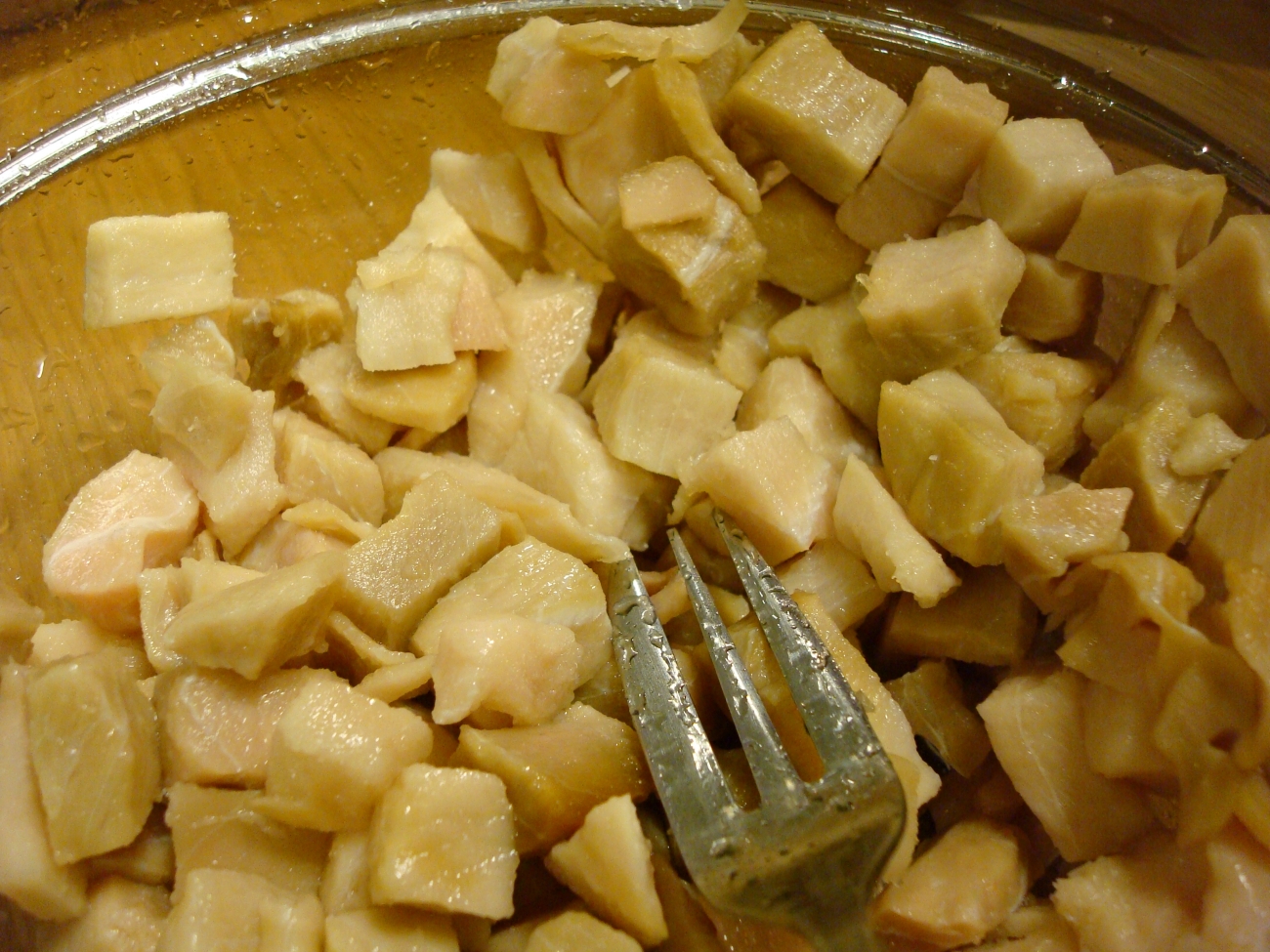
Under the eager gaze of my hosts, I speared a chunk of kaestur hákarl with a toothpick and popped it into my mouth. My first reaction was to gag at the burning sensation that prickled my tongue and climbed up my nostrils. My second was to slug a small glass of Brennivín, the schnapps that continued to be liberally portioned out to everyone around the table.
I’ve never tried boot polish, but I’m willing to guess that the taste of putrefied shark hasn’t improved since Auden’s trip nearly 75 years ago. And why would it? The preparation method has remained the same for generations: Skin, gut and butcher the animal into long strips. Bury these pieces in a shallow hole by the sea and wait three to four months for the meat to ferment. Hang them in a shed to dry for another few months, cut the flesh into small pieces and serve it to a devoted Icelandic customer base that considers kaestur hákarl a delicious appetizer.
That night, watching my dinner companions toss back shots of caraway-flavored Brennivín while joyfully shouting along to a heavily accented version of Billy Joel’s “Piano Man,” I found myself overcome by a feeling of warmth and satisfaction. Sure, the pungency of the shark made my eyes water, and the slimy blob of súr hvalur, or sour whale, required multiple shots of schnapps to keep the nausea at bay, but the haggis-like blood sausage (slátur) didn’t taste half bad, and the smoked lamb was actually quite good. What the Thorri feast lacked in culinary masterpieces was made up for in congeniality among the attendees. The celebration seeming to be as much about beating the 18 hours of darkness as the food.
By 9 p.m. we were out of beer and running dangerously low on Brennivín. But the mood remained cheerful, a happiness that can only be experienced on a full stomach. Outside of the modern harbor-side building we occupied, the dark North Atlantic stretched to the horizon. The streets were silent except for the frigid February winds buffeting the windows. At that moment, the temperature didn’t matter. Our hunger was satiated, our thirst was slaked, and we had music to help us pass the long winter night ahead.
By Ben Keene

ABOUT THE AUTHOR
 Ben Keene is a beer journalist, travel writer, and the author of The Great Northeast Brewery Tour. An intrepid eater who never goes anywhere without a pair of hiking boots, he also blogs at Where and Back, you can follow him on Twitter here: @whereandback.
Ben Keene is a beer journalist, travel writer, and the author of The Great Northeast Brewery Tour. An intrepid eater who never goes anywhere without a pair of hiking boots, he also blogs at Where and Back, you can follow him on Twitter here: @whereandback.
The post My Culinary Saga in Iceland appeared first on The Expeditioner Travel Site.
]]>The post The Spice Of Balinese Life: Notes From A Cooking Class In Ubud, Bali appeared first on The Expeditioner Travel Site.
]]>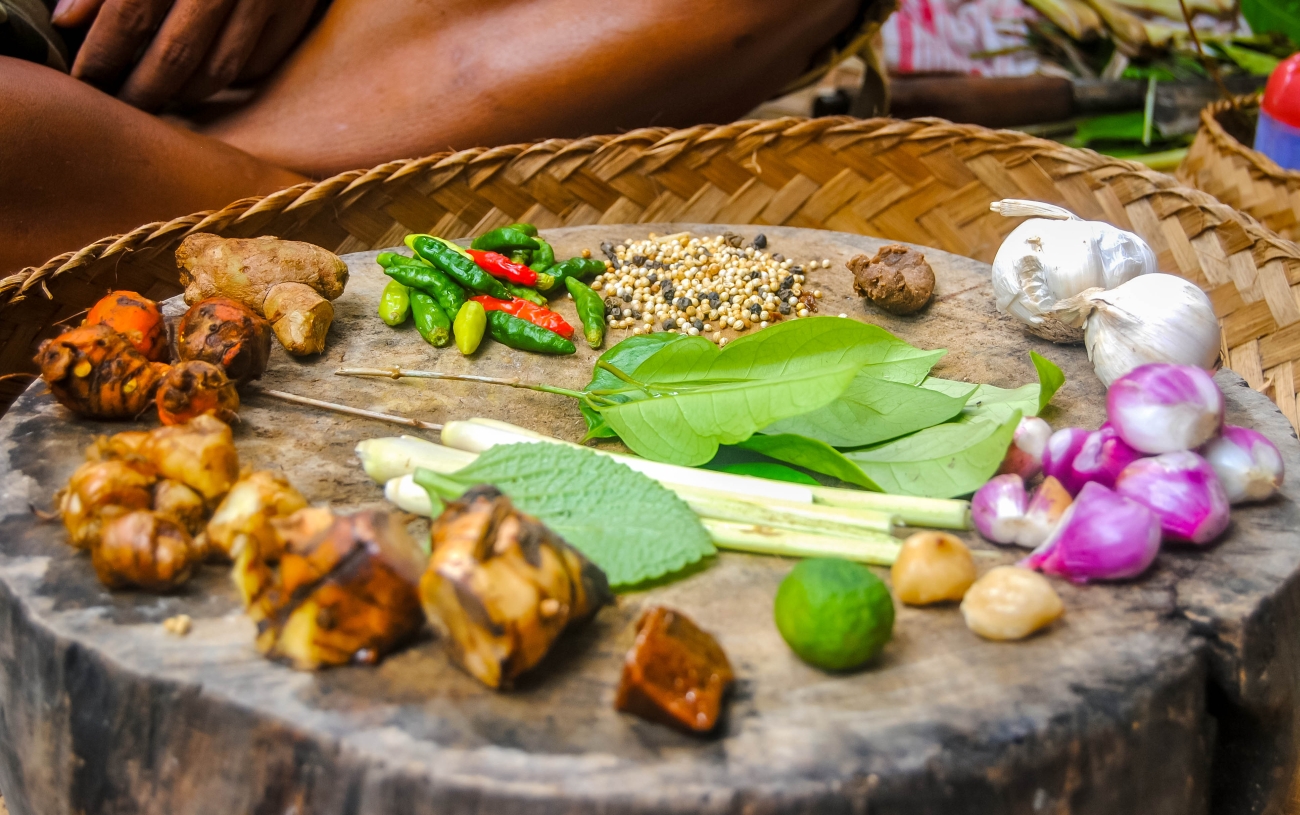
I am seated upon a bamboo mat on the ground, notebook in hand and appetite in tow. We have just returned to our lovely host home after an early-morning market excursion to purchase the necessities for our cooking lesson. Bundles of fresh tuna, ever-so-hideous jackfruit and ruby red tomatoes are just a few of the recognizable purchases. Lucky for us, the majority of ingredients we will be using can be found fresh in the garden where we are staying, only footsteps away from my comfy cross-legged seat.
I wait quasi-patiently while the slab of wood (for cutting) is cleaned and the knives freshly sharpened. I try to ignore the swarm of ants that are also attending our outdoor cooking class, keeping in mind that the food is always washed a final time before ending up on the stove. I remind myself how lucky I am to be in the middle of rice terraces and jungle, attending a private cooking lesson from a local Balinese family. Finally, after a couple of stomach grumbles have already begun, it’s time to get cooking.
The lovely couple, Made and Rinin, are our top chefs for the afternoon, and I couldn’t have asked for a warmer, happier pair to instruct me in the ways of Balinese food. Our menu for the day will include lots of soups — chicken soup, jackfruit soup, and cucumber soup. Fried tuna, tempeh (soybean cake) and sardines steamed in banana leaves will also make an appearance for the main meal. Desert will be sticky rice, dowsed in brown sugar and generously sprinkled with grated coconut. But before we can begin any of the cooking, we have to prepare the one essential ingredient, Bali’s special spice: base gede.
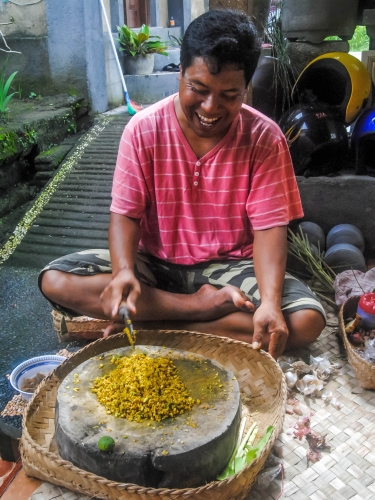
This colorful and aromatic spice is the base for all of Made and Rinin’s recipes. A beautiful assortment of ginger, garlic, shallots, coriander, red and green chilies, lemongrass, brown sugar and galangal are assembled upon our cutting board. Made pauses before adding the final ingredient, turmeric, to make certain he can explain its value as an antiseptic and energizer. He also ensures turmeric will save me from any stray bugs that make their way into our open-air kitchen. Although I try, I don’t think my smile in mock agreement to this last statement is very convincing.
The ingredients for the spice are now ready to be finely chopped. And then chopped again. And again. Finally, my cutting job is approved and we can move the mosaic of spices to a mortar and pestle. I’m allowed to grind at it for a while, until it becomes apparent we will never be allowed to eat if I don’t hand the tool over to my instructors. In mere seconds Made has created a fine paste, and the central spice is finished and allocated to the different dishes we’ll be preparing.
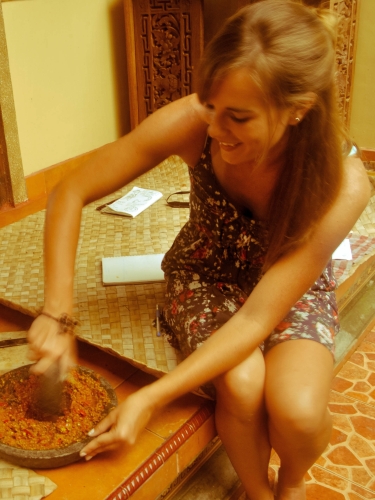
We chop the head off a chicken (thankfully already dead) and drop it into a pot of boiling water with lemongrass and the base gede. Somehow, the massive jackfruit is chopped open and the edible, raw fruits removed so they can follow a similar route. Finally, bites of cucumber and tomatoes, with a handful of coconut, are boiled to create our cucumber soup.
While the soups are simmering, the tuna and tempeh are fried in homemade coconut oil until golden brown. We cover every possible millimeter of the sardines with our special spice before rolling them in banana leaves and sealing them with wooden skewers. I’m not particularly good at getting the skewer in without severing the entire banana leaf, but my kind instructors just laugh it off. The sardines are sent to steam in bamboo baskets adjacent to the rice over a traditional fire out back. I can’t believe that our hosts prefer to use a wood fire to the stove, but Rinin insists that she can tell a difference even if it does take much longer to prepare. Unfortunately I don’t think the caliber of my taste buds is quite up to her standard.
And then finally, after the aromas have teased us for what seems like ages, the boiling and steaming and frying are finished. We can eat.
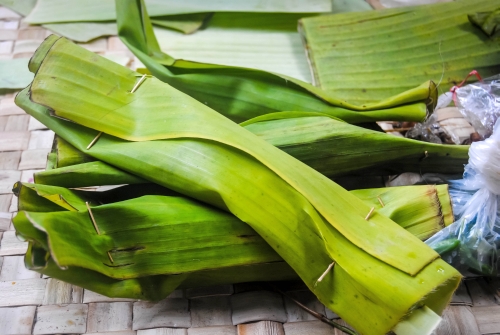
Often Balinese will go off on their own during meals so they can thoroughly enjoy the textures and flavors, but our personal chefs have insisted on joining my friends and I for our meal. We sit upon comfy cushions, still on the floor, having relocated to an outdoor dining area. Thankfully, the labor is well worth the reward. Rice is employed to soak up our numerous soups before we shovel the deliciousness into our mouths.
Made contends that Balinese food tastes better when eaten with your hands, and I think I might actually agree as I forego the use of utensils. Despite the fact that the base gede went into everything we cooked, all the dishes taste unique, balancing spicy, salty and nutty flavors. I can’t get enough of the simple tempeh, although the sardines are a close second. And just when I am about to burst, I remember the sticky rice is still coming my way, a special addition to our meal from Rinin’s heart. It’s incredible, and the subtle sweetness is a welcome endnote to the spiciness of the meal.
I haven’t yet tried to recreate any of the dishes I learned to cook from the class. I’m not sure I’m even going to try, to be honest. What Made and Rinin offered me that day was enough for a lifetime. Through the noises and bartering at the morning market; the colorful array of exotic spices arranged on our wooden slab; the way they made me feel like family, joking at my slow cooking skills compared to their efficient and knowledgeable hands, Made and Rinin gave me a brief glimpse into true Balinese culture. They brought me straight into the day-to-day lives of traditional Ubudians, and for this, I will be forever grateful.

If you’re interested in scheduling your own private cooking class while in Ubud, click here to contact Made and Rinin at the Dukah Village.
About the Author
 Casey Siemasko is an avid traveler, finding her inspiration when exploring new places and meeting new people. When she’s not teaching English or blogging, she enjoys practicing yoga, training for marathons and scuba diving. Oh, and wine. She and her husband comprise the two lovebirds documenting their travel musings at ACruisingCouple.com. Currently residing in Taiwan, they are gearing up for life on the road, starting in Southeast Asia this fall.
Casey Siemasko is an avid traveler, finding her inspiration when exploring new places and meeting new people. When she’s not teaching English or blogging, she enjoys practicing yoga, training for marathons and scuba diving. Oh, and wine. She and her husband comprise the two lovebirds documenting their travel musings at ACruisingCouple.com. Currently residing in Taiwan, they are gearing up for life on the road, starting in Southeast Asia this fall.
The post The Spice Of Balinese Life: Notes From A Cooking Class In Ubud, Bali appeared first on The Expeditioner Travel Site.
]]>The post Having Bourdain Withdrawal? Here’s A Foodie Fix For You appeared first on The Expeditioner Travel Site.
]]>Having a little food porn withdrawal now that Bourdain’s packed up and headed over to CNN to start focusing a bit more on news and culture rather than local eats? Me too, but I’m attempting to address my fix by catching up with the girls over at The Innocents Abroad, the online travel and food show hosted and produced by friends of the site Kate Thorman and Nora Chovanec.
In one of their latest episodes, they met up with Miguel Trinidad, head chef and co-owner of New York City’s own Maharlika Filipino Moderno, which serves Filipino comfort food with an emphasis on authentic and fresh ingredients (as evidenced by their outing to Chinatown in the above video to pick up that evening’s needs). As is pointed out, The Philippines cover over 7,000 islands, and as a result of the various colonizers over the centuries, you can find influences in their food from the Spanish, Chinese, Portuguese, Dutch, British, Japanese and Americans.
In this episode chef Trinidad shows the ladies how to make Pampangan-style sizzling sisig, an appetizer made up from various parts of the pig’s head fried with onions and chili peppers and topped off with an egg. Sisig is a perfect example of a local food borne out of necessity and availability — it is thought that the pig’s head was used as the rest of the pig would be sold for use by the U.S. Military at its numerous military bases. And here you’ve been all this time ignoring that part of the pig. Lesson learned.
By Matt Stabile

About the Author
 Matt Stabile is the Founder and Editor-in-Chief of The Expeditioner. The Expeditioner began in 2008 and is headquartered in New York City. You can read his writings, watch his travel videos or contact him at any time at TheExpeditioner.com. (@TheExpeditioner)
Matt Stabile is the Founder and Editor-in-Chief of The Expeditioner. The Expeditioner began in 2008 and is headquartered in New York City. You can read his writings, watch his travel videos or contact him at any time at TheExpeditioner.com. (@TheExpeditioner)
The post Having Bourdain Withdrawal? Here’s A Foodie Fix For You appeared first on The Expeditioner Travel Site.
]]>The post Top 10 Tapas Bars In Madrid appeared first on The Expeditioner Travel Site.
]]>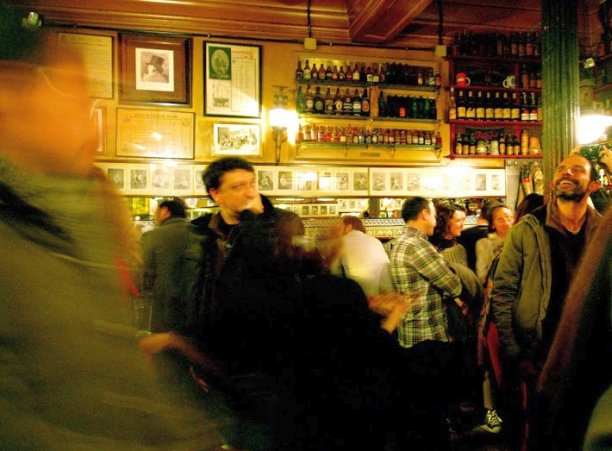
What goes into making a list like the top ten tapas bars in Madrid? Like any big city, it’s difficult to make a top ten for anything, let alone tapas. The below, with a couple of exceptions, reflects my personal bias for down-to-earth, affordable tapas (kind of the whole point, for me) served in venerable bars that have stood the test of time.
The old, the new and the regional — you’ll find a few places you may not have heard of, and those familiar with the city will note the absence of some legendary spots that have, in my opinion, become victims of their own success. Nevertheless, a visit to any the following will guarantee an unforgettable culinary experience with Spain’s national food.
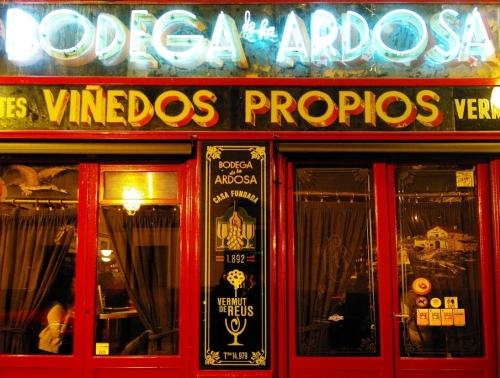
1) Bodega de la Ardosa
I didn’t get his name, but the bartender in La Bodega de la Ardosa is that bartender: he’s the guy in the bowtie who will quietly polish a glass as you pour your heart out over a vermouth. He probably doesn’t even want to speak to you but he looks like he could save your marriage with a casual aside. Everything about this place has a powerful nostalgia to it but nothing comes across as kitsch. Dimly lit, the walls are lined with old wines and beers and grotesque antique prints along with a host of novelties to keep the eyes busy.
Oh yes, the food. Not too much cooking going on here, but the canapé of goose liver paté with cranberries is not a canapé — it’s a mountain — and the empanada is especially good. They’re known for their salmorejo, a thick tomato soup laced with garlic and served chilled like its cousin, gazpacho. Although everything served here is simple and much of it cold, all is of the highest quality.
A joy and a delight, go for the vermouth; go back for everything else.
Bodega de la Ardosa: Calle Colon 13
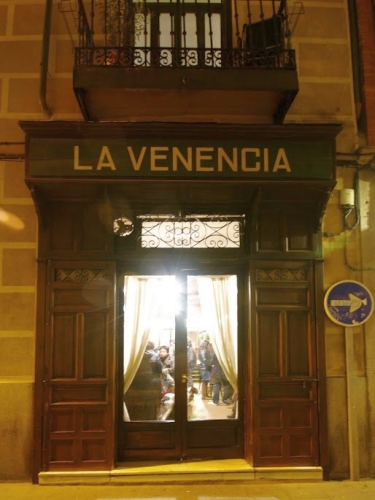
2) La Venencia
They don’t take kindly to photographers in La Venencia. According to the New York Times, it’s because the place was popular with Republican soldiers during Spain’s civil war and, photos being considered incriminating, the rule has never been relaxed. According to the owner I asked, they just find it annoying. Either way, it’s an irony because if ever there was a picture-perfect bar, it’s this one.
We’ve all seen old taverns. Even the ones that aren’t fake often lean on the “old” schtick a little too heavily, but this sherry house on Calle Echegarary in the centre of Madrid is the real thing: a genuine cultural artifact. No evidence whatsoever of any attempt to redecorate since Hemingway had his last manzanilla here. Sparsely furnished and every inch of the bare walls heavily discolored with time and tobacco, the famous wine from Jerez is served from the barrel in five dry varieties.
You won’t see a kitchen; they just slice things: cheese, jamón, mojama (cured tuna), chorizos and salchichones, all of it perfect with the wine. You might not even see a smile behind the bar and the ambiance is hushed, though when addressed, the gloomy looking owners turn out to be very gracious and proud of the place, and who could blame them? The high-ceilinged, humbly furnished taberna might just be the most beautiful bar I’ve ever seen.
La Venencia: Calle Echegarary 7
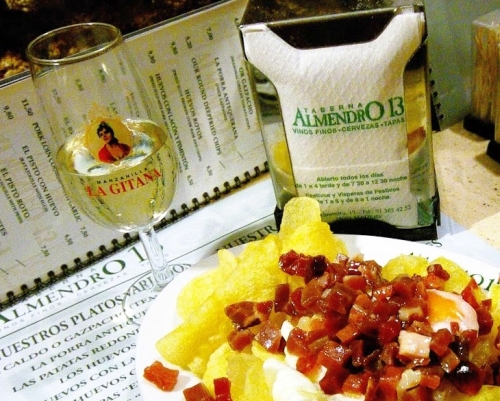
3) Almendro 13
A corner taberna on one of the quieter streets in La Latina, Madrid’s renowned tapa district, there is nothing quiet about Almendro 13. This place is so popular there isn’t even any room for a bar and therefore nothing to lean against with your drink. Everyone sits. If you can’t find a seat, and you probably can’t, you wait. My puppy dog eyes must still be in working order because they find us a couple of stools in the service area, downstairs in the cellar room.
Throughout our short meal we have to get out of the way or move a coat whenever the waiter wants another menu or place mat, but when our food arrives we know it’s been worth it: huevos rotos, a real madrileño dish and one that couldn’t be simpler. It consists of piles of wafer thin potato fries with a soft-boiled egg broken over them, topped with a heap of jamón taquitos (tasty little cubes of cured Spanish ham) — perfect with a glass of manzanilla on a tiny stool with a waiter leaning over you. The place is informal, friendly and a bustling Madrid highlight.
Almendro 13: Calle Almendro, 13
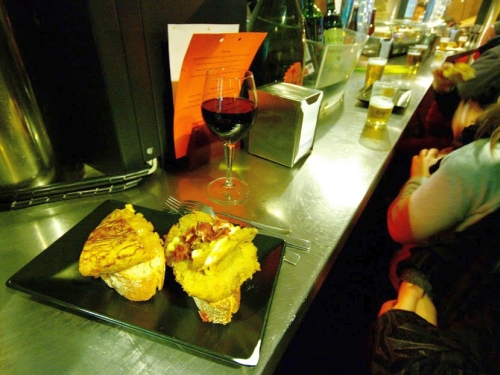
4) Restaurante Txirimiri
In centrally located neighborhood of La Latina, Restaurante Txirimiri is a relatively new addition to the tapas scene. At the center of Spain, Madrid is a city where all of the regional cuisines are showcased: Andalucia, Asturia, Valencia — you name it. In Txirimiri’s case, it’s Basque food in the form of pinxtos — elaborate little snacks piled onto slices of bread. Well, some of them are elaborate — one of the nicest ones here is a simple slice of tortilla de patata, all gooey runniness and caramelized onion. Another is the pinxto of breaded mushrooms with jamón. There is a dining room at the back and a sit-down menu of quality beef, fish, ibericos and something called Bull’s Tail Bikini — a reason to go back if ever there was one.
Restaurante Txirimiri: Calle del Humilladero 6
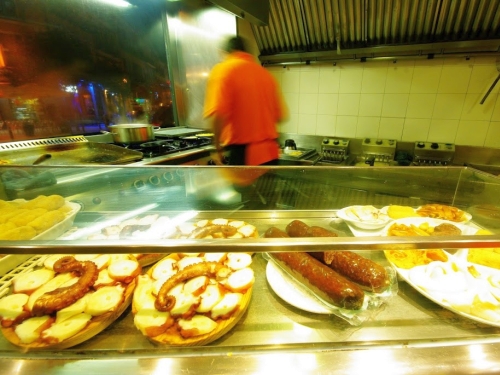
5) Las Bravas
The overall impression is that of day-glo orange — it’s the colour of the polo shirts the staff (all men of a certain age who look as if they’ve really lived) wear and of the sauce they douse the potatoes with. The color is impossible to miss because the place is lit up like a fish and chip shop. The ambience is more takeaway than bar, but bar it is; the floor strewn with discarded paper napkins and the roar of the customers deafening.
Patatas Bravas is eaten all over the country and is one of the few Spanish dishes that has real spice to it, but it isn’t just any old version that they serve at Las Bravas. Oh no, these people claim to have invented it, sometime back in the fifties, and there’s a patent on their product to back their claim up.
They cook in a window overlooking the street in the Espoz y Mina branch (there are three outlets within a few streets of each other), so all is well on the hygiene front, apart from the floor. You can also have morcilla (blood sausage) or pulpo (octopus), but in a Catholic country, coming here and not trying the patatas is probably some kind of sin.
Las Bravas: Calle Espoz y Mina, 13 and two more branches nearby.
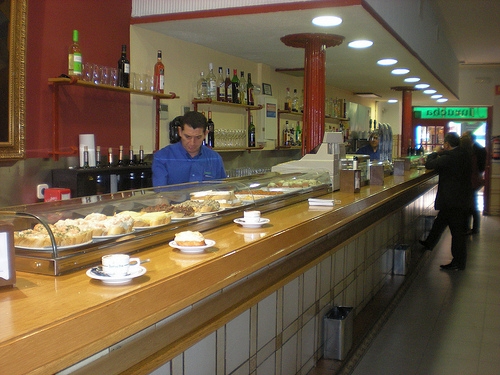
6) Jurucha
Jurucha has been opening its doors at 19, Calle Ayala, in Madrid’s upscale Salamanca district since 1961. That’s a long time, but it’s only going to take you a couple of seconds to decide whether you like the place or not. Not at all upscale, this is exactly the kind of Spanish bar that will have some of you turning around in the doorway, and no bad thing — at least the rest of us will have a tiny bit more room to squeeze into this long, crammed and uproariously noisy space. If none of this sounds appealing, don’t even bother, but if a bar that knows what it’s doing and does it well sounds good to you, don’t miss Jurucha. Quality ingredients and simple canapés prevail with an unexpected menu highlight I haven’t seen elsewhere: a hard-boiled egg croqueta.
Jurucha: Calle Ayala 19
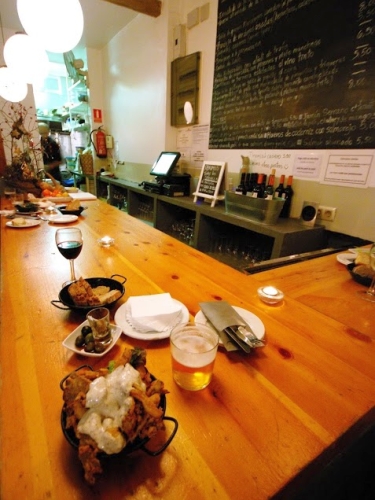
7) Baco y Beto
In the lively and gay-friendly Chueca area, Baco y Beto is another relative newcomer. The interior is sharp and there’s just enough light to get a good look at your food. Just as well because this is some good looking food. Presentation is important to the owners here; even your cutlery arrives in a neat little silver paper envelope.
With raciones averaging at around the €11 mark and medias at around €6.50, lingering here will cost you a little more than it would in an old-school tapas joint, and aficionados of the traditional tapa scrum might find the atmosphere a little subdued. However, with interesting selections like breaded mushrooms in a truffle alioli and shredded lamb on a caramelized plantain cake on offer, Baco y Beta is a must-try for the foodies.
Baco y Beto: Calle Pelayo 24
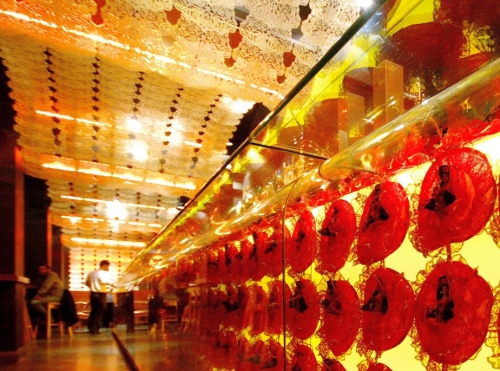
8) Estado Puro
The brainchild of chef Paco Roncero, Estado Puro is on a mission to share the traditional flavors of the Spanish tapas in new and exciting ways. Old favorites emerge from an avante garde kitchen in surprising forms: ensaladilla rusa, patatas ali oli, croquetas de jamón and so on.
The first treat here though is visual. On Plaza Cánovas del Castillo and in a new branch on Plaza del Angel in the Huertas district, the bars are decked out in post-kitsch fabulousness. In Angel, plastic bailaora dolls stud the front of a bar that stretches away into a clattering orange take on the flamenco aesthetic. Estado Puro is all about celebrating Spanishness by reinventing it.
It would be a very strange tapas joint indeed that couldn’t put a tortilla de patatas in front of its customers and Estado Puro is no exception. What is exceptional is the twist: their “21st Century Tortilla” comes in a glass. The trio of traditional tortilla elements are served up in a creamy, comforting concoction that replicates the flavors of the famous Spanish omelette in liquid form.
Estado Puro: Plaza Cánovas del Castillo, 4
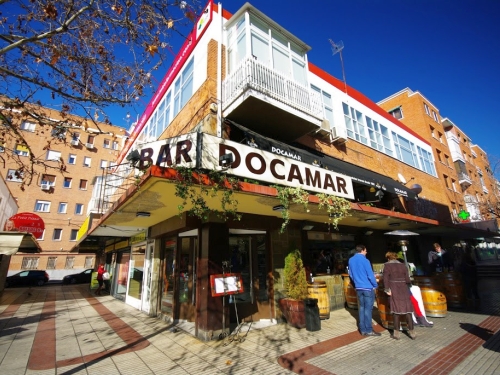
9) Docamar
Docamar is slightly outside the center of Madrid, making it more of a neighborhood place, but still very reachable by bus or leisurely walk. Its appearance on this list makes patatas bravas the dish of the day because, as it is in Las Bravas, that’s the speciality here. It’s further down in the ranking because it doesn’t quite have the pedigree of its more central rival but there isn’t much between the two bars in terms of flavor — the truth is the potatoes are fried well in both and the bright orange, spicy sauce is very similar. Docamar will throw you a few for free when you order a drink, and with seating areas upstairs and down probably provides the more comfortable experience. My advice? Patatas bravas are always a good idea — so go with both.
Docamar: Alcalá, 337
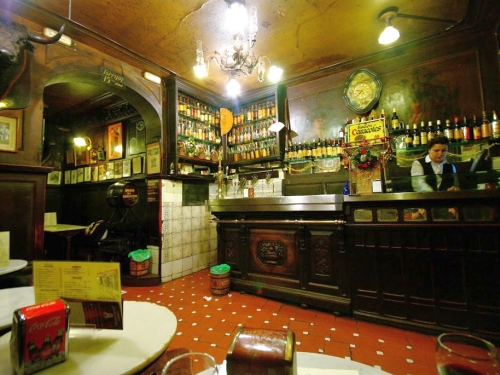
10) Taberna Antonio Sánchez
Maybe I’m too easily seduced by the antique, but Taberna Antonio Sánchez is my kind of bar. Hidden away in the gritty Lavapiés neighbourhood near the city center, everything from the façade out front to the dining room at the back speaks of a bygone age. I’m sure the kitchen is spotlessly clean these days but the owners have been careful to leave a layer of dust over the shelves of sherry bottles and bull’s heads (the bar is named for the original owner’s son, who died in a bullfight).
It’s the oldest in central Madrid, having opened in 1830, but the food is fresh and they specialise in snails, fried eggs, tripe and Olla Gitana, a gypsy stew.
Taberna Antonio Sánchez: Calle de Mesón des Paredes 13
By Robin Graham

ABOUT THE AUTHOR
 Robin Graham has written for In Madrid, The Expeditioner and the Matador Network. He regularly contributes to The Spain Scoop and blogs at the award-winning Alotofwind. Follow him on Twitter: @robinjgraham.
Robin Graham has written for In Madrid, The Expeditioner and the Matador Network. He regularly contributes to The Spain Scoop and blogs at the award-winning Alotofwind. Follow him on Twitter: @robinjgraham.
The post Top 10 Tapas Bars In Madrid appeared first on The Expeditioner Travel Site.
]]>The post Top 10 Breakfasts From Around The World appeared first on The Expeditioner Travel Site.
]]>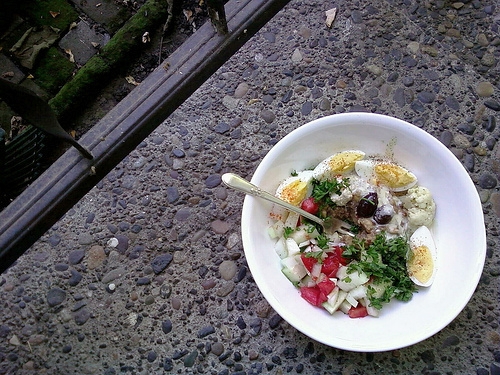
In case you’re one of those people into so-called food porn (come on, who isn’t?), Rough Guides has compiled a list of the best breakfasts you can find around the world to fulfill your inner-most culinary desires.
Included in the list is Phô, from Vietnam, which can be a little hard getting used to for Westerners unaccustomed to steaming-hot bowls of soup at 7 a.m. (or at least eaten at 7 a.m. after waking up — not after a long night out). Also mentioned is Egypt’s stewed fava bean dish, Ful Medames (above); Lebanon’s Manouché (chewy flatbread topped with za’atar — wild thyme and oregano — and olive oil); and of course the Greek classic, yogurt and honey, the breakfast/dessert that only seems healthy when compared to the classic American diner breakfast of fried eggs and bacon.
[The world’s best breakfasts – ten great ways to start the day]
[Medames by Michelle Morgan via/Flickr]
The post Top 10 Breakfasts From Around The World appeared first on The Expeditioner Travel Site.
]]>The post Watch As Omar From “The Wire” Runs Into Rival Gang Member With Bourdain [Video] appeared first on The Expeditioner Travel Site.
]]>In the recently aired series finale of No Reservations, Tony, while exploring Brooklyn, had the awesomely crazy coincidence of eating a Caribbean meal with Brooklyn native Michael K. Williams (or Omar as he’s better known from The Wire) in Crown Heights when, who should show up, but Jamie Hector, the actor who played Marlo Stanfield, bitter rival to Omar in the show (there to order up a big to-go cup of sea moss — a Caribbean drink made with seaweed extracts and known for its, as Omar points out, baby-making nutritional value).
[No Reservations: Bourdain Visits Crown Heights]
The post Watch As Omar From “The Wire” Runs Into Rival Gang Member With Bourdain [Video] appeared first on The Expeditioner Travel Site.
]]>The post Where To Eat In New York City This Fall appeared first on The Expeditioner Travel Site.
]]>
We at The Expeditioner know you’ve heard about the sights, nightlife and legendary attitude of New York a million times. So we’re going to focus on something just as important: the food. And hopefully we’ll introduce you to a few New York landmarks you’ve never heard of.
Now, we know what you’re thinking, it must have taken ages (not to mention lots of money) for us to run all over town sampling New York’s finest eats. Well, not that we wouldn’t do that for our dear readers. But, luckily for us, we didn’t have to. This summer, chefs from some of the tastiest restaurants across the five boroughs gathered in Prospect Park, Brooklyn, for The Great Googa Mooga, a two-day food and music extravaganza. I and my trusty photographer were on hand both days to brave the extreme temperatures, four-hour lines and disturbing lack of water to bring you a list of some of the best places to eat here in New York. You’re welcome.
Here were some of our favorites from the festival and where you can find them around the city.
Appe-Teasers
First things first. Before we go telling you where to go to stuff yourself until you can’t see straight (and don’t worry, we’ll get to that), here are a few places with delectable small bites. After all, slow and steady wins the race.
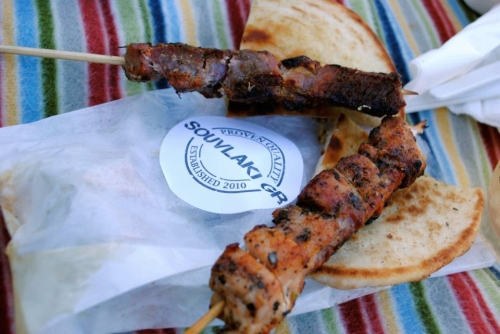
Souvlaki GR
The Greeks are great at a lot of things, such as creating democracy, pontificating about philosophy and festively breaking dishes. But, if there’s one thing the Greeks are really great at, it’s cooking. We New Yorkers are extremely proud of the fact that you can find any type of cuisine in our fair city, and that it will taste as good as it would in its home country. So, when I tell you that you don’t need to go to Greece to get amazing souvlaki, I speak the truth. The namesake of this Lower East Side eatery, available in pork and chicken, is juicy, tender, tasty and, best of all, portable, since it comes on a stick. Craving more than just meat? We recommend the Greek fries, which are hand-cut and sprinkled with Feta cheese.
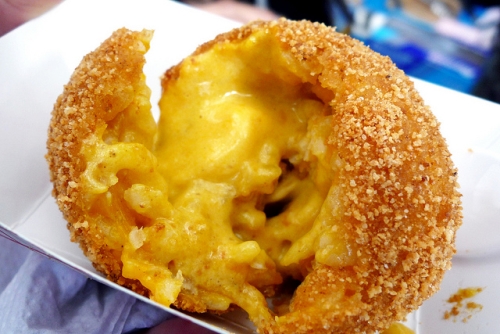
Arancini Bros.
The Arancini Bros. are famous for one thing and one thing only: balls. Rice balls, that is. Arancini is actually the Italian word for these deep-fried wonders. So, unfortunately, you won’t find any picturesquely mustachioed members of the Arancini family at this Brooklyn-based establishment. Or any brothers, so far as we know. But you will find over 20 types of rice balls, both sweet and savory. Some of our favorites include the Lobster, Three Cheese, Strawberry Mascarpone and Nutella. And, no, we didn’t try them all in one sitting. Okay, yes we did. Don’t judge us.
First Course: Between the Bread
It is a truth universally acknowledged that almost everything tastes better between two slices of bread. So, fittingly, the next few stops on our food tour feature the kind of delectable sandwiches that lunchboxes all over the nation dream about at night.
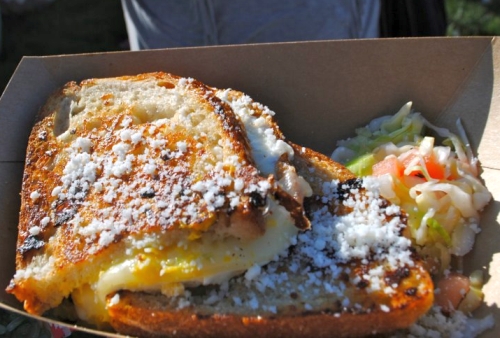
Little Muenster
Just down the block from Souvlaki GR, you’ll find Little Muenster, a specialty restaurant whose tagline is “Super Fancy Grilled Cheese.” We couldn’t have put it better ourselves. At The Great Googa Mooga, we waited two-and-a-half hours for our sandwich from Little Muenster. Actually, in the interest of full disclosure, I waited two-and-a-half hours for our sandwich. My trusty photographer sidekick was on the beer line (for an equally long time, I might add).
Anyway, during the wait, all I kept thinking was, “There is no way this sandwich is going to be worth all this suffering.” But, for the sake of the faithful Expeditioner readers, I stuck it out. Finally, I got to the front, ordered our sandwich: a blend of Oaxaca and Cotija cheeses with corn puree, jalapeño and tomatillo, and hunted down my sidekick and our brews. After that, I ate my words. Literally.
This sandwich was so good that, if there had been enough hours in the day, I would have gotten back on line for a second one. And then a third. The organic bread was crunchy and buttery. The cheese was creamy and gooey. The corn puree, jalapeño and tomatillos were flavorful and spicy. Little Muenster is all about comfort food to the umpteenth degree. At the restaurant, you’ll find seven more grilled cheese varieties, from the classic (White American and Bacon) to the upscale (Asiago, Parmesan, Butternut Squash and Sage Brown Butter) as well as Tomato Soup for dipping.
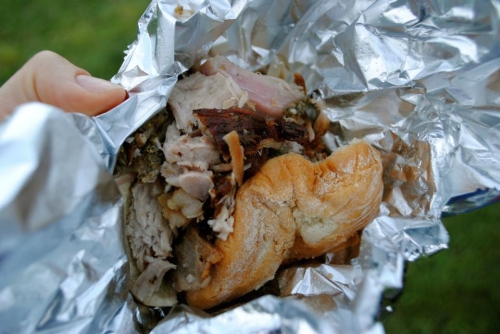
Porchetta
There was one food stand that my partner insisted we try: Porchetta. This East Village spot has a simplistic approach to food. They marinate the pork in a variety of herbs and spices, cook it slowly at a low temperature, slice it, slap it on a thick bun and blow your mind with it. The meat is tender and melt-in-your-mouth good, the bread is soft and tasty, and the combo is filling enough to make the hungriest carnivore roar with delight. Porchetta’s menu is a bit small, as it’s basically just the sandwich, a soup, a salad and some sides, but with a namesake this good, what more do you need?
Kutsher’s Tribeca
One of the most storied sandwiches in New York is the pastrami on rye. You’ll find it nearly any place sandwiches are made. However, if you’re going to do it right, you’ve got to get one from a kosher deli. Kutsher’s Tribeca, an upscale Jewish American restaurant, is a bit pricey, but absolutely worth it. Their house-cured pastrami is tender, smoky, peppery and tastes divine on rye bread, with or without mustard. Kutsher’s also serves up a variety of other kosher favorites, including Reuben sandwiches, Mrs. Kutsher’s matzo ball soup and bagels with shmear. Don’t forget to eat your pickles!
Second Course: Why Did the Chicken Cross the Road? Who Cares? Let’s Eat It
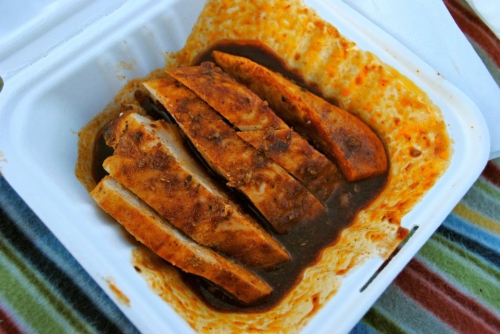
Red Rooster
In case you didn’t know, this Harlem-based soul food joint from famed chef Marcus Samuelsson is very popular. So popular, in fact, that it often takes weeks to get a reservation. We were able to cut down on this time (slightly) by waiting in line here. However, those in-the-know are privy to the fact that you can skip the lines and reservations by sitting at the restaurant’s bar. Shhhh, don’t tell anyone else!
The Red Rooster booth here — which was manned by Samuelsson himself — served up Berbere roasted chicken with barbecue sauce. Though they sold like the proverbial hotcakes, we were able to get our hands on a plate, and it was life-changing. The only way to describe it would be to say that it was everything you would ever want in a chicken and barbecue sauce dish: perfectly seasoned chicken; sweet, sugary sauce; and ooey, gooey messiness. The kind of meal where half is left on your face and fingers after you’re finished. And, let’s face it, you wouldn’t have it any other way. Uptown at the actual restaurant, you’ll find a menu chock-full of other soul food faves like corn bread, grits and collard greens.
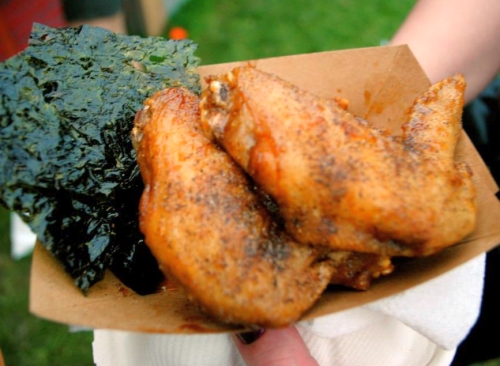
Kasadela Izakaya
An Izakaya is a Japanese restaurant/bar popular among businesspeople for the Far East version of Happy Hour. At Kasadela Izakaya, you’ll find the atmosphere and, thankfully, the menu of a Tokyo sake den in Manhattan’s East Village. Best of all, everything on the menu is reasonably priced, so you can try a few different dishes (or sakes) without breaking the bank. We recommend the Tebasaki, which are Japanese-style chicken wings. The wings are double-fried without batter or breadcrumbs and coated in soy sauce, black pepper and garlic, resulting in a dish so juicy, spicy and finger-licking good, it’s nearly indescribable.
Looking for some small bites to go along with your sake? Try the Nori, which is roasted seaweed. We were a bit scared of it at first, thinking it would look (and taste) like the kind of seaweed you see floating past your legs at nearby Rockaway Beach. But it was warm, crunchy, salty and melted in your mouth, like a healthier version of potato chips.
Get Your Just Desserts
By the time we got to dessert at Googa Mooga, we were tired, hot, stuffed and wanted nothing more than to go home and rest. Until we heard what was available, that is.
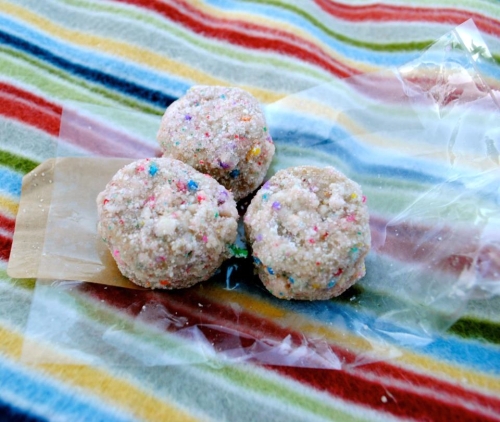
Momofuku Milk Bar
Three words: birthday, cake and truffles. These were the hands-down best things we ate over our entire two-day stint at Googa Mooga. They were so good, in fact, that I’ve been back to Momofuku twice since, even though it’s totally out of my way when I’m commuting home from work.
Imagine a ball of cake batter mixed with sprinkles, covered in powdered sugar and ready to eat (but without the risk of salmonella from eating raw eggs) and you’ll know what it’s like to have a Momofuku Birthday Cake Truffle. At the festival, we bought a pack of three. We each ate one. Then, though they are about the size of a Snapple cap, we cut the third one in half to maximize the amount of truffle we got to eat. They’re that good. Even better, Momofuku has a full menu of sweets, including pies, cookies, ice cream and more truffle flavors.

Big Gay Ice Cream Shop
This East Village sweet shop has some of the best homemade ice cream flavors in town, paired with some of the most unique toppings (sea salt and cayenne pepper, really?). BGICS is the kind of place where you look at the menu, think “that can’t be good,” and then get pleasantly surprised.
For example, at The Great Googa Mooga, they were serving up Ginger Curry Milkshakes. “That can’t be good,” I thought, picturing the pinkish flakes I always — ahem — gingerly scrape off my sushi with a look of disgust. And then, you guessed it, I was pleasantly surprised. The flavor was there, but sweeter, and light enough that you weren’t overwhelmed by it. Plus, the shake had the perfect level of creaminess and didn’t get watery, despite the heat of the day. At the actual shop, you’ll find a great selection of ice creams and toppings, as well as offerings from such other New York eateries as Melt Bakery, Danny Macaroons and La Newyorkina.
But wait, there’s more! The Big Gay Ice Cream Shop is also available in truck form! Check out their official website or Twitter feed to find out where you can catch the Big Gay Ice Cream Truck.
Pass the Pepto
There you have it, foodies. Some great places to try in New York City this fall. I don’t know about you, but I am stuffed. Now, if you don’t mind, I’m going to go take a nice, long, carb-filled nap. Happy eating!
*
Souvlaki GR
Souvlakigr.com
116 Stanton Street
Arancini Bros.
Arancinibros.com
940 Flushing Avenue (Brooklyn)
Little Muenster
Littlemuenster.com
110 Stanton Street
Porchetta
Porchettanyc.com
110 East 7th Street
Kutsher’s Tribeca
Kutsherstribeca.com
186 Franklin Street
Red Rooster
Redroosterharlem.com
310 Malcolm X Boulevard
Kasadela Izakaya
Kasadela.com
647 East 11th Street
Momofuku Milk Bar
Momofuku.com
251 East 13th Street
Big Gay Ice Cream Shop
Biggayicecream.com
125 East 7th Street
By Cindy Klimek
[All photographs by Alexis Michalakis]

About the Author
 Cindy Klimek is a Brooklyn, New York, native and recent graduate of the University of Sussex in Brighton, England. She aspires to become a multilingual travel writer/filthy rich jetsetter.
Cindy Klimek is a Brooklyn, New York, native and recent graduate of the University of Sussex in Brighton, England. She aspires to become a multilingual travel writer/filthy rich jetsetter.
Alexis Michalakis is a photographer/foodie/food pic aficionado from Brooklyn, New York. She is currently working on a coffee table book of her work. The girls have been friends since freshman year of high school. This is their first creative collaboration.
The post Where To Eat In New York City This Fall appeared first on The Expeditioner Travel Site.
]]>